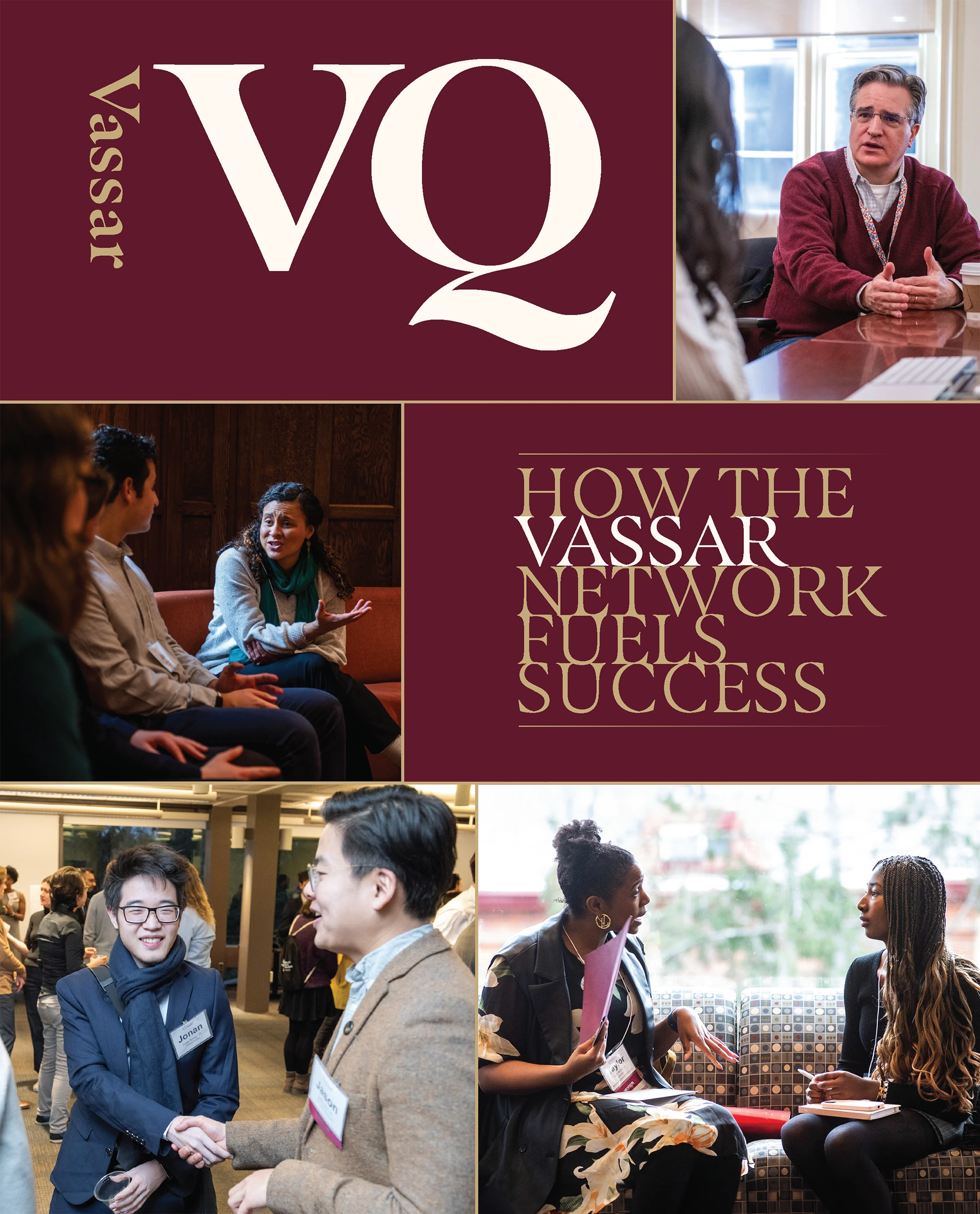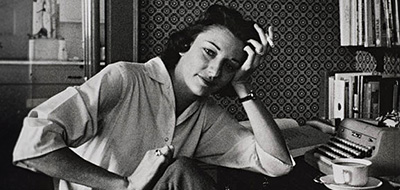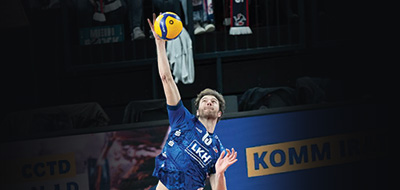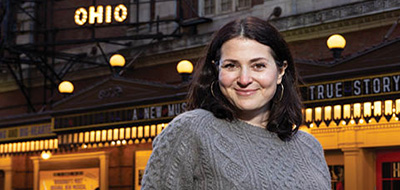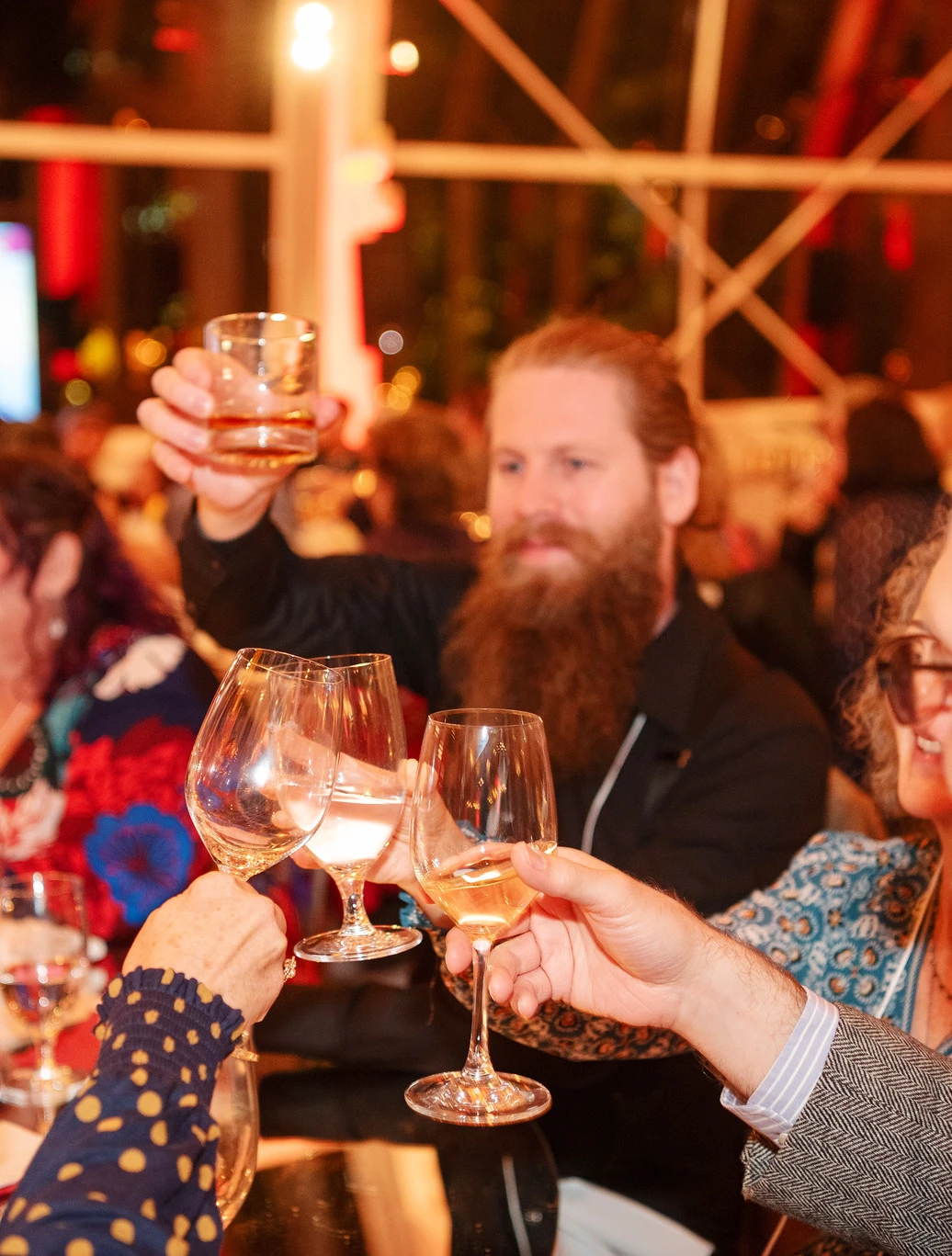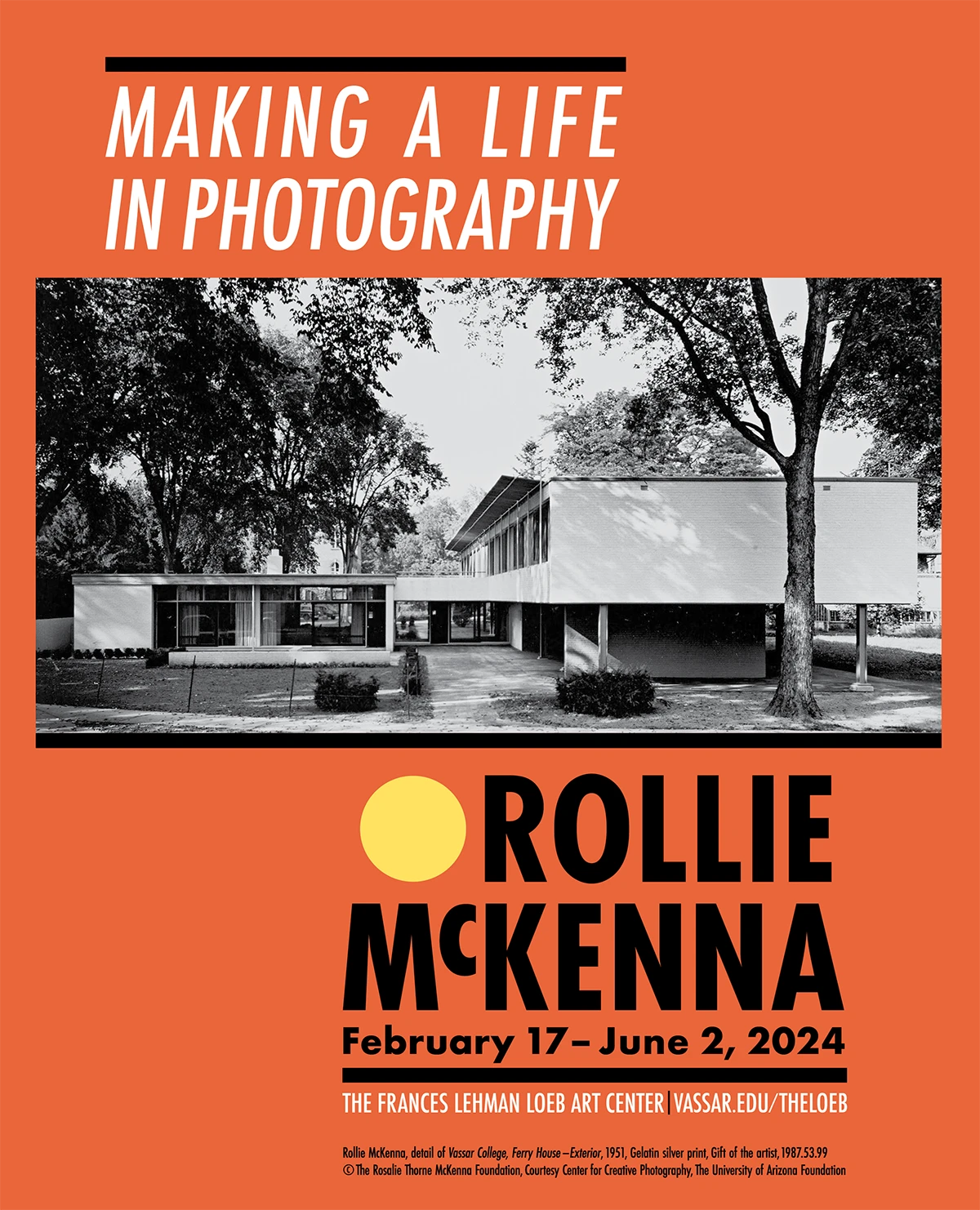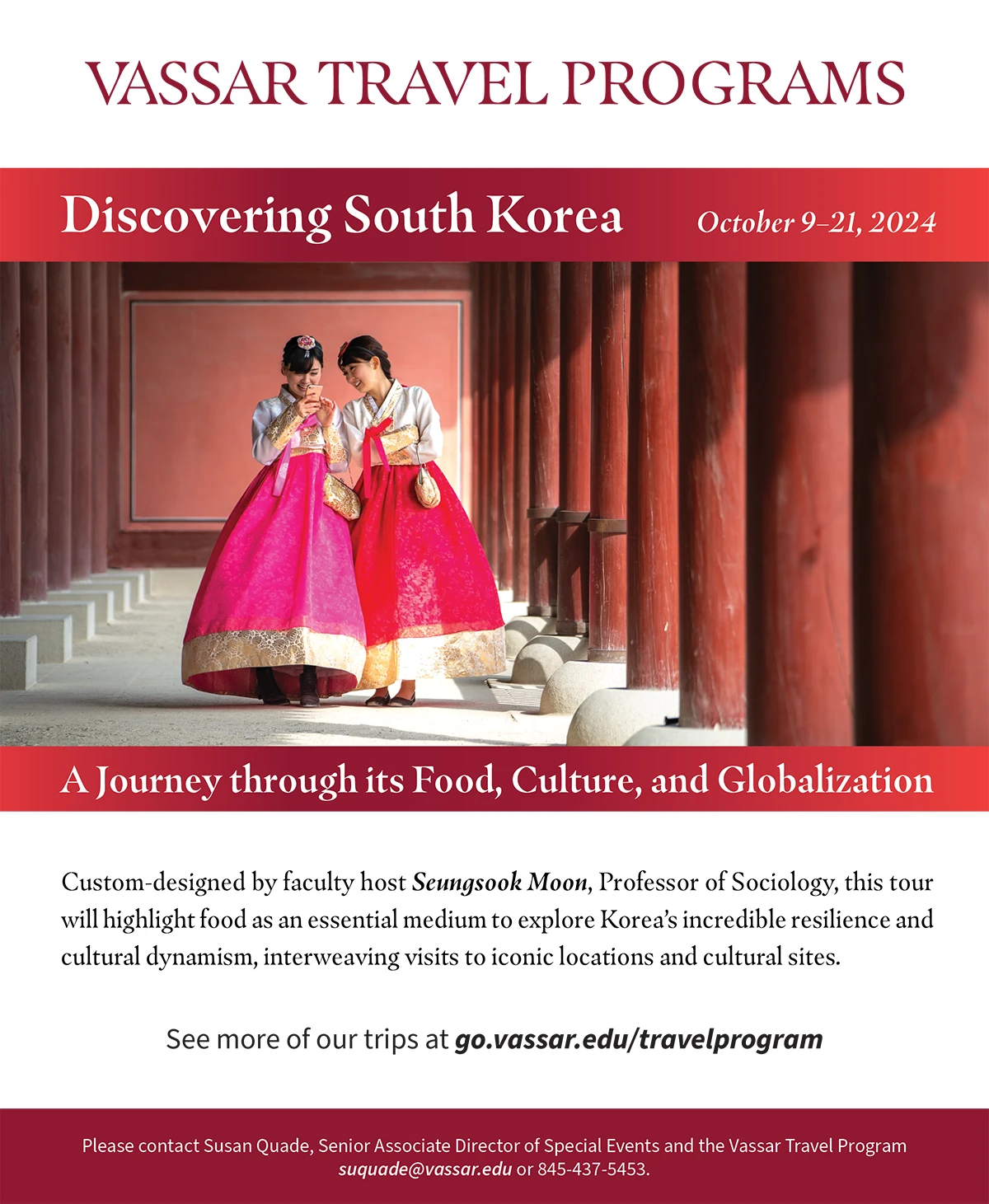VOLUME 120 ISSUE 1
THE ALUMNAE/I QUARTERLY
Contents
Features
Departments
A Real Drag, Part 2
Drag queens don’t mock women; drag kings don’t mock men. However, there is often an exuberant freedom one may sense when a man embraces the effeminacy he’s been shamed for since early childhood, and that often shows in drag performances. My sister got to slide by as a “tom boy” for all her childhood, whereas I was labeled a “faggot” before I understood the word—a rather universal reality for gay, trans, and other boy children. Reclaiming the right to effeminacy by doing drag can be an outlet for this cruel experience.
I would ask the letter writer: As a woman of the 1960s, do you recall the freedom you felt when you were allowed to wear pants on any occasion that would “normally” have required a dress? Were you trying to mock men and male sexual expression by wearing “men’s” attire? When men grew their hair long beyond their shoulders in the late 1960s, were they mocking women and female sexual expression?
Heterosexuals normalized this style-swapping decades ago, and no one equated it with “blackface.” Gay men who express a feminine side in drag are embracing it with ferocity and courage. And really, when’s the last time you wore your ’50s Dior cinch-waist number with five-inch heels, Jungle Red lipstick, and a wig that would make Dolly Parton green with envy? If that is an expression you want to reclaim, it’s there for you to do it without any backlash or derision. That is your privilege.
Concord, MA
Native Trees
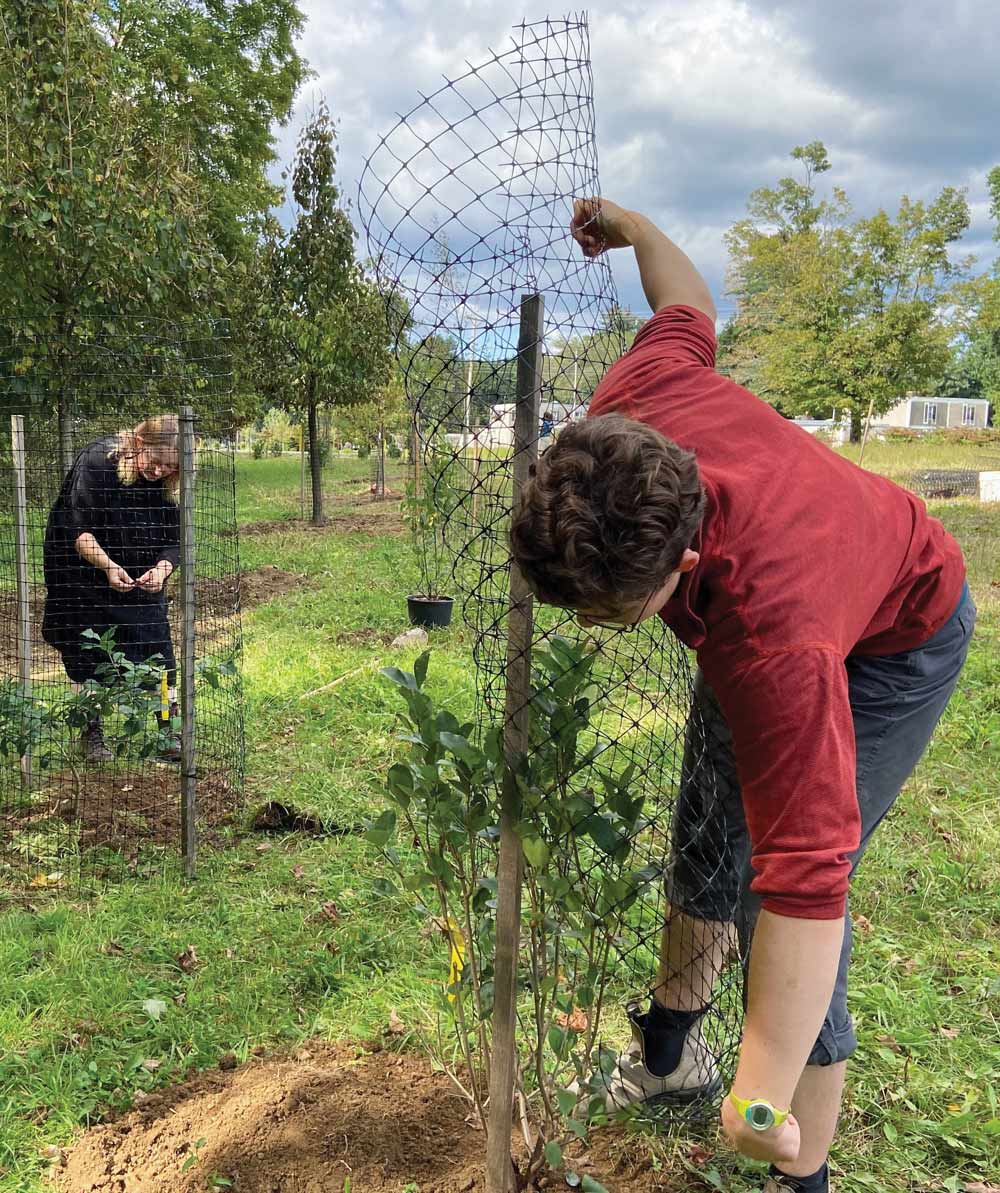
I hope that the folks who manage this wonderful resource would agree with a former biology student and retired botanist that sticking to native tree species at the Preserve is a good idea!
Hillsborough, NC
Laura, you are correct. Boxwood and sorghum should have been American basswood and sour gum. Volunteers planted native trees and shrubs representing 45 different plant species selected based on site characteristics as well as the at-risk status of the species.
We value your feedback on the magazine’s content. Please send letters to vq@vassar.edu.

- Publisher
Alumnae/i Association of Vassar College
Monica Vachher ’77, President - Vice President, Communications
Victoria Grantham - Associate Vice President, Editorial and Publications; Editor, VQ
Elizabeth Randolph
elrandolph@vassar.edu - Art Direction and Design
Aidan Gallagher
Daniel Silva - Print Production
Daniel Lasecki - Class Notes
Nada Glick ’61, Coordinator
Joan Giurdanella, Copy Editor - Editorial Assistants
Sufana Noorwez ’24
Emilee Busby ’26 - Editorial Offices
124 Raymond Avenue, Box 647
Poughkeepsie, New York 12604
845.437.5447 Fax 845.437.7239 - Postmaster
Send address changes to Central Records, Box 14, Vassar College, 161 College Avenue, Poughkeepsie, New York 12603 - Yearly Subscriptions $15
- Unsolicited Manuscripts
We discourage the submission of unsolicited manuscripts or stories written without prior consultation with the editorial office. However, we do welcome story ideas and pitches. Please email vq@vassar.edu with your suggestions. - Articles reflect the opinions of the writers and not necessarily those of the magazine, AAVC, or Vassar College. Vassar, the Alumnae/i Quarterly, is published in the spring, summer, and fall/winter by the Alumnae/i Association of Vassar College (AAVC).
- Mission
AAVC is a living bridge whose mission is to ignite powerful connections to Vassar, to each other, and the world. - Affirmed 2013.
Copyright © 2023 AAVC
The Search for Meaningful Work Starts Here
hat will my student do with a liberal arts degree?” It is a common refrain among Vassar parents and loved ones. Some ask it out loud in the large public spaces of Orientation or Families Weekend; others utter their anxieties in hushed tones and only to their trusted peers; but most think it at one time or another and hope all will be well.
The truth is that the vast majority of Vassar graduates (93 percent) have jobs, competitive fellowships, or are accepted into graduate or professional school within six months of graduation. Moreover, according to the Georgetown University Center on Education and the Workforce report in 2020, the return on investment (ROI) of a liberal arts college degree is nearly $1 million over 40 years. This is higher than degrees at most types of colleges and very close to the ROI of degrees from universities with the highest research activity. The study also concluded that although early-career salary levels for liberal arts graduates tend to be lower than for those of more specialized undergraduate degrees, over a career, the salary gains of liberal arts graduates far outpace their counterparts.
Vassar seeks to prepare students not only for a job but also for a lifetime of enriching career(s). With the opening of the Bartlett Center for Admission and Career Education, we are developing “a liberal arts approach to career education.” Concretely, this means the work of a liberal arts student includes not only their academic curriculum but also exposure to longer-term thinking about their capacities and what they want to contribute to the world.
The liberal arts approach to career education at Vassar is tailored to the developmental moments of students. For instance, the first year is about reflecting on the questions “Who am I?” “What are my values?” and “What am I good at?” Although the answers to these queries shift over time, starting early on the path of self-discovery signifies an important—and often overlooked or rushed—part of career education.
Emerging from their first year of college with more sense of themselves, sophomores have new questions: “What’s out there?” “What are the various industries, jobs, and careers to pick from?” Exposure to myriad options and mentors who can give honest answers to those questions is accomplished through programs such as Sophomore Career Connections—when alums from a diverse set of occupations and fields come on campus for a weekend of structured mentoring with sophomores.
More than 90 percent of Vassar students complete an internship before graduation, well above the national average. With greater clarity about who they are as well as what career options are out there, juniors are prepared to make a match, ideally landing an internship or other meaningful experiential learning opportunity to test their capacities in a field where they have interest. Generous grants and fellowships are available for students to support their summer plans, from the Internship Grant Fund and Tananbaum Fellowships to the Thompson Bartlett Fellowships (focusing on STEM and economics) and the Burnam Fellowships (focusing on community-based grassroots and nonprofit organizations), and many more. Vassar also supports students who want to start their own ventures. Our Innovation Lab focuses on maker technology, for example, while the Ellen Rudnick ’72 Student Entrepreneur Fund promotes start-up efforts.
At last, it is senior year. Career education at this stage is about applying for permanent employment, post-graduate fellowships (Vassar remains a top producer of Fulbright Scholars), and graduate schools (86 percent of Vassar’s pre-law and 78 percent of pre-medical applicants are accepted into law or medical school, much higher than national averages). Senior-year career education also includes access to workshops on financial planning, finding housing, salary negotiation, and other practical skills to enable a smoother transition after college.
The different phases of career education may unfold linearly or less predictably for some. Students sometimes walk the well-trodden paths on campus, or they make their own path. Regardless, the liberal arts approach to career education at Vassar seeks to support students in the cycle of self-reflection, inquiry, experimentation, and discovery—a progression that will be repeated, and relished, many times over an enriching career and meaningful life.
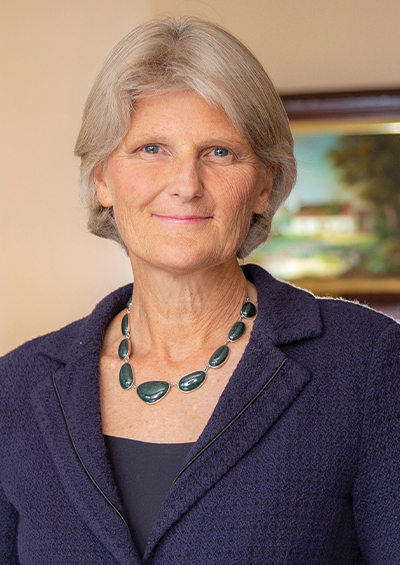

Elizabeth H. Bradley
President
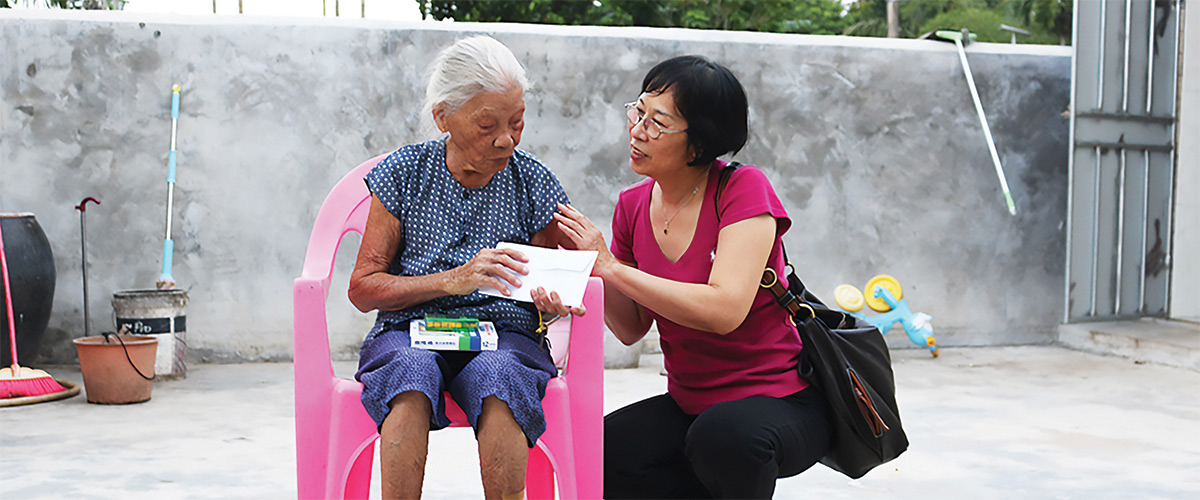
Courtesy of Professor Qiu
AI Project Preserves History of “Comfort Women” During WWII
Nine years later, Qiu is playing a major role in a new project employing artificial-intelligence technology that she hopes will shed further light on the plight of these women. The initiative, The Eternal Testimony of Chinese “Comfort Women,” is based on interviews with 94-year-old survivor Peng Zhuying that enable participants to ask Peng questions about her experiences and hear her responses in a real-time conversation.
Peng was born in 1929, and when she was nine years old, her town in Hunan Province was bombed by the Imperial Japanese Army during the Japanese invasion, killing her mother and brother and leaving Peng blind. Six years later, Peng was kidnapped and imprisoned by Japanese troops.
The project preserving Peng’s oral history was inspired by Holocaust survivors’ testimonies preserved as part of the Dimension in Testimony program by the University of Southern California’s Shoah Foundation. It is an international collaboration of the “Comfort Women” Justice Coalition (CWJC) in the U.S., USC San Francisco, and the Nanjing Museum of the Site of the Lijixiang Comfort Stations in China. Qiu has been serving as Executive Director of the project since 2020. Lillian Sing and Julie Tang, two retired San Francisco Superior Court judges and co-founders of CWJC, led the fund-raising and initial planning for the project. Many individuals and organizations contributed to the project and Vassar students also provided assistance, Qiu said; USCSF provided the AI technology.
During the 1930s and 1940s, thousands of Chinese women and girls, called “Comfort Women” by the Japanese military, were kidnapped and brought to compounds where Japanese soldiers raped and tortured them.
In October 2020 the project team conducted a five-day interview with Peng in Yueyang City, China. During the process, the survivor was asked hundreds of questions and filmed on a green screen. To ensure continuity for the duration of the interactive experience, Peng wore the same clothing for each day of interviews and returned to a common resting position following each response.
The recorded answers of the survivor were then preserved in the Dimensions in Testimony system developed by the Shoah Foundation in conjunction with USC’s Institute for Creative Technology and their partners. Natural language processing and speech recognition allow the system to map an automated response that best fits a user’s question. To maintain the authenticity of the interview as a primary source, the filmed images and her answers are not animated, edited, or manipulated in any way.
“At the time, we were deeply saddened to see the aged survivors of the Japanese military sexual slavery passing away one by one,” Qiu said. “It was also extremely disturbing that warfare continued inflicting damages and suffering around the globe and rape was still used as an instrument of armed conflicts. We felt it’s critical to preserve the experience of speaking to the war victims so that future generations can learn from the traumatic past in a more engaged way and take action to prevent the occurrence of more crimes against humanity.”
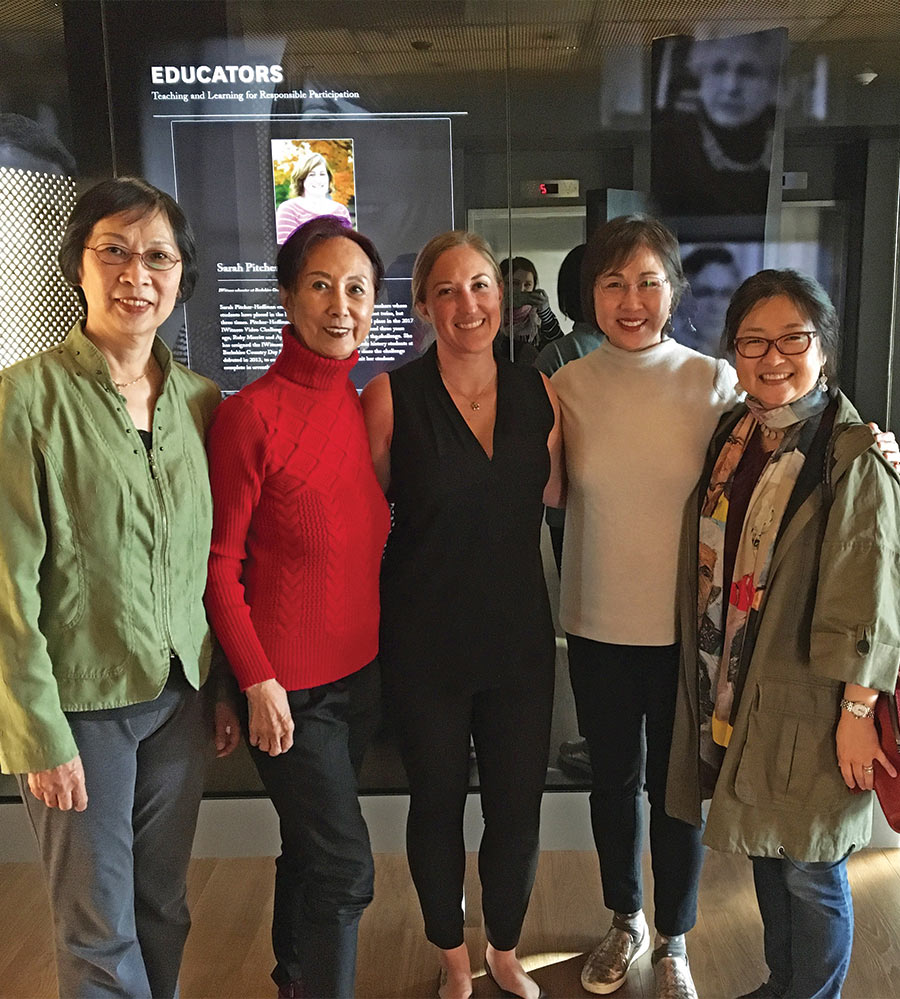
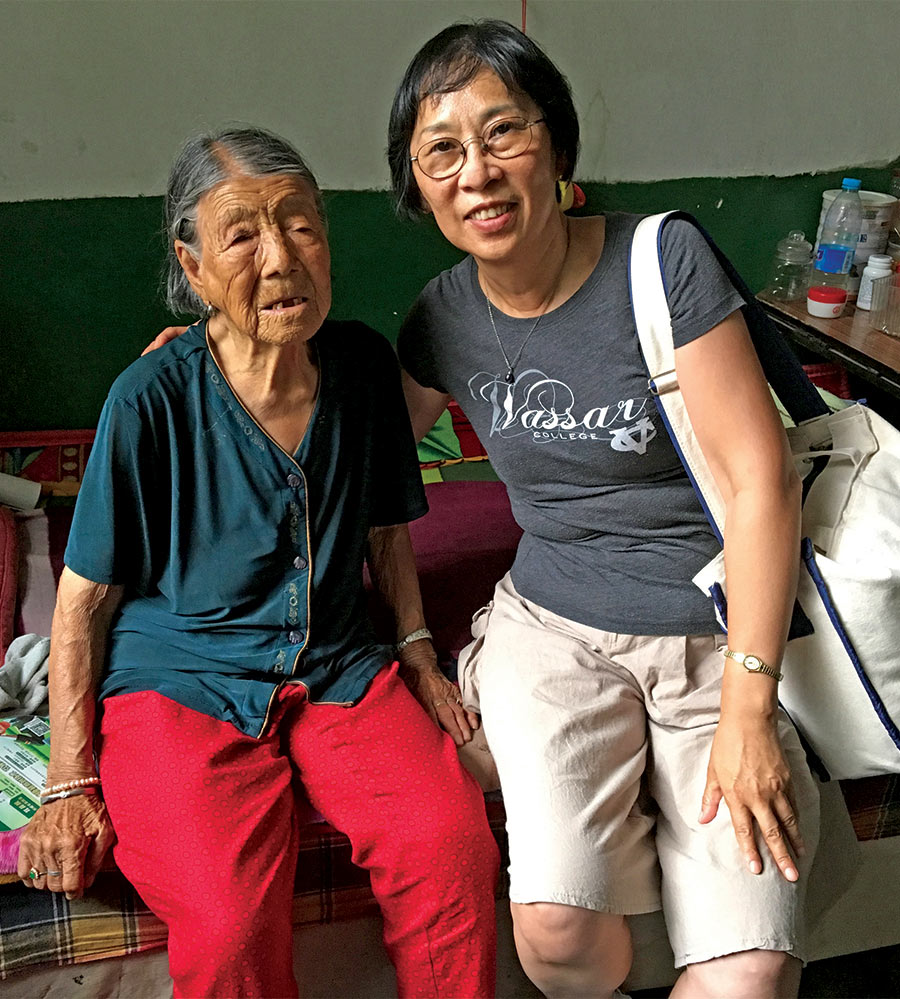
Qiu said listening to Peng and reliving the horrors that she had written about before had been difficult for her. “Oftentimes I have to hold back my tears,” Qiu said, her speech cracking with emotion. “But I hope this project and her voice can help the younger generation learn about this kind of brutality.”
“Peng mentioned several times that she probably doesn’t have many days left, and her worst fear is that something like this could happen again,” Qiu continued. “She wants us all to remember history. We really need to learn from the events of past wars.”
The AI project is still undergoing further testing and refining, Qiu said. Currently, Peng’s answers are in Chinese, but they will soon be available in English. Those using the system are helping to “train” the system and improve the AI-generated dialogue.
Qiu and Peng spoke in October when Peng took part in a webinar Qiu organized for the launching of the public beta test for the project. “She was very emotional,” Qiu said, “and at the conclusion of the webinar, she thanked everyone for their support and said, ‘I suffered tremendously during the war. I hope all countries in the world work together for peace. No more war!’”

National Institutes of Health / Painting by Phyllis Bronfman Lambert ’48 / Kelly Marsh
The Surprising Legacy of Black Theologian Rev. Howard Thurman at Vassar
lack theologian Howard Thurman has been widely credited with being a mentor to civil rights leaders Dr. Martin Luther King Jr., Bayard Rustin, and Pauli Murray. But Reverend Thurman also played a key role in shaping Vassar’s human rights journey, delivering more than a dozen sermons in the Chapel, many of them before the College had knowingly accepted a single Black student.
On February 15, members of the Vassar community convened in the Villard Room—and via Zoom—to witness four Vassar students’ tributes to Reverend Thurman. Croix Horsley ’26, Maya Winter ’26, Jarod Hudson ’26, and Katie Varon ’24 had conducted their research last fall while they were enrolled in an Intensive course on Thurman’s Vassar legacy taught by Professor of Religion and Director of Engaged Pluralism Jonathon Kahn.
Kahn said the presentations marked the first public event of Vassar’s recently established Inclusive History Initiative, aimed at looking more honestly into Vassar’s past. “Looking at Vassar’s history more critically can be difficult and disturbing,” Kahn said, “but Thurman was an activator of activists, and as the semester went on, the students became more energized to tell his story—because we at Vassar must consider not just who we are, but also who we want to be.”
Horsley opened the student presentations by showing a video tribute to Thurman he’d produced for the course. The film chronicled Thurman’s journey from a humble beginning in racist Daytona Beach, FL, to his accomplishments at Morehouse College, where he graduated as valedictorian, and his time at Rochester Theological Seminary. “[Thurman] became a beacon of peace and love and came to learn and preach the power of nonviolence as a force for change,” Horsley said.
Winter’s presentation, “Uncovering Inequity,” consisted of dozens of articles about Vassar’s civil rights issues she had found in the Black press between 1928 and the late 1960s. Winter noted that these stories appeared in papers around the country, not just in New York City. Many of these articles were critical of the College, including coverage of Du Bois’s speech, Winter said. Another article noted that while the College had announced in 1935 that it would be accepting applications from Black students, none were admitted until 1940, when Beatrix McCleary broke Vassar’s color barrier as the first openly acknowledged Black student to graduate from Vassar. (Another, Alice Turner Howard ’39, had been the first to enroll but transferred.) Winter noted, however, that when Thurman brought students from Howard University to Vassar in 1941, the Chicago Defender had reported they had been welcomed warmly. Winter said that while this student exchange had been a positive one, “Vassar was still not doing much to advance social justice.”
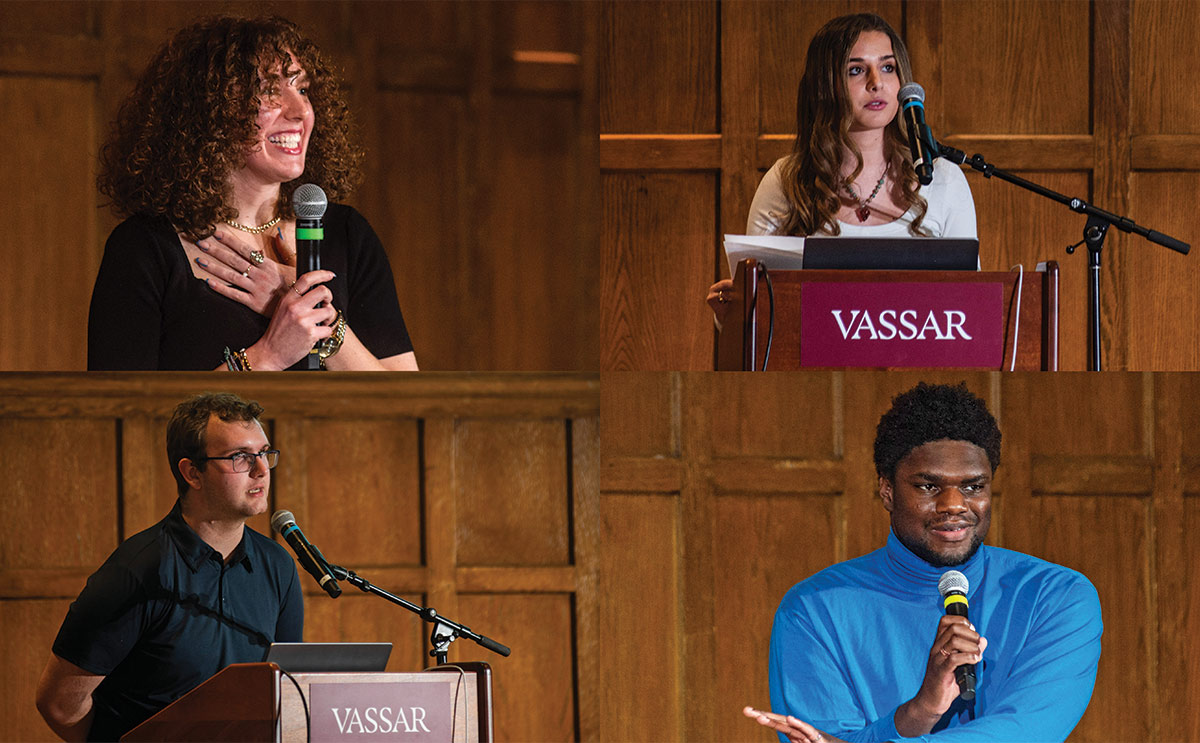
Kelly Marsh
“So this ‘hate’ strategy worked—until it didn’t,” Hudson said, alluding to what he had learned by reading one of Thurman’s books, Jesus and the Disinherited. In it, Thurman talks about how the Gospel may be read as a guide for resistance for the poor and disenfranchised, and that Jesus is a partner of the oppressed. Thurman concluded that Jesus’s message was that hatred cannot empower anyone and that only through love can justice prevail. “Thurman talked of love and forgiveness and unity,” Hudson said. “Forgiveness is not passivity, but my anger cannot be directed at my fellow students, only at those who perpetuate Vassar as an elite space.”
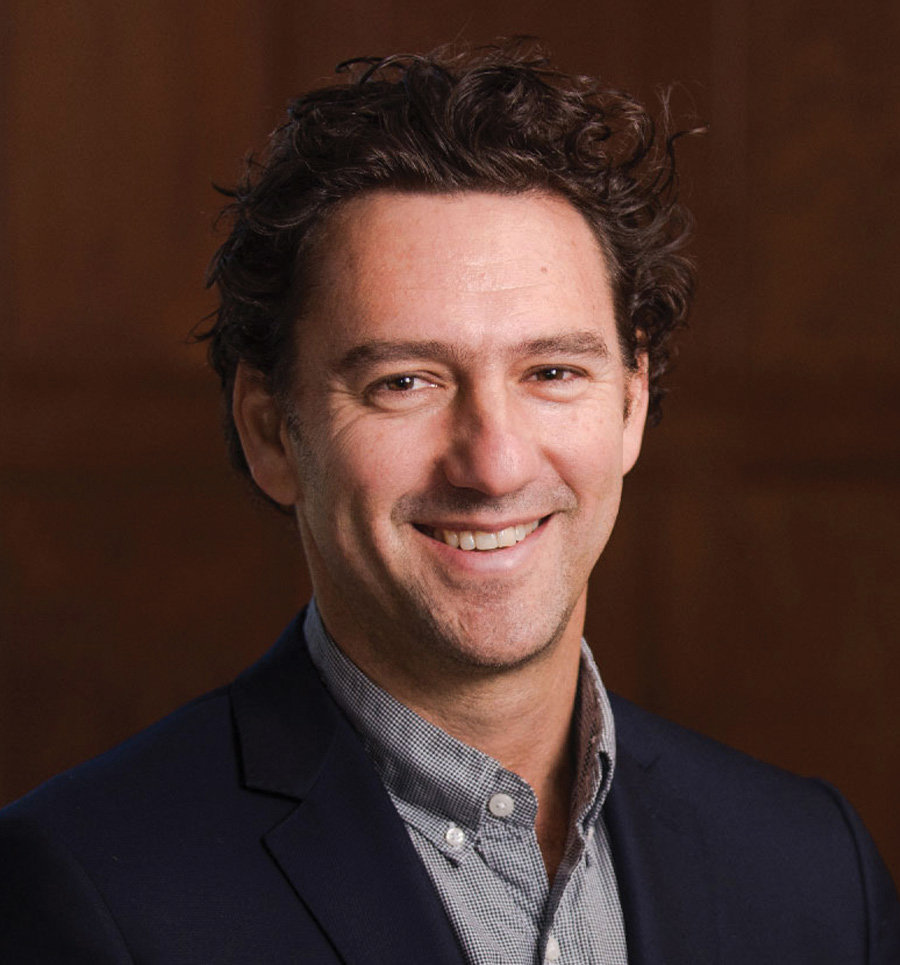
Varon said she was struck by one page of the Miscellany News, which carried both a story by Olive in which she praised a Founder’s Day play performed by the faculty and another story about a prize-winning minstrel show performed by White Vassar students. Olive admonished the College for allowing such a performance. “She praised the College, and she criticized the College,” Varon said, “and those who come after her must be grateful to her for pushing Vassar to a greater future.”
Eric Wilson ’76, Co-Chair of the African American Alumnae/i of Vassar College (AAAVC), concluded the program by praising the panelists and saying that he hoped that Reverend Thurman’s example would “move the College forward.”
One special guest at the event, Anton Howard Wong, son of Olive Thurman Wong ’48 and grandson of Reverend Thurman, said he was “blown away” by the presentations. Until he witnessed Varon’s presentation, Wong said, he had not known about many of his mother’s activities and accomplishments at Vassar.
During a question-and-answer session following the presentations, Professor Kahn applauded the students for their work and said he was “struck that the four projects had taken off in such different directions.” He said he hoped the event would spark more conversations on campus about the complexity of Vassar’s history. “I knew the students would be incredible, and they were,” he said. “To forge change, you need a map, and I think as much as anyone at Vassar, Howard Thurman provided that map, and the better map we have, the better we can become.”
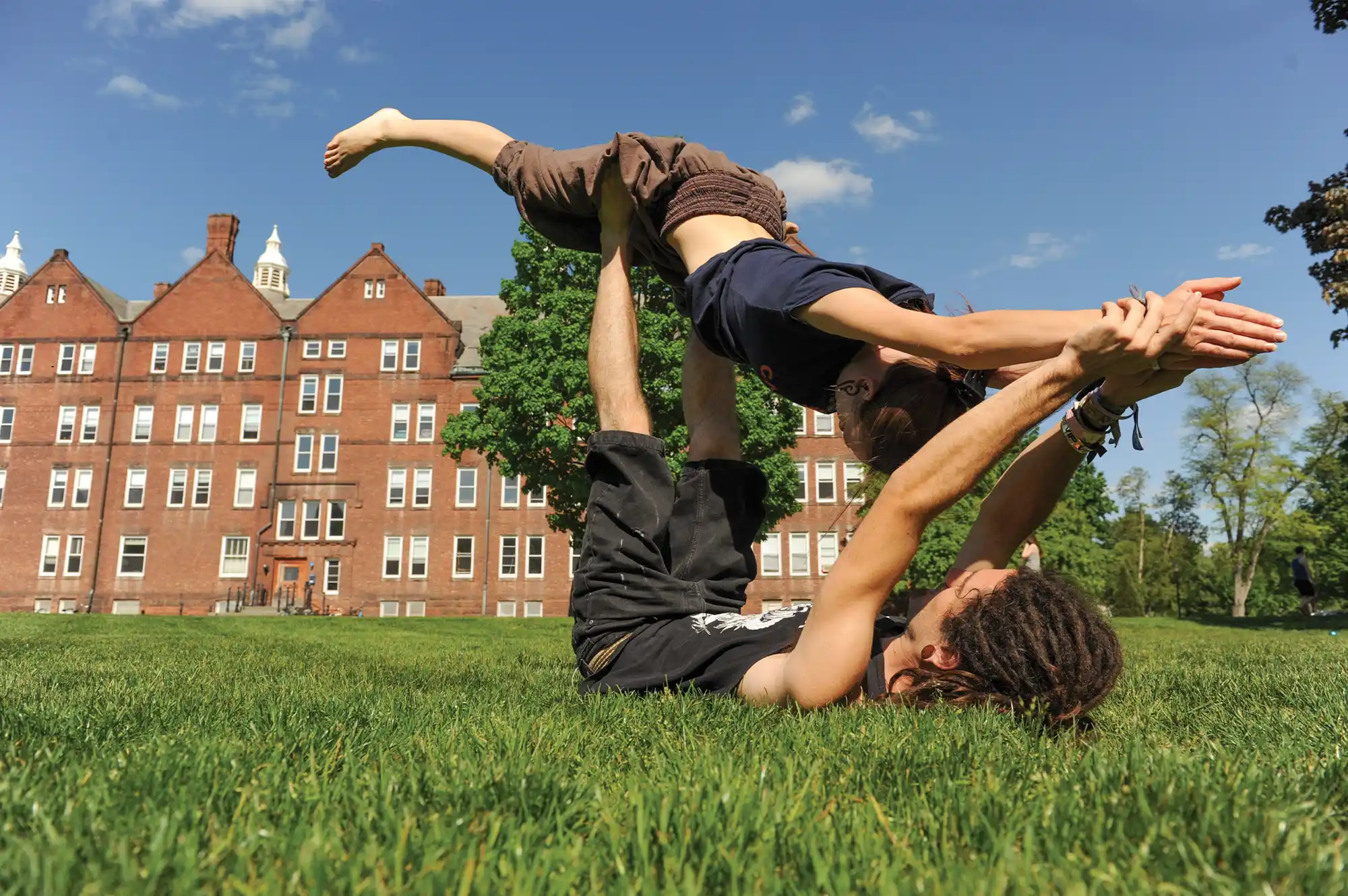
Dr. Paul Frank ’91 Gifts Endowment for Vassar’s Health and Wellness Program
“I kind of minored in art history and I was pre-med, so my roster was pretty full at Vassar between academics and social life,” Frank said. “But at the time, I would say Vassar was not a place that one who wanted to pursue medicine would go. I think in my graduating class, there were maybe only eight of us that applied to medical school.”
Frank, a psychology major at the time, felt supported by the College in his pursuits. And now, as a successful dermatologist practicing in Manhattan, where he lives with his family, he wanted to find a way to give back to Vassar and its students.
Frank, who regularly stays in contact with Vassar and attends his reunions, noted improvements made to the science, technology, engineering, and math (STEM) programs on campus, including the building of the Bridge for Laboratory Sciences, since he graduated.
Vassar has since become a leading college for pre-med students. Over the last decade or so, about 100 to 150 entering freshmen typically express interest in a health profession, including public health, nursing, dentistry, veterinary medicine, social work, and more. Following their time at Vassar, about 88 percent of pre-health students are accepted into medical school.
“It appears now that Vassar tends to attract a lot more people who are interested in science, law, engineering, things of that nature,” Frank said. “I often tell people that, in many ways, I learned more about being a physician at Vassar than I did in medical school. So much about your college experience is about your social evolution, development, and learning how to deal with people, which is, truthfully, the most important part of medicine—above and beyond knowing anatomy, physiology, and what medicines to prescribe.”
For today’s students, with stressful national and global events occurring regularly, Frank has turned his attention to supporting health and wellness at his alma mater. He recently made an endowed gift to Vassar’s health and wellness program, an integral part of the Fearlessly Consequential campaign, in the hopes it can help students take care of themselves so they too can be successful.
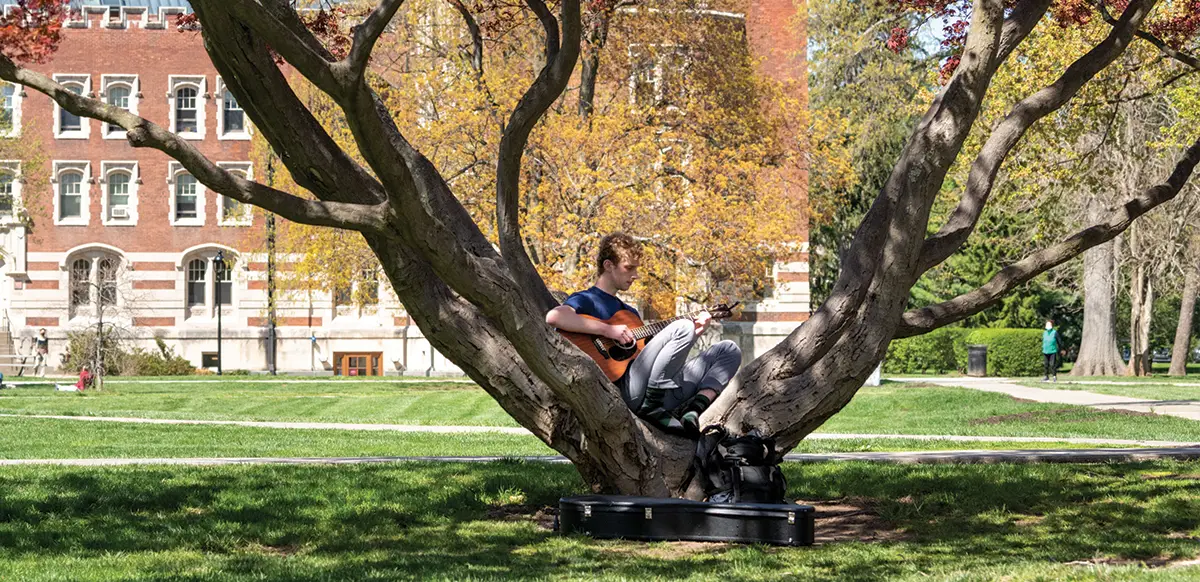
Before committing his gift, he knew he wanted it to have something to do with the mental health and wellness of Vassar’s students, whether his gift helped with access to meditation, exercise, yoga, and mental health facilities, or enhancing those types of services for the students facing this ever-changing and challenging world.
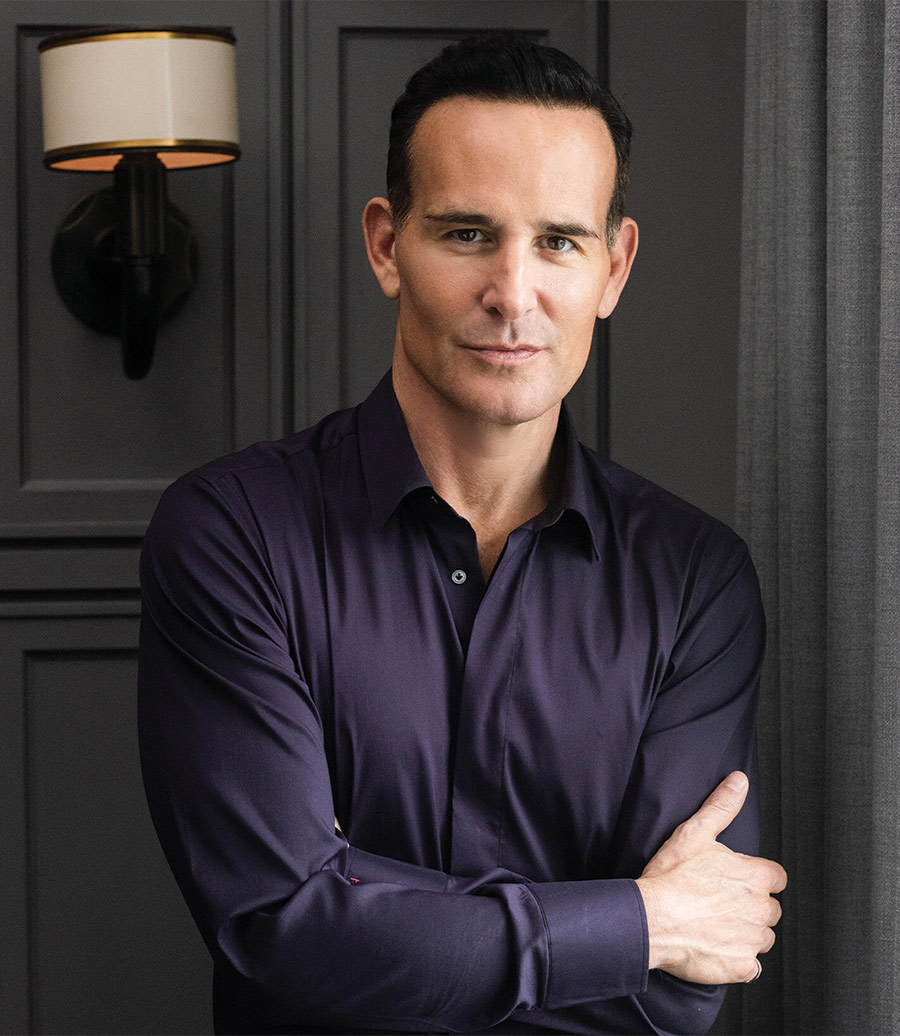
Portrait, courtesy of the subject
During his Vassar days, Frank said the College community was a diverse one—ethnically, socioeconomically, etc.—and was part of the social-liberal evolution. He remembers hearing stories of students going through tough times and having to take time away from school or having thoughts of self-harm due to the pressures of life. But he knows that Vassar offered the resources students needed.
“Vassar was a type of place that supported people for whoever they were,” Frank said. “To this day, I still think that is a prominent part of Vassar’s ethos. It seems like now, in today’s world, more colleges have programs for this. But back in the ’80s, it was very unique.”
Frank’s fund will help to establish an endowment that will provide funds for health and wellness initiatives including front-line staff, yoga instruction within the residence halls, outside speakers, nutritionists, and sponsored workshops for things like healthy and affordable cooking practices and mindfulness practices—just to name a few.
Loeb Earns Award for Excellence in Exhibition Design
The winning design was for the physical exhibition, What Now? (Or Not Yet)/Body Matter, a two-part exhibition created to encourage the campus and community to reflect on how collections change and evolve and how artists help us see or shape the past and future. The first version of the exhibition opened in January 2023 and was curated by John Murphy, the Loeb’s Curator of Prints and Drawings, and Alyx Raz, Curatorial Associate and Digital Marketing Manager. Simultaneously, six Vassar students worked to “re-curate” the same object list, rearranging the exhibition, changing the layout, and highlighting different perspectives through new pairings and interpretive text, wall color, exhibition graphic design, and the title, which became Body Matters.
Museums or individuals are nominated by their peers at museums as well as heritage and cultural organizations across New York State. Awardees were honored at MANY’s 2024 annual conference, “Giving Voice to Value,” in Albany, NY, this April.
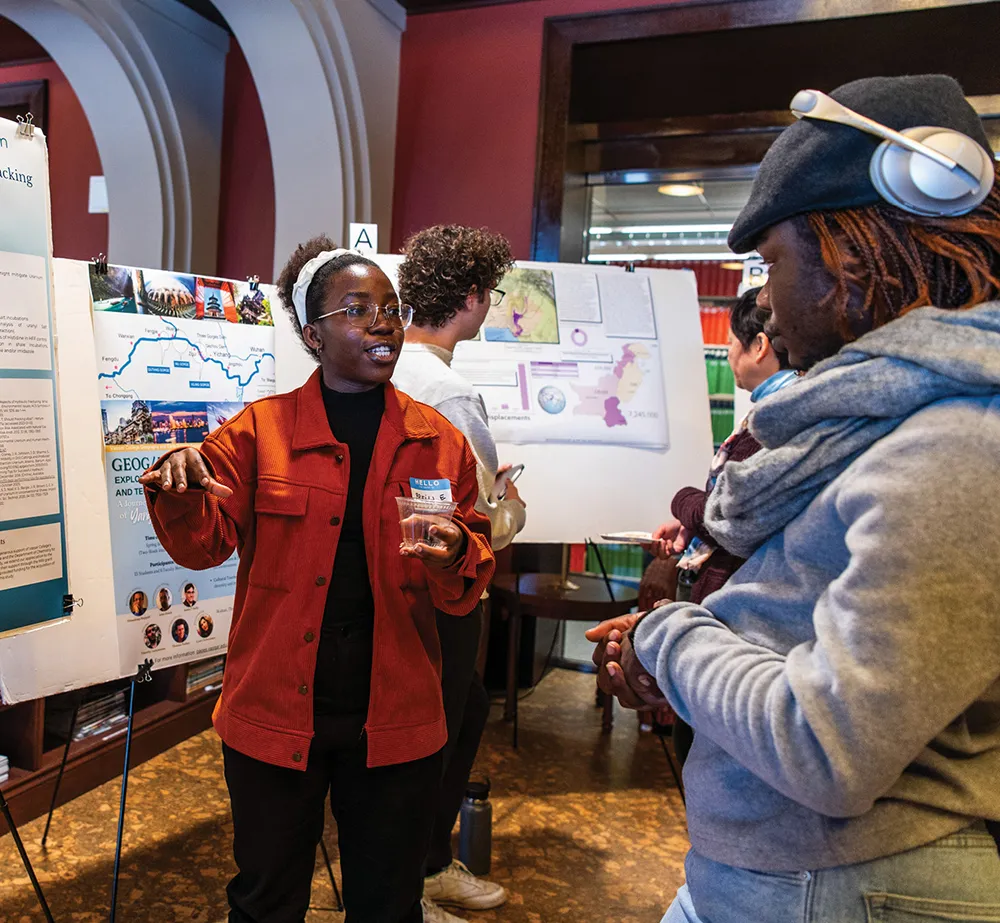
Kelly Marsh
Environmental Research Institute Symposium Tackles Climate Change
There was also a panel discussion featuring Marianne Begemann, Dean of Strategic Planning and Academic Resources; Assistant Professor of Earth Science and Environmental Studies Deon Knights, who focuses on water resources; and Professor of Geography Mary Ann Cunningham, who works on sustainable energy solutions.
Associate Professor of Biology Jodi Schwarz, coordinator of the Environmental Research Institute’s Steering Committee, said “A lot of us on campus are working on addressing environmental issues. The goal of this event was to let each other know what we are doing and to spark conversations about how we can connect and collaborate.”
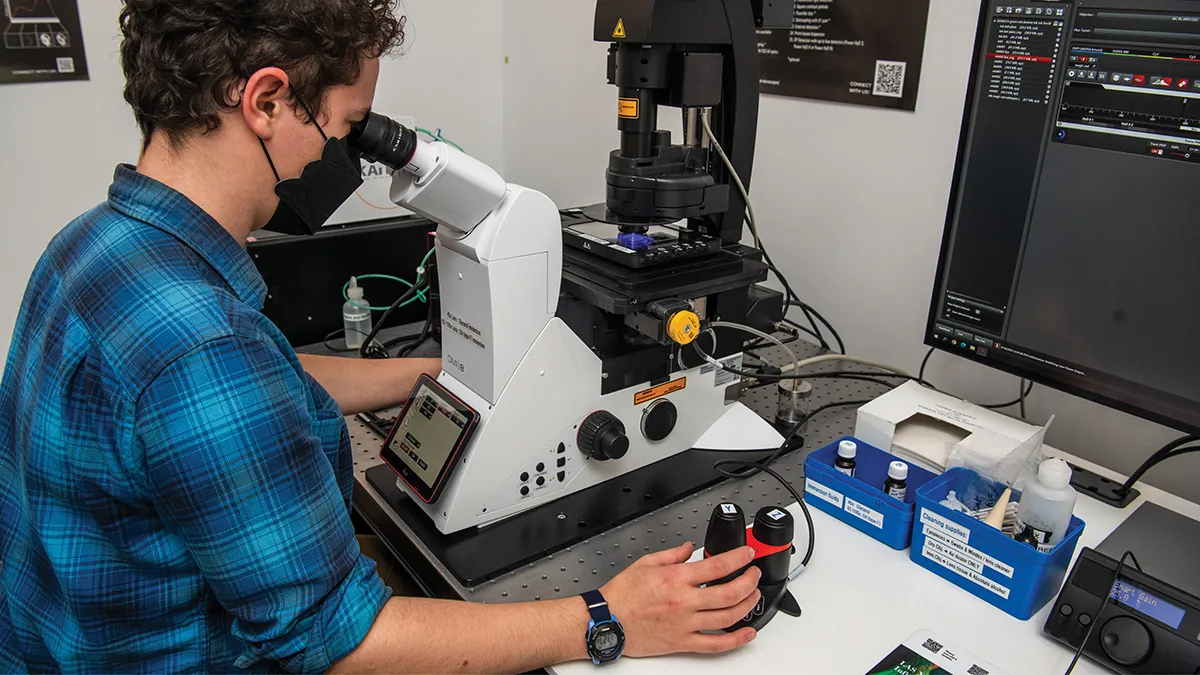
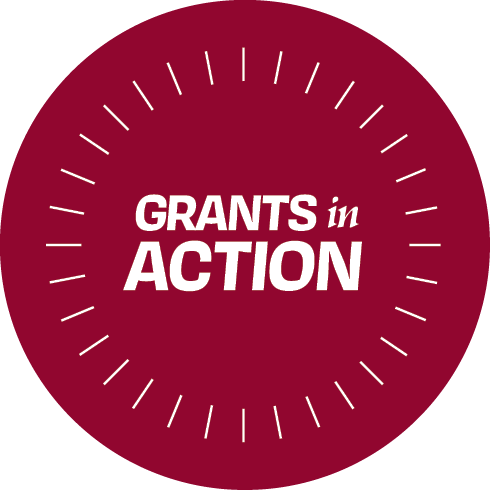
Kelly Marsh
New Microscope an Eye-Opener for Student Scientists
Levitt is one of several students who have undergone training with the Leica Stellaris 8, a next-generation confocal microscope that members of the science faculty say will greatly enhance research opportunities at Vassar and other nearby colleges. The microscope was delivered to the College in December. Training sessions for students and faculty, overseen by the Biology Department’s Science Technology Support Technician David Lewis, are expected to continue throughout the Spring Semester.
Associate Professor of Psychological Science Hadley Bergstrom, who co-wrote the NSF grant application, said he is already using the microscope to study cells involved in memory storage. “It gives us much brighter images with much higher resolution,” Bergstrom said, “and we get the results in about eight minutes, compared to more than an hour with our previous microscope.”
Under the terms of the grant, Vassar is sharing the use of the microscope with science faculty from other local colleges. Megan Dennis, an Associate Professor of Biology at Marist College, was among the first to be trained in its use. “I’ve already begun to use it for my own research, and I plan to bring some of my students over to Vassar later this spring to show them what it can do,” Dennis said.
Nancy Pokrywka, Professor and Chair of Biology, said she was looking forward to using the new microscope when she teaches the course Cellular Structure and Function. “The students work in teams, and I guide them through the use of the confocal to get high-resolution images of Drosophila [fruit fly] ovaries for their projects,” Pokrywka said. “They produce some truly beautiful data, and I look forward to using the new confocal in this fashion the next time I teach the course.”
Bergstrom said he’s certain the new microscope will get plenty of use, noting 12 faculty members in five Vassar science departments had taken part in applying for the NSF grant. “We are all still learning about all the things it can do,” he said. “It will probably take us a couple of years to fully utilize it.”
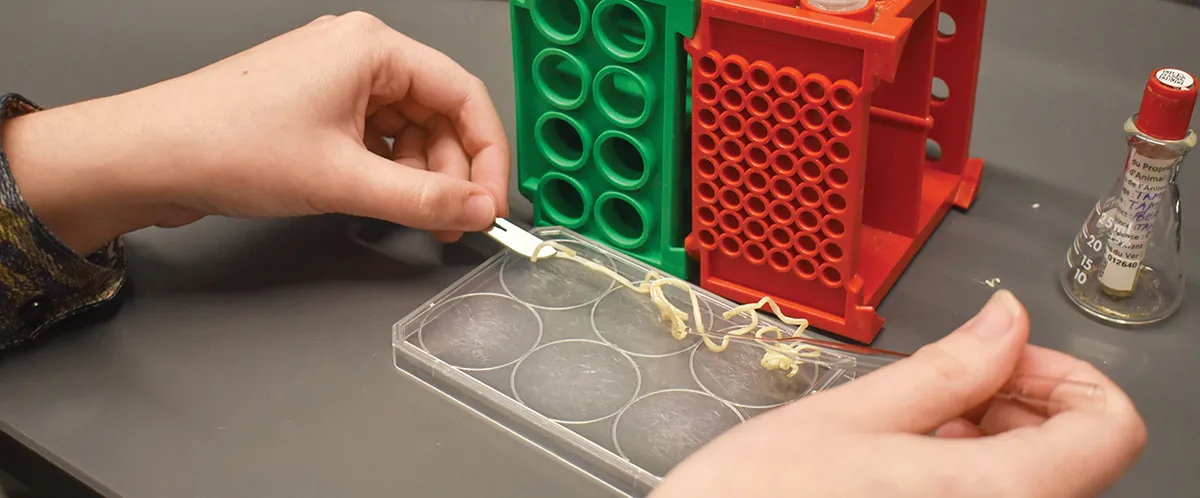

Vassar Researchers Work to Eradicate Dangerous Parasite
But as is the case with many health threats, the final stages of stamping it out are the hardest, and some of the research needed to support that work is being performed in a laboratory in Olmsted Hall on the Vassar campus. Visiting Scholar Elizabeth Thiele, who holds a PhD in ecological and evolutionary biology from Purdue University, has been performing research on Guinea worms taken principally from Chad, one of the last places where they are posing a threat.
“We get samples of worms collected from dogs, as well as cats, baboons, and humans, and through genetic sequencing, we can gain a better understanding of the parasite’s transmission,” Thiele explained.
The worm, which can grow up to a meter in length, has been common in many parts of the world since antiquity. Some historians ascribe biblical references of a “fiery serpent” to the Guinea worm because, after 10 to 14 months inside the host, an adult female worm emerges through an excruciatingly painful, burning blister it generates in the host’s skin. “While the parasite is not usually deadly by itself,” Thiele said, “it can debilitate its victims—often subsistence farmers and other rural workers, who then find it hard to survive.”
Thiele’s work is part of ongoing efforts of the Carter Center in collaboration with national ministries of health in affected countries and the World Health Organization. Her work at Vassar is funded directly by the Carter Center, a not-for-profit, nongovernmental organization founded by former President Jimmy Carter and his wife, the late Rosalynn Carter.

“There is no medical intervention, such as a vaccine or preventative drug,” Thiele explained. “The primary means of preventing infection is by disrupting the parasite’s life cycle. Emerging worms that are detected by village health workers are removed slowly and in a controlled manner over a length of time that can span days to weeks—this is to protect the infected individual from wound infections or complications and to prevent contamination of local water sources where the parasite’s intermediate host lives. Water bodies suspected to have been contaminated with parasite larvae are treated with a broad-spectrum larvicide to kill the intermediate hosts.”
Thiele and the Carter Center team hope that insights provided by the genetic data, namely a more nuanced understanding of the parasite’s transmission patterns in the remaining endemic countries, can assist local elimination programs with effectively allocating available resources and designing targeted prevention strategies.
The final efforts to stamp out the last Guinea worms have been hampered principally by unexpected infections in non-human animal hosts and by political unrest in the areas where the parasites still survive, but there is reason to believe the parasite can be completely eradicated by the Carter Center’s goal of 2030. “In 1995, during the Second Sudanese Civil War, Jimmy Carter helped to negotiate a ceasefire specifically to allow health workers to access villages endemic for Guinea worm and begin to implement control and prevention programs and provide primary health care,” Thiele said. At the time, it was the longest humanitarian cease-fire in history.
Thiele’s post-baccalaureate research assistant, Morgan Stephens ’23, performs the initial processing and cataloging of the worms that are sent to the lab. Stephens has been working with Thiele since they graduated from Vassar with a degree in biology last spring. “I applied for the job because I’m interested in pursuing a career in public health and wanted to gain some research experience before applying for graduate school,” they said. “Doing this work has been more purposeful than simply going to class,” they added. “I want to continue to do research in grad school on insects and other creatures that harm humans. It matters that this work gets done.”
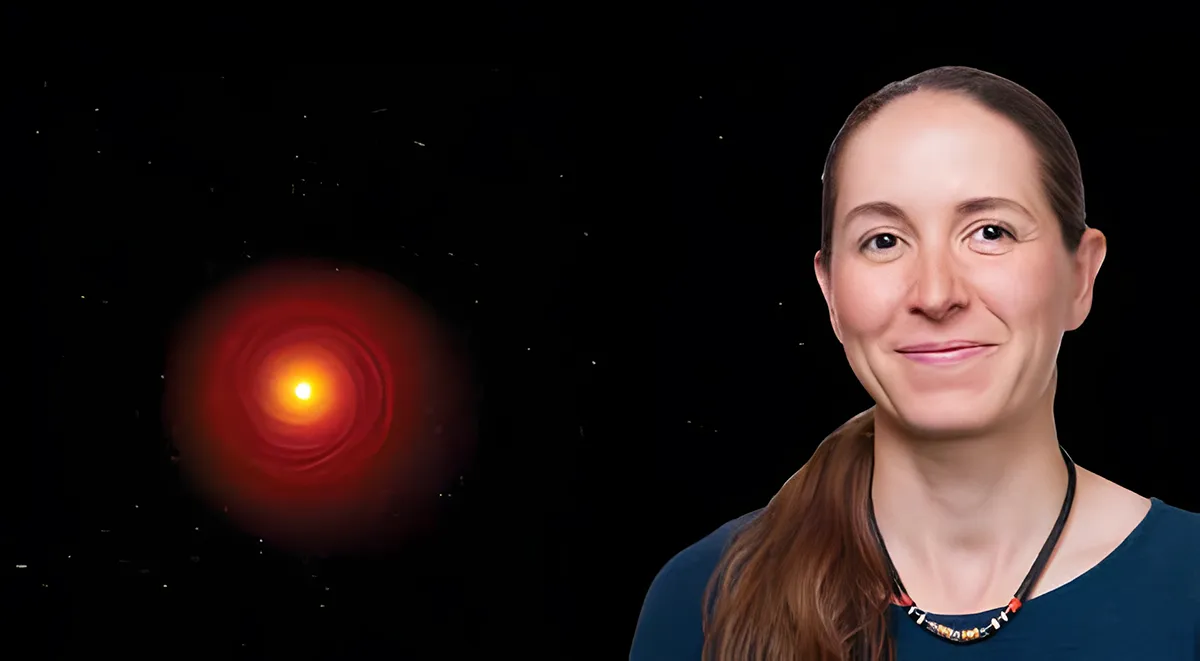

NASA / Karl Rabe
How Planets Are Formed
Vassar Professor, with NASA Team, Makes Breakthrough Discovery
Scientists have known for some time that solar systems are formed from large “proto-planetary disks” that orbit stars. The Webb telescope has provided this team with data from four such disks. During the early stages of planet formation, Salyk explained, icy pebbles about a centimeter in diameter are expected to move from the cold outer reaches of the planetary systems towards the warmer planet-forming regions, releasing water vapor as they heat up. Data from infrared light detected by the James Webb Space Telescope enabled Salyk and other members of the team to observe this transported water vapor in two of the disks—the two that also show evidence for the movement of pebbles. “This shows us that water can move around in planet-forming regions, carried by these pebbles. It was exciting for us to be able to confirm a theoretical idea that required the sensitivity of a telescope like JWST to actually see in action,” she said.
The JDISCS team will continue its work by analyzing dozens more disks in its sample to better understand planet-formation chemistry.
Salyk has secured a Space Telescope Science Institute (STScI) grant award for related research in collaboration with a colleague from the University of Wisconsin-Madison. The research is in support of a program titled “Building on ALMA: a James Webb Space Telescope (JWST) legacy survey of the chemical evolution of planet-forming disks.” As part of the project, they will combine JWST data and archival data from the Atacama Large Millimeter Array (ALMA) to study the evolution of chemical abundances across relevant disks.
A Vassar Homecoming for Photographer Rollie McKenna ’40
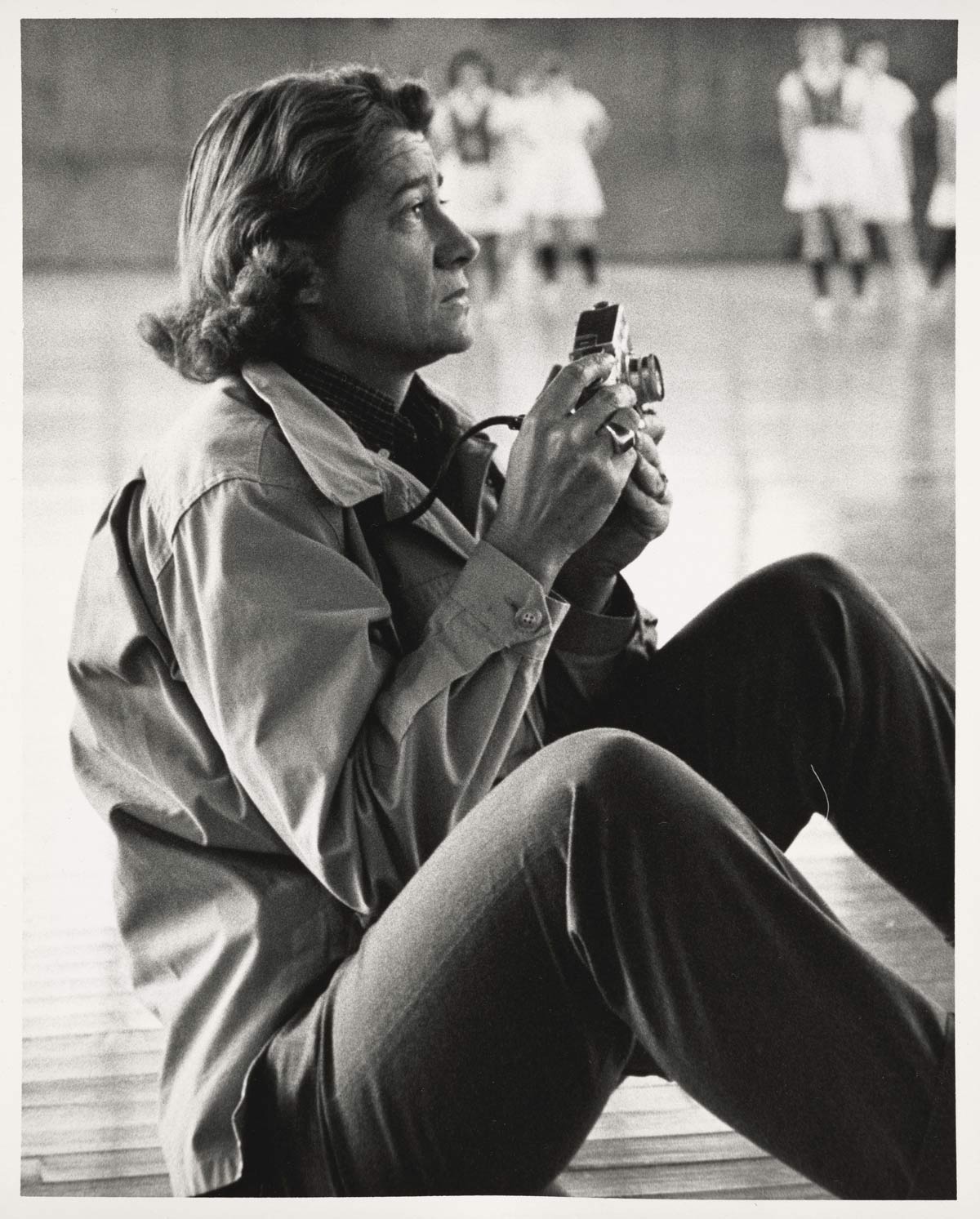
he unconventional life of Rollie McKenna (1918–2003) was largely thanks to her prolific career as a photographer, which afforded her both personal and professional independence. Photography allowed McKenna to travel the world and cultivate her craft free from the typical expectations of American women in the mid-20th century. Though she was essentially self-taught, in many ways her career began at Vassar, where she studied American history and art history and criticism.
Two years after graduating, she became a Navy officer. As the U.S. entered World War II, she enlisted in Women Accepted for Voluntary Emergency Service (WAVES) and became the first woman to attain the rank of sharpshooter in the Navy. In her autobiography, McKenna credited her maternal grandfather, in whose care she spent much of her childhood, for teaching her how to shoot. Her grandfather also instilled in McKenna a lifelong love of sailing, another experience that was formative for her as an adventurous, independent woman who did not conform to gendered expectations.
McKenna returned to Vassar in 1948 and 1949 to pursue a rare master’s degree in the history of art, with special dispensation under the G.I. Bill secured by art history professor Agnes Rindge Claflin. McKenna’s graduate study focused on the history of architecture and landscape architecture. Her master’s thesis, “A Study of the Architecture of the Main Building and the Landscaping of Vassar College, 1860–1870” (1949), remains the most comprehensive study of Vassar’s historic Main Building, designed by James Renwick Jr.
At age 30, McKenna discovered photography. In 1948, while traveling in Paris, she purchased her first professional camera. Her earliest experiments were photographing Italian Renaissance architecture at the suggestion of Vassar architectural history professor Richard Krautheimer. Her appreciation for the history of these structures, combined with careful attention to photographic processes and effects, immediately brought these pictures to the attention of architectural historians and their students across the United States.

Completion of the iconic Seagram Building in Midtown Manhattan in 1958 presented another opportunity for McKenna. The project was overseen by Phyllis Lambert ’48, another illustrious Vassar alum who had graduated a few years after McKenna. Lambert commissioned modernist architects Ludwig Mies van der Rohe and Philip Johnson to design the modernist skyscraper. This high-profile project effectively launched Lambert’s distinguished career in architecture. Lambert commissioned McKenna to photograph the building’s exterior, and several of McKenna’s photographs were printed in the Vassar Quarterly the following year.
Lambert remembers holding McKenna in high esteem: “I recall that it was not only that she walked around always with a camera, but my admiration, and perhaps surprise, [at seeing] a graduate as a professional. In the late 1940s, this seemed extraordinary.” Some 70 years later, Lambert remembers McKenna as a young photographer who exuded an air of professionalism that left a lasting impression and would drive her career forward.
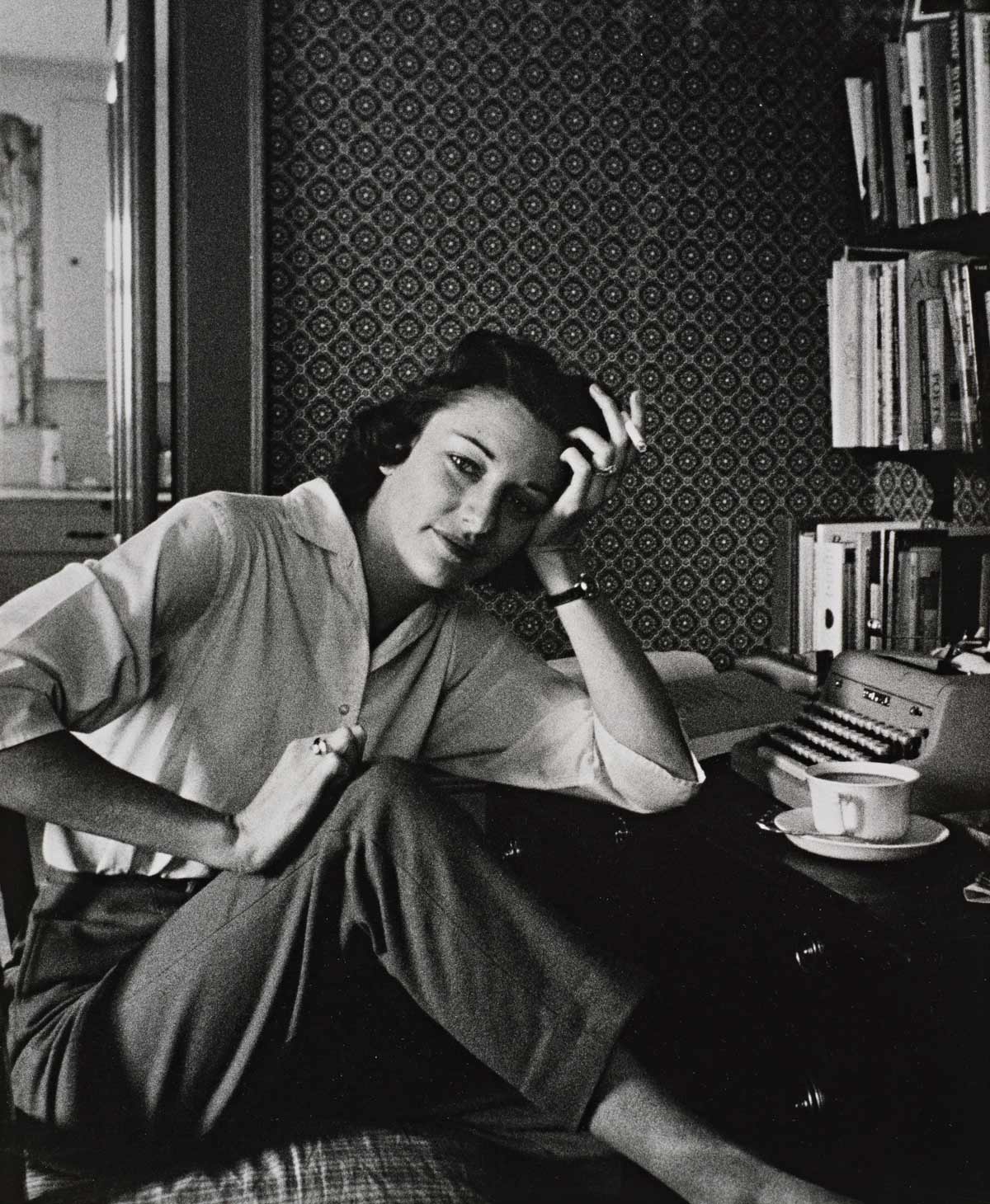
Today, McKenna is the single most represented photographer in the collection of the Frances Lehman Loeb Art Center with over 200 photographs. It is fitting that this photographer’s first career retrospective exhibition, Making a Life in Photography: Rollie McKenna, is organized and hosted by her alma mater. The exhibition, on view at the Loeb through June 2, is presented thematically in four galleries and features more than 100 of McKenna’s photographs spanning her career, including portrait, architectural, and documentary photographs.

Vassar Cross Country:
“A Team of Huggers”—and Winners
When the results of the race were officially announced a few minutes later, the 14 Vassar runners who competed that day collapsed into a group hug—“We’re a team of huggers,” Reade explained—and a photo of that celebration now hangs on the wall in Schoenegge’s dorm room.
As Head Coach James McCowan and members of the team reflected on that day’s historic accomplishment, they said they had a hunch the 2023 season would be a special one. “I knew I had a strong class of first-years,” McCowan said, “but I’ve learned from experience not to count too heavily on them because the transition from high school to college can be stressful—it’s a big life change.”
The coach said he also knew he had a talented group of sophomore, junior, and senior runners to help guide the first-years, and as he watched the team chemistry develop, he became increasingly optimistic about the season. “Coaching can be about pushing and pulling sometimes,” he said, “but with this group, I didn’t have to do that; it was more about pointing.”
Swaim, who helped the team record its best-ever 23rd-place finish at the NCAA Division III Championships three weeks after the Liberty League race, said she wasn’t surprised by the team’s success. “We talked with [McCowan] before the season started about our expectations, and he let us define our goals,” she said. “We developed rituals that binded us.”
Reade said she and the other first-years felt the positive energy even before the season began. “James let us know what he wanted from us in the summer,” she said, “and by the time the season began, we all just blended right in—it was easy.”
McCowan recalled he had met Acadia Helfand ’27 at an indoor track meet last winter after she had been accepted to Vassar on Early Decision. “I remember making some comment in passing as we parted like, ‘Hey let’s go get a team to NCAA’s,’ and her replying, ‘Well that’s the plan; that’s what I’m coming to Vassar for.’ And I thought to myself, ‘This is gonna be a good crew.’”
What’s next for this history-making team? McCowan is optimistic. “The plan is still to just cultivate that habit, culture, and mindset of high performance, being excellent at what we do, and being great people,” he said. “If we do that, the results will take care of themselves.”
Vassar Volleyball Star Courting Success as a Professional Player
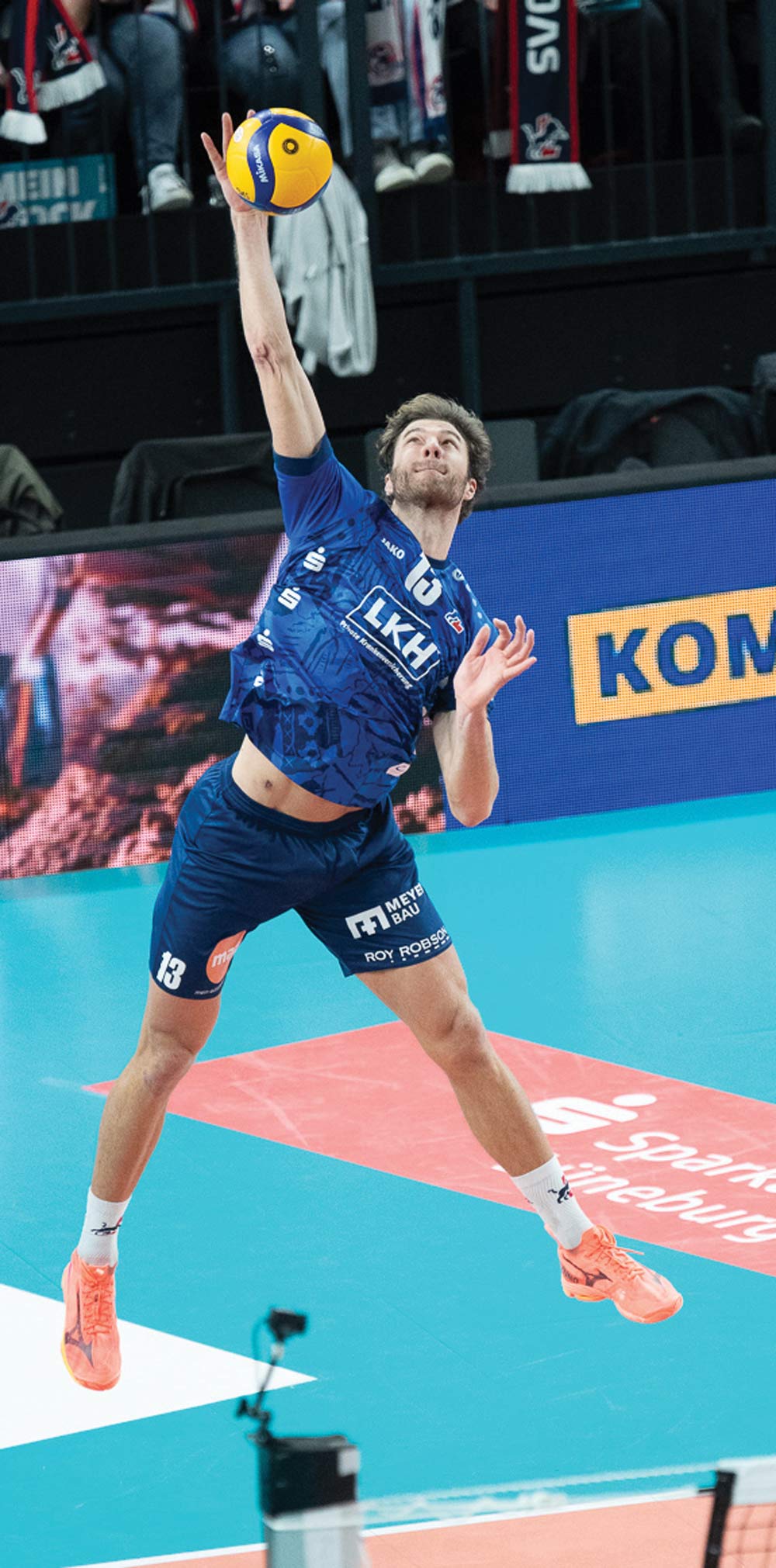
Knigge joined a semipro team in Germany in the summer of 2018, and over the next several years, his career trajectory took a steep turn upward as he gained experience and earned accolades with better teams in Spain and most recently in Germany playing for a team in that country’s top professional league. And in July of 2023, Knigge landed a spot on the USA Volleyball Men’s National team, an unprecedented achievement for someone who competed at an NCAA Division III college. “One of the other players on the national team told me, ‘Man, you’re a D3 legend; no one has ever done what you’ve done,’” Knigge recalled.
He earned immediate credibility that fall as a starter on the USA squad that defeated Canada in the finals of the NORCECA Final Six in Edmonton, Alberta—one of the most prestigious tournaments in North America.
Knigge is a middle blocker on the 30-man team that will send its top 12 players to the Olympics in Paris this summer, and while he is not among top three at his position, there’s at least a slight chance he’ll be called upon if those ahead of him on the depth chart are injured or otherwise cannot compete.
Vassar men’s volleyball Head Coach Richard Gary, who mentored Knigge in his final two collegiate seasons, says he told Knigge in 2018 what a challenge he had ahead of him trying to make pro volleyball a career. Then he smiled and said he also knew that if anyone from a Division III program could achieve that kind of success, “it would be Matt. He’s overcome every obstacle that’s ever been put in front of him.”
Knigge said he knows being chosen as one of the 12 players to compete for the USA in this year’s Olympics is a longshot, but he hasn’t given up the dream. “Competing for my country on the National Team has always been the goal,” he said. “I want to stand on that podium and see my country’s flag flying as I hear the National Anthem.”
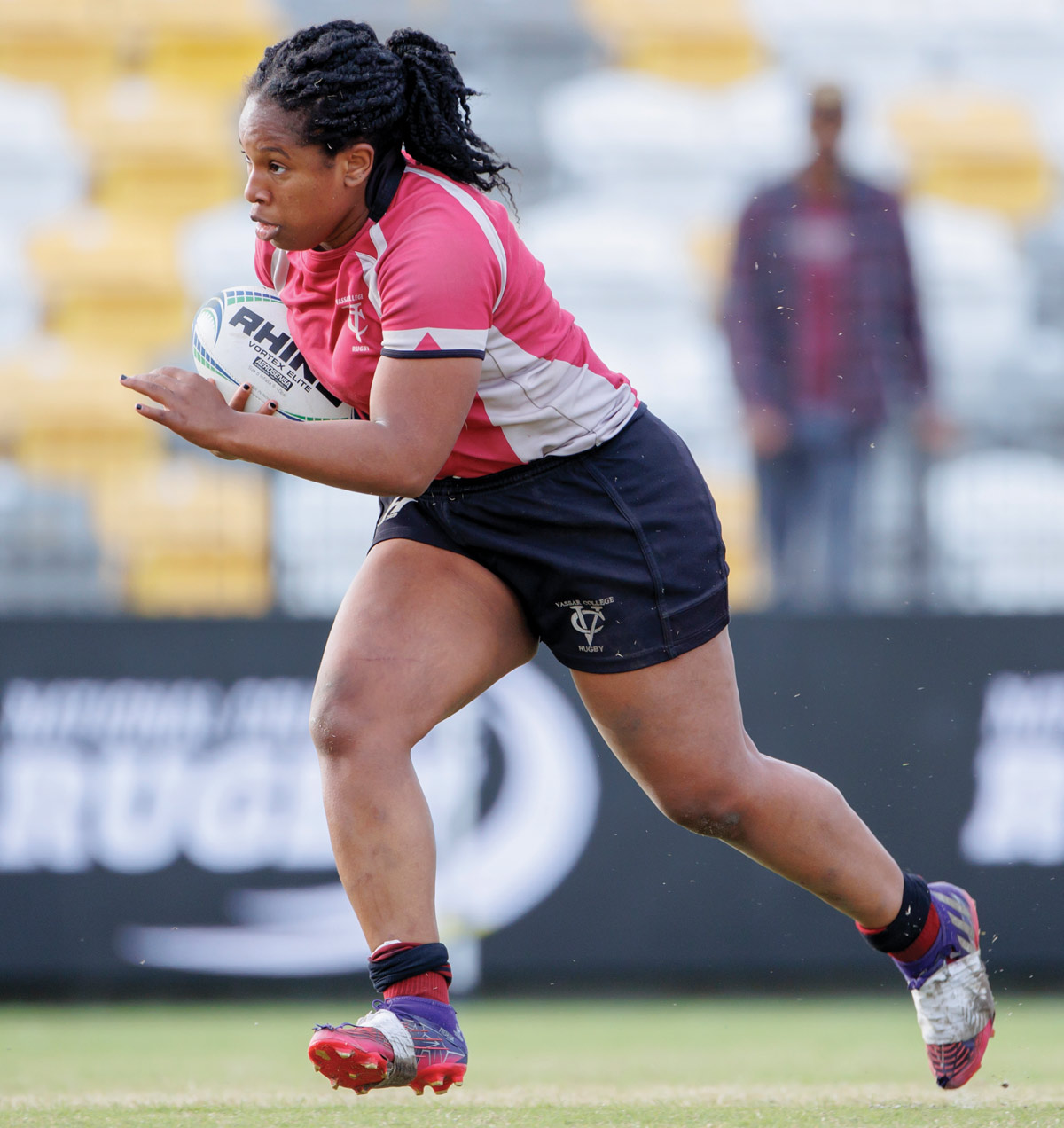
Women’s Rugby Continues to Bring It
Led by coaches Tony Brown and Mark Griffiths and Co-Captains Grace Skakel ’24 and Julie Geller ’24, the Brewers compiled a 7–2 regular-season record before advancing to the finals of the Tri-State Conference championships. The team then posted victories over Coastal Carolina University, Temple University, and the U.S. Coast Guard Academy in its march to the national championship game.
Sophia Bailey ’26, who scored three tries in the semifinal win over the Coast Guard Academy and two more in the championship game, said reaching the national finals was a tribute to the team’s resilience. “Despite adjusting to a team consisting largely of first-year players and others who had changed position, we showed our ability to adapt and had an incredibly successful season,” Bailey said.
How The Vassar Network Fuels Success
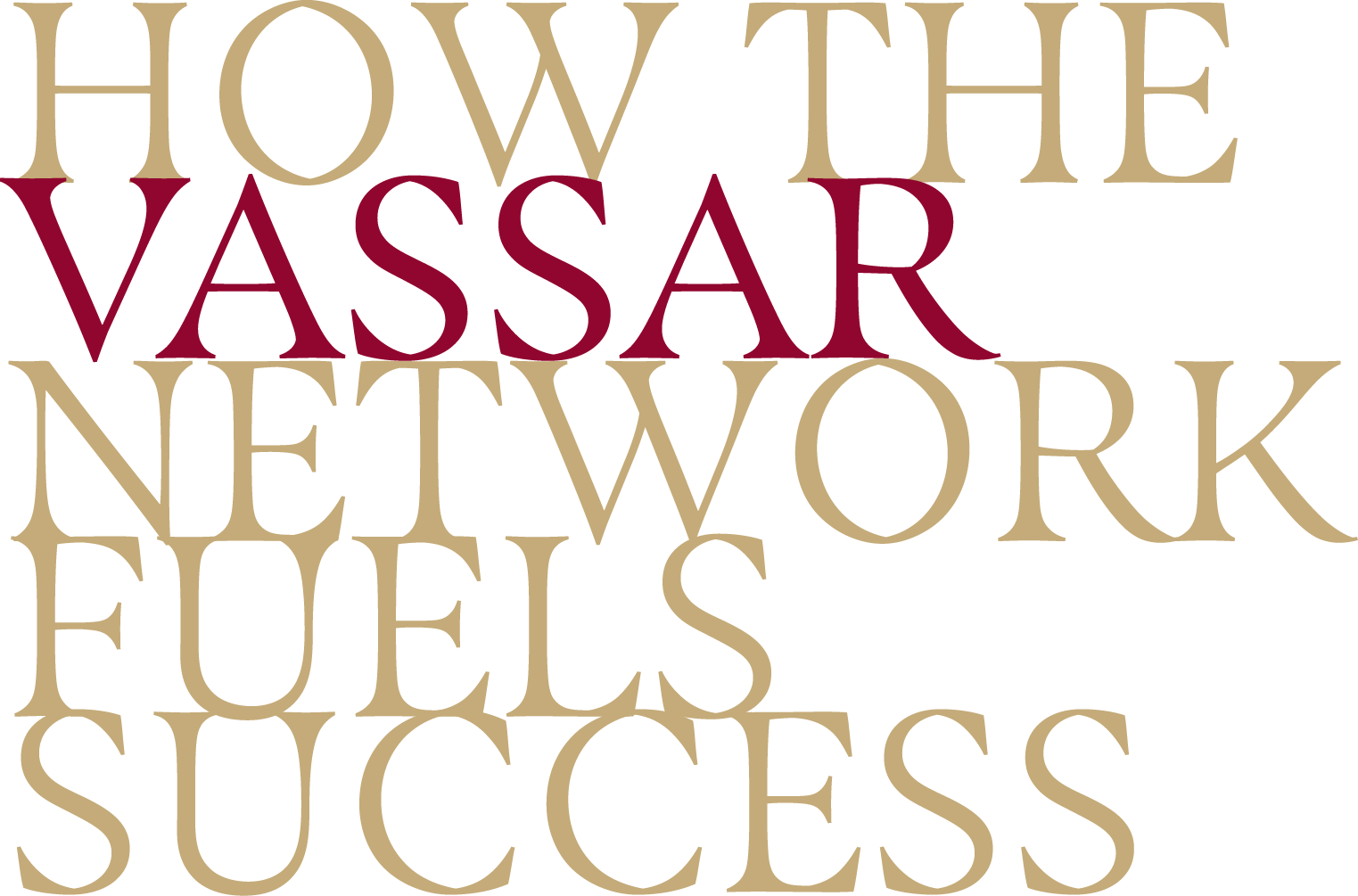
long with their liberal arts education, Vassar students and graduates have a secret weapon: a passionate network of alums who are eager to open doors for one another at every career stage and in every field—from management consulting, finance, and tech to public service, nonprofits, and (of course) the arts. Here, we share some inspiring stories of connections made, dream jobs won, and the innovative, career-focused programs that are giving students a huge advantage before they graduate.
Like many liberal arts majors, Ellie Winter ’18, an Africana studies and media studies double major, didn’t start Vassar with any grand plan for what she wanted to do in life. “Actually, I had no idea,” laughs Winter, 28, who lives in Providence, Rhode Island. At first, the idea of turning to Vassar alums to help her figure out her path forward was a bit intimidating, if not off-putting. “My impression of networking and being mentored was sitting in front of someone in a big office with a tufted chair,” says Winter, who is the Digital Communications Manager at the Barr Foundation in Boston.
That impression changed radically during her sophomore year, when she became a student representative on the College’s Presidential Search Committee. Says Winter, “Being surrounded by Vassar alums at the peak of their careers, living their dreams, made me realize, ‘Oh, Vassar isn’t just a place where you come to learn. You can make connections and see yourself doing things you never thought possible.’”
That epiphany was solidified after Winter participated in Sophomore Career Connections (SCC) in 2016, throwing herself into a weekend of networking with alums who returned to campus in droves to meet students and participate in panel discussions about what they did for work and how they got there. “It made networking so approachable,” says Winter. With that newfound confidence, as the end of her senior year approached, Winter reached out to Anne Green ’93, an alum mentor in the communications field whom she’d met at SCC two years earlier. “Anne agreed to interview me,” Winter recalls, “and instead of a stranger, I felt like I was talking to someone invested in my growth.” Winter ended up getting a job at the firm Green worked for doing PR and corporate communications. “It was amazing to have someone looking out for me after I was hired,” Winter says. “I’ve always been so grateful for that gentle on-ramp to the working world!”

Karl Rabe
Career Help, the Liberal Arts Way
Resources such as the Internship Grant Fund and specialized fellowships like the Thompson Bartlett Fellowships for STEM and economics-related internships and the Tananbaum Fellowships for juniors add to the wealth of opportunities.
Additional support for Vassar-connected summer experiences comes from programs like Community Fellows, administered by the Office of Community-Engaged Learning, which allows students to work full time with Poughkeepsie nonprofits over the summer break; or the faculty-led Ford Scholars program and Undergraduate Research Summer Institute (URSI), where students can gain mentored research experiences with faculty. These programs create a remarkably efficient career pipeline, albeit with some zigging and zagging along the way.
One student who took advantage of several fellowships and mentoring programs is Hannah Van Demark ’15, a history major at Vassar and now a Strategy Manager at Nike who lives in Brooklyn, NY. As a Ford Scholar, she worked with history professor Robert Brigham conducting research on the International Criminal Court—even accompanying him and his family to Dublin for a symposium the summer after her first year at the College. “He really pushed me in my research; it was amazing to get a sense of what a career in academia might look like,” she says.
Her sophomore year, she went off to Bolivia, where she studied Spanish and interned for the Foundation for Sustainable Development courtesy of Vassar’s Ann Cornelisen Fellowship, which provided an $8,000 stipend. In Bolivia, she researched whether giving farmers even small loans could make a meaningful impact on their lives. Junior year, as a Tananbaum Fellow, she began zeroing in on her career goals—attending workshops on networking, interviewing, and career prep through the Center for Career Education, then nabbing a summer internship with the Senate Banking Committee. That led to her first real job after graduation, at the Federal Reserve Bank, where, like so many Vassar alums, she dove into mentoring right away.
Not surprisingly, Van Demark also returned to Vassar for SCC, both in 2017 (on the finance panel) and in 2024 (management consulting). “SCC brings career mentoring to a whole new level,” she says now. “It really helps students understand how the Vassar network can come into your life at different stages in your career.”
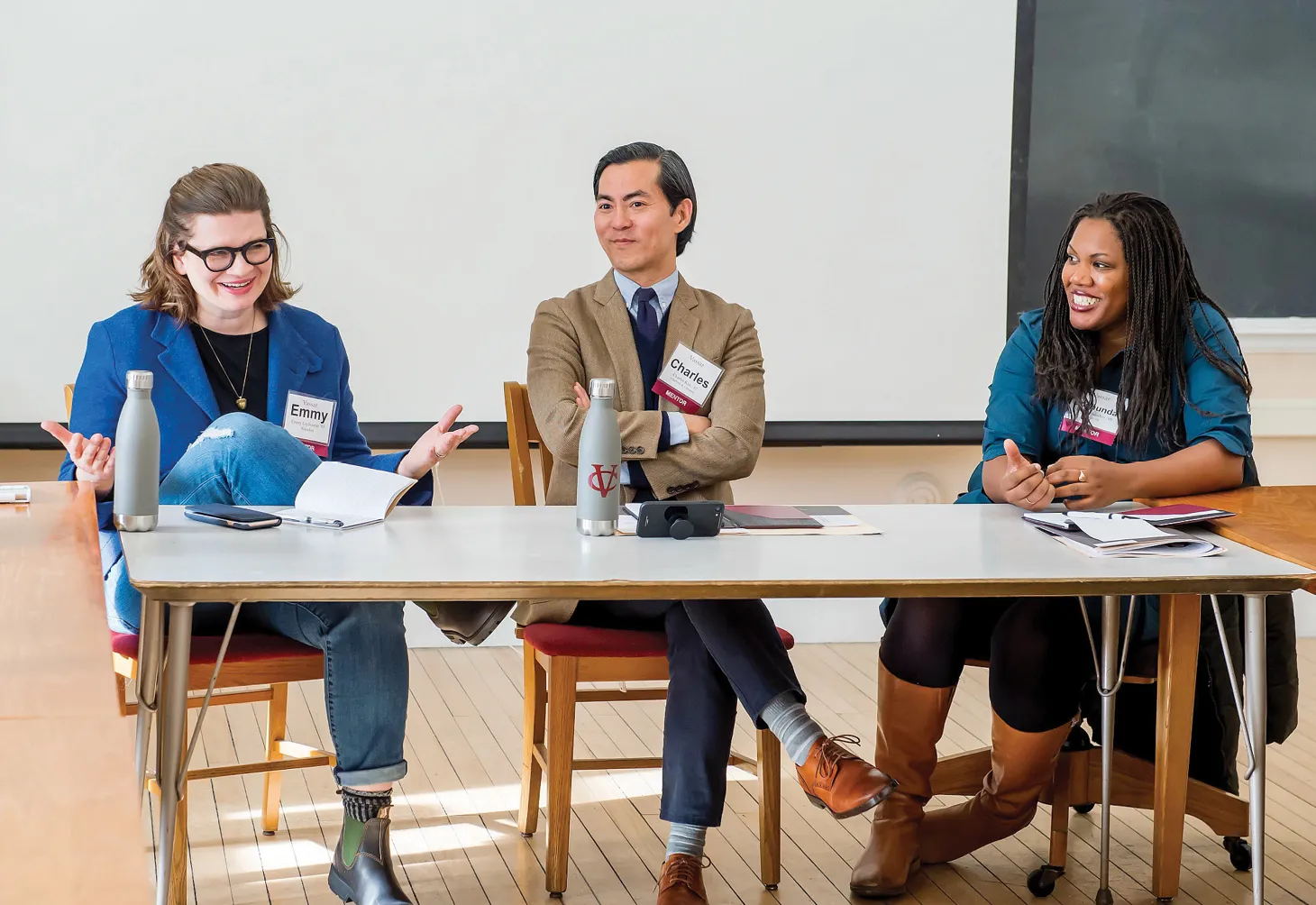
Beyond the opportunities at Vassar lies that exceptionally tight and motivated alum network, one committed to helping not just recent graduates, but also helping one another. Indeed, the idea for SCC was hatched by Vassar alum and parent Carol Ostrow ’77 and her husband Michael Graff (both P’09,’15) when the couple realized that their son, a new Vassar grad, could benefit from tapping into the Vassar network as he pursued a job in finance. “Carol and I thought that maybe Vassar students could use some help entering careers other than law, medicine, arts and entertainment,” says Graff, a Senior Advisor at Warburg Pincus. “At that point, more than a decade ago, there wasn’t a big pipeline to higher-paying jobs on Wall Street or in management consulting.” So, the couple approached Stacy Bingham, Associate Dean of the College for Career Education, with a question: What if we could bring alums back to campus to help?
And come they did. “We started with maybe 50 mentors in 12 different industries, and now we have 18 industries with five or six alums on each, all talking about how Vassar helped them formulate who they wanted to be and the kind of careers they would love—in short, how a liberal arts education helped them launch in all arenas,” says Ostrow, who is a member of Vassar’s Board of Trustees. A decade later, in SCC’s 10th anniversary year, she is particularly gratified that so many of those early SCC sophomores come back (often more than once) as mentors themselves.
“I like to say that the Vassar network is deep, it’s wide, and it’s brimming with goodwill,” says the CCE’s Bingham. One example she points to is Rachel Garbade ’15, an Assistant Archivist at the Museum of Modern Art in New York City. Garbade got her first job at the Garth Greenan Gallery in New York City after she reached out to Alison Dillulio ’13. Both had worked together on Contrast, Vassar’s style and art magazine. “I was doing a lot of informational interviews, and Allison and I went to lunch. By the end of the meal, she’d offered me a job at the gallery!” Garbade recalls.

Still, when Garbade volunteered to be an alum mentor at SCC in 2020, just before the pandemic hit, she wasn’t necessarily expecting new friendships out of the weekend. “But I got to meet alums from different years,” she says, “and now I have all these off-class relationships.” One of these includes a member of the class of 2022, who attended SCC as a sophomore and came up to Garbade in the dining hall after hearing her speak on a panel on identity. “We were chatting and she asked me what it was like to be queer in the real world,” Garbade recalls. Soon after, the two became friends on Instagram, and now they get dinner in New York City every few months. “I feel like I am where I am today because of my Vassar network,” says Garbade. “I had all of these great mentors and great connections, and now I like to be those things for other people.”
That doesn’t surprise Carol Ostrow. “This year, we had 14 mentors who did SCC as sophomores,” she says. “So many of them say they come back because that weekend changed their lives and launched them into who they are today.”
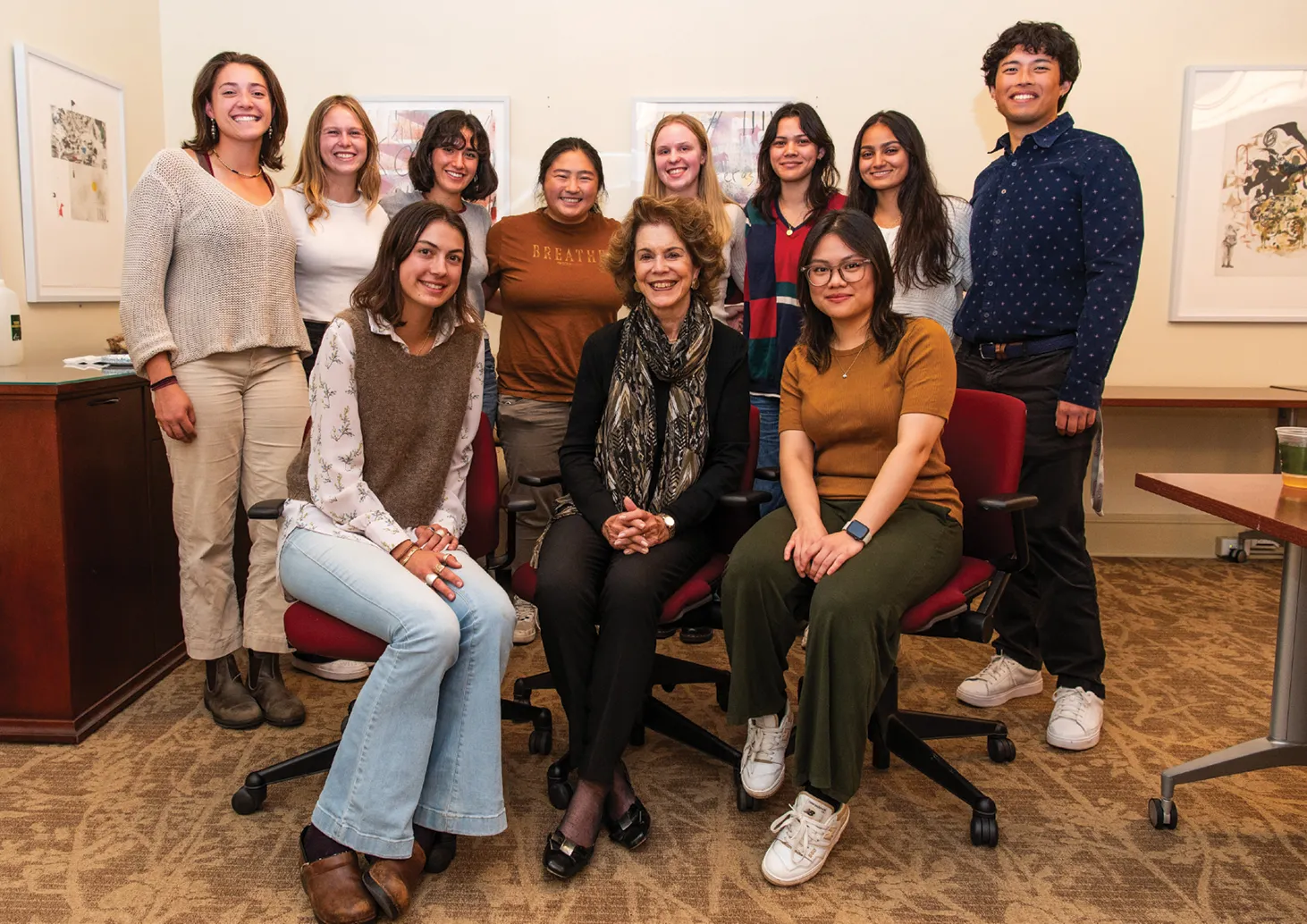
Everything, Everywhere, All at Once
Credit goes to the broad base of education Vassar students get in the classroom, including how to write, analyze, evaluate, and think critically—in other words, the fruits of a liberal arts curriculum. And though conventional wisdom holds that a liberal arts education doesn’t give students the skills they need to secure well-paying, satisfying careers, the numbers tell a different story. A 2020 study from the Georgetown University Center on Education and the Workforce found that while liberal arts graduates earn less than STEM and other graduates in the early years of their careers, over time, that disparity disappears—and then some. By 40 years after graduation, the median return on investment (ROI) of liberal arts colleges exceeds the median ROI of most other types of universities by 25 percent ($918,000 versus $723,000). Even more surprising, the 40-year median ROI of liberal arts institutions ($918,000) rivals those of four-year engineering and technology-related schools ($917,000), and four-year business and management schools ($913,000).
Those stats bear out for many Vassar graduates, as well. Answering the 2023 Vassar Alum Census for Vassar classes of 1953 to 2018, an impressive 92 percent of respondents said Vassar prepared them for a career; 94 percent said they are satisfied in those careers; and 95 percent said the benefits of a Vassar education outweigh the cost.
A Zig-Zagging Road to Success
Yet there’s an argument to be made that pivots and swerves can be a good thing in terms of finding a career that really fits. “We consistently see in our feedback from SCC that the students really appreciate getting to hear about the varied career paths and different twists and turns our alums take after Vassar,” says Swanson.
And it’s the so-called soft skills students pick up at Vassar that make them particularly well suited to pivoting in today’s volatile, rapidly changing world. At SCC this past January, that’s essentially what Munish Dabas ’02, a UX Engineer Lead at Google Play Games, told sophomores attending the tech panel. “I said that the number-one thing I picked up from Vassar was how to teach myself new things, which is important, because your career will meander,” says Dabas, who majored in computer science. “All the designers and engineers I work with are so focused on their hard skills, and I am, too, but I can also tell an effective story, put together a compelling PowerPoint, and influence people. Those are all things I picked up at Vassar.”
Employers seem to agree, given that within six months of graduation, 93 percent of Vassar alums are either employed, continuing their education, or participating in a fellowship or year-of-service program.
More evidence that liberal arts leads to success: A 2018 survey by the American Association of Colleges and Universities of more than 1,000 business executives and hiring managers found that the skills they valued most highly in graduates were effective speaking and writing, critical thinking, ethical judgment, a knack for teamwork, and real-world practical experience—the latter of which Vassar grads pick up in spades. A full 90 percent of students have benefitted from an internship or other experiential learning opportunity by graduation, well above the national average, according to Bingham.
“I think where a liberal arts education comes in handy is as people get five to ten years into their careers and hit manager and director levels,” says Charles Kim ’92, cofounder of Third State Books, which focuses on publishing Asian American voices and stories. “That’s when you have to advocate for yourself and your ideas, taking disparate pieces of information from multiple sources and forming an opinion, then cogently arguing for that opinion.”
Kim traces that ability in himself to a French literature class taken his first year at Vassar. “My professor, Madame Kerr [Cynthia Kerr, who retired in 2020], not only taught us great books but showed us how to tell the difference between a good book and a great book,” says Kim. “And she did it with such warmth that she made us feel as if our opinions mattered. That and the small classes made it easy to speak freely in front of others, which ends up coming in handy in the corporate and nonprofit world.”

Busy as she is, Brewer regularly picks up the phone to talk with recent grads interested in the public sector, making sure to tell them that Vassar and a liberal arts education will position them well for a career in public service. “Looking at the world with a wide lens, thinking critically, innovating—those are things Vassar instills and those are what we look for when we’re hiring,” she says.
Brewer is among the more than 250 alums who come back to campus in person (or virtually) every year to offer advice and wisdom to students. In 2019, she spoke on an SCC panel on public service with Liz Greenstein ’87, Chief of Staff for the NYC Mayor’s Office of Housing Recovery Operations, and Philip Cooke ’91, Associate Executive Director of Public Affairs for NYC Health + Hospitals/Harlem. The three didn’t know one another but they bonded over their shared paths—and decided that it would be a good idea to form a group for Vassar alums in city government and public service. Liz Greenstein spearheaded the effort, dubbing the group VC@NYC.gov and enticing more than 30 people to turn out for their first happy hour, despite the pouring rain. “There were folks from different classes, all of us doing different things,” says Greenstein. “I know that someone from Vassar, with a liberal arts education, will be smart, thoughtful, and have their eyes and heart open to understanding the world.”
To meet those open eyes and open hearts, alum-driven programs will continue to help students launch. Charles Kim, who has done SCC four times and regularly mentors Asian American students from Vassar, emigrated from South Korea at age seven with his family, then settled in Maine, where his mother, who didn’t speak English, waited tables to support them. “Maine is 96 percent white—the second whitest state in the country—so there wasn’t much of an immigrant community,” Kim recalls. He did have his identical twin brother, Ray, however, and the two of them attended Vassar together, both on scholarships, both majoring in Asian studies and French literature. “From the minute we walked on campus, we felt like full members of the Vassar community,” says Kim.
At SCC, in particular, he appreciates the chance to “lift the veil on book publishing,” as he puts it. “I didn’t have anyone modeling what a career in publishing or writing could be; like many immigrant parents, my mom wanted me to be a lawyer or a doctor or an engineer,” he recalls. “No one says, ‘Go work in publishing!’ So, I like to let kids coming up know that there are really enjoyable, enriching, and satisfying careers in publishing, despite the challenges.”
Kim also relishes the chance connections with other Vassar alums—and the unexpected collaborations that can result. “A few years ago at SCC, I met Joshunda Sanders ’00 and we ended up working on a book together called I Can Write the World (Six Foot Press, 2019), about a girl growing up in the Bronx who becomes a journalist,” says Kim. “That’s one connection that led to the publication of a very successful children’s book.”
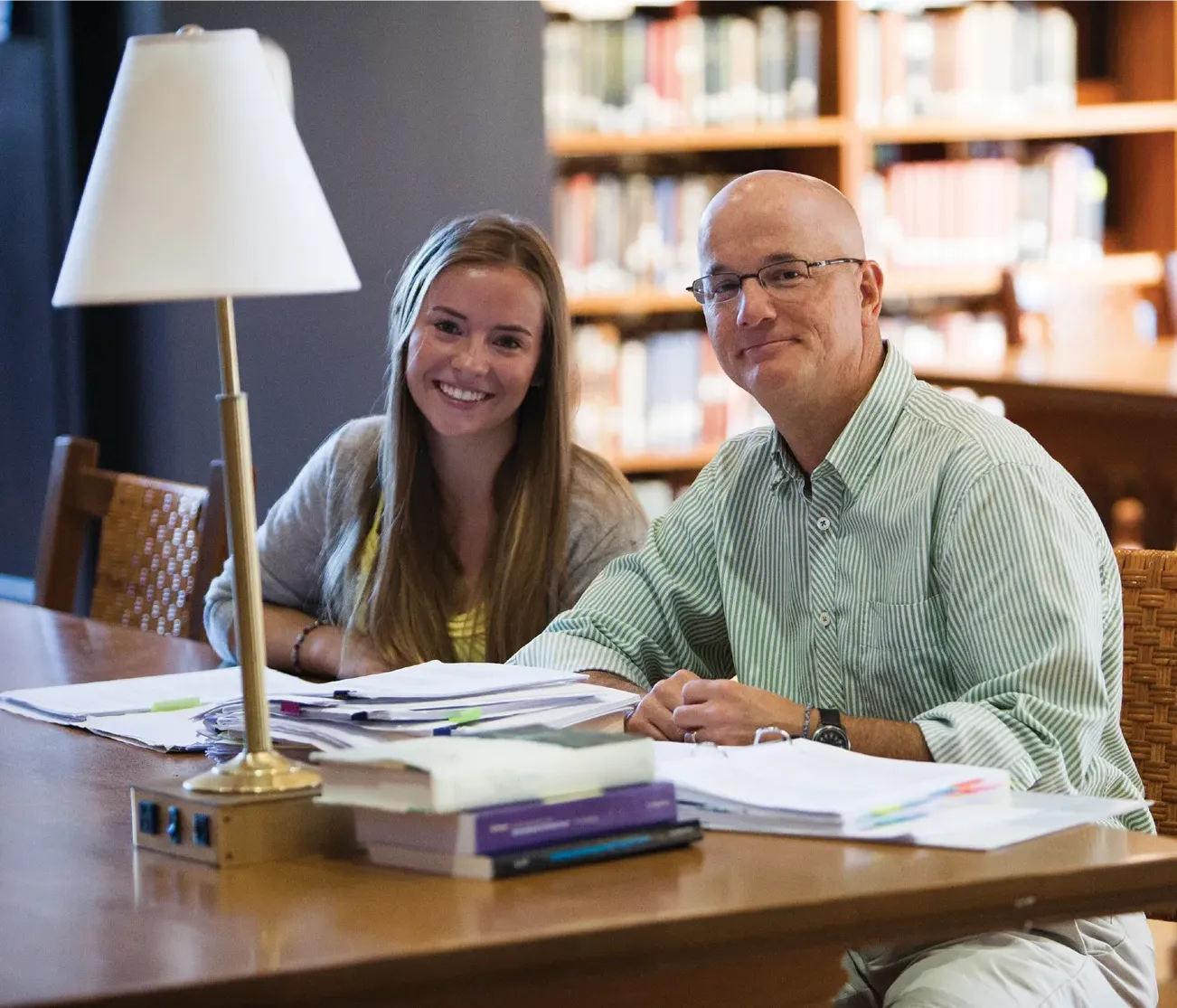
Lopez, who is also a Senior Corporate and Government Relations Consultant at the law firm Becker & Poliakoff, P.A., credits the power of the Vassar network with helping him break into his dream career—and relatively quickly at that. In his first year of law school, he applied “on a whim” to be an intern for the Clinton White House. “I was preparing to go work at a law firm as a summer associate, but one of the people in the intern office happened to be a Vassar grad, so I ended up getting a summer position in the Domestic Policy Office, where I was working on the second floor of the West Wing at the ripe old age of 23. It changed my life,” he says. “After that, I knew I wanted to focus on policy, so I finished my classes at law school in five semesters and came back to the Clinton White House to work at the Council on Environmental Quality. But it was the relationships and connections I made through that first internship that launched me.”
Ultimately, though, it was his first-year professor, Sidney Plotkin, who convinced Lopez that it was time for him to run for office. “The two of us keep in touch; when I’m in town we’ll get coffee at the Acropolis and have a three-hour talk fest,” says Lopez. “So, one day, I called him up and I said, ‘Is it the right time to run?’ He told me it was—he had insight into me that I didn’t have into myself.”
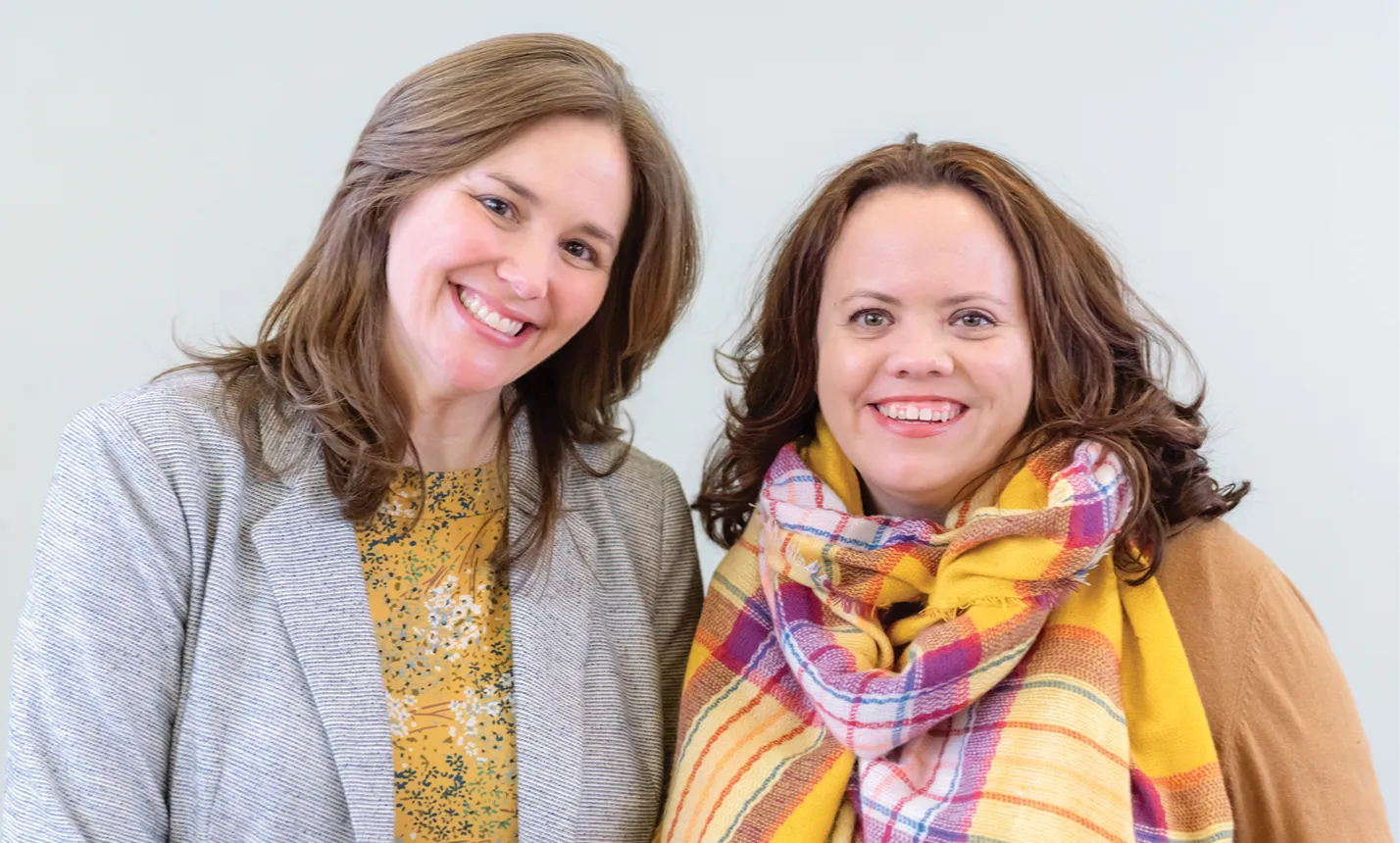
Karl Rabe
That’s one reason he was so excited to pay it forward and return to campus to be an SCC mentor in January of 2024. “Between breakfast and lunch that first day, I got one student’s CV, two phone calls from students, and made seven new LinkedIn friends,” he said with a laugh. He welcomed them all. “When students get in touch, I always try to make time and repay the debt I owe to all the amazing Vassar people who touched my life in direct or indirect ways,” he muses. “Because of my education and the Vassar network, I’ve had a career beyond my wildest expectations.”


This Year’s Sophomore Career Connections
The event is co-hosted by the Center for Career Education and the Office of Advancement.
This year’s program gave sophomores the chance to connect with mentors in 18 different industries, including two new sectors—data science and public health.
Keynote speaker Ilyse Hogue ’91, longtime activist, political strategist, and former President and CEO of the National Abortion Rights Action League (NARAL), set the tone for the weekend by advising students to use the curiosity they employ every day at Vassar to embrace the world’s complexity.
“I am the poster child for a liberal arts education,” Hogue said during her 30-minute address in Skinner Hall. “Your ability to think critically will serve you for a lifetime.” She urged students to “find a career that enables you to maintain that curiosity. If you do, you will leave the world a better place than you found it, and that’s all anyone can ask.”
Beyond Vassar

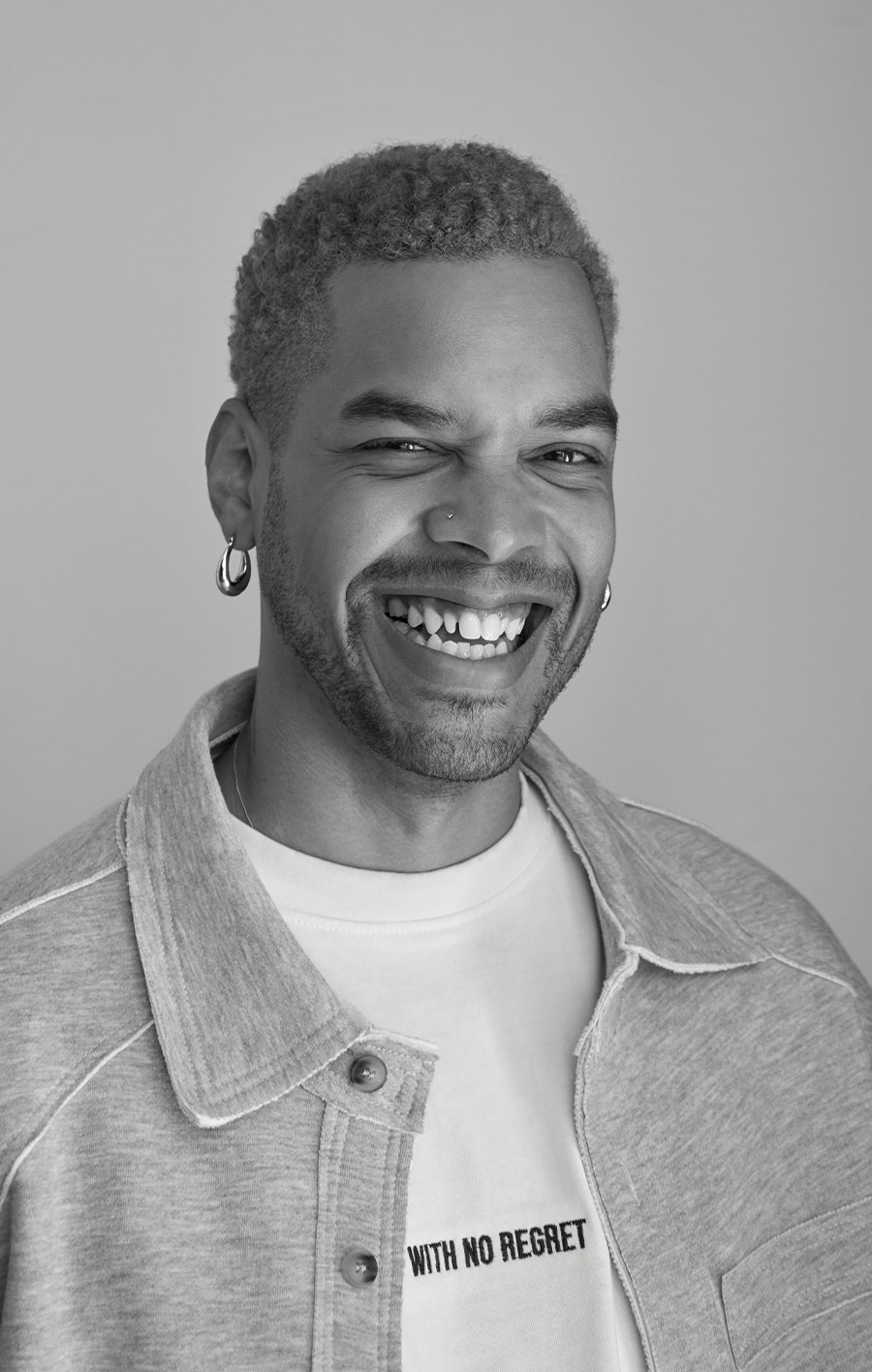
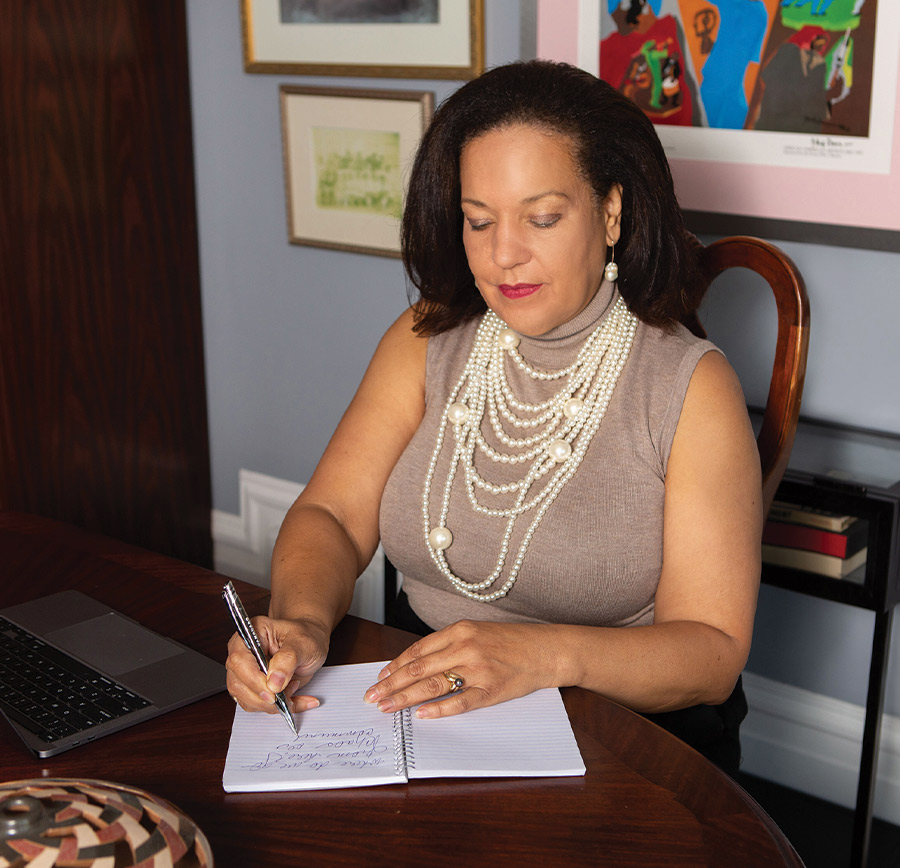

CFHV Board of Trustees Chair Charles “Chip” Simon said Washington stood out for her background in strategic planning, communications, and successful grant campaigns—but also for her Hudson Valley alma mater. “When we considered that she’s also a graduate of Vassar College, we knew she was the perfect match to serve our board, staff, and community partners,” he said.
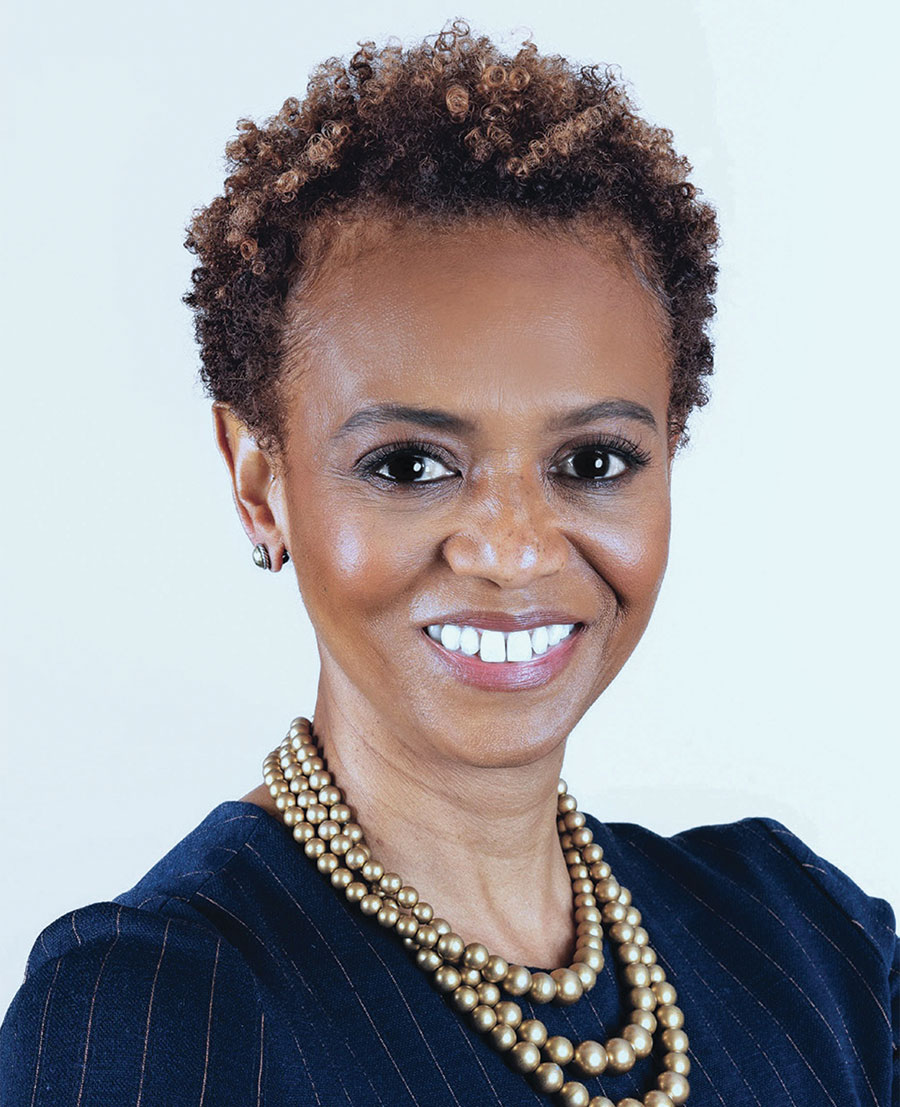
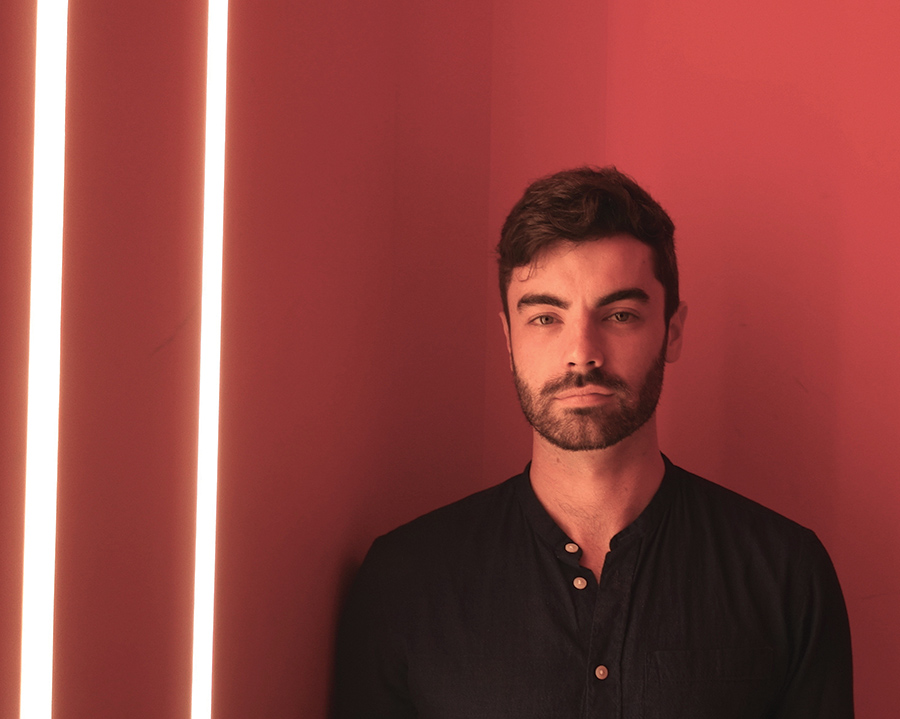
Two Vassar Grads Embark on Study in China After Winning Fellowships
wo Vassar alums have each been awarded one of the most prestigious and most competitive post-graduate fellowships in the world. On December 7, Aena Khan ’22 was awarded a Schwarzman Scholarship for a fully funded master’s program in global affairs at Schwarzman College on the campus of Tsinghua University in Beijing, China. She will begin her studies in the fall of 2024. Frank Najarro-Izquierdo ’18 was awarded a Schwarzman Scholarship last year and is currently enrolled in the program.
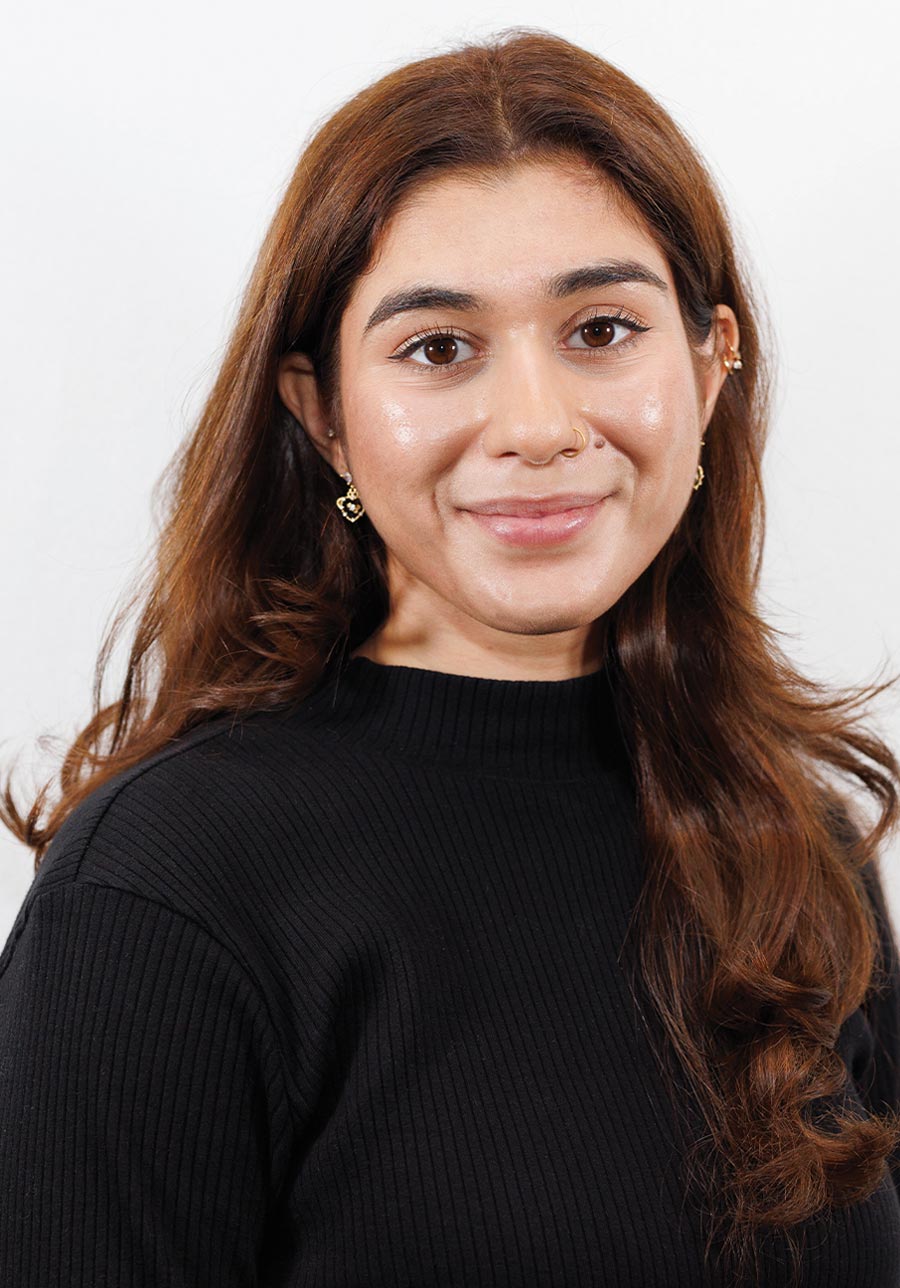
Lauren Eliot
Khan, who was Senior Class President and an editor of the Miscellany News, majored in international studies. She specialized in political science and history but took a number of geography courses, including some that focused on China taught by Professor of Geography and Chair of Earth Science and Geography Yu Zhou. “I learned about environmental issues and urban planning with Yu Zhou,” she said. “[The classes] exposed me to how China functions differently from the United States.”
Khan, who was born in New York City to Pakistani parents, said she became even more keenly interested in the Chinese culture and economy when she returned to Pakistan while conducting research for her Vassar senior thesis. Ultimately, that experience led her to apply for the Schwarzman fellowship. “The country is now the largest recipient of Chinese foreign investment, and what I saw there made me more curious about China’s economy and politics,” she said.
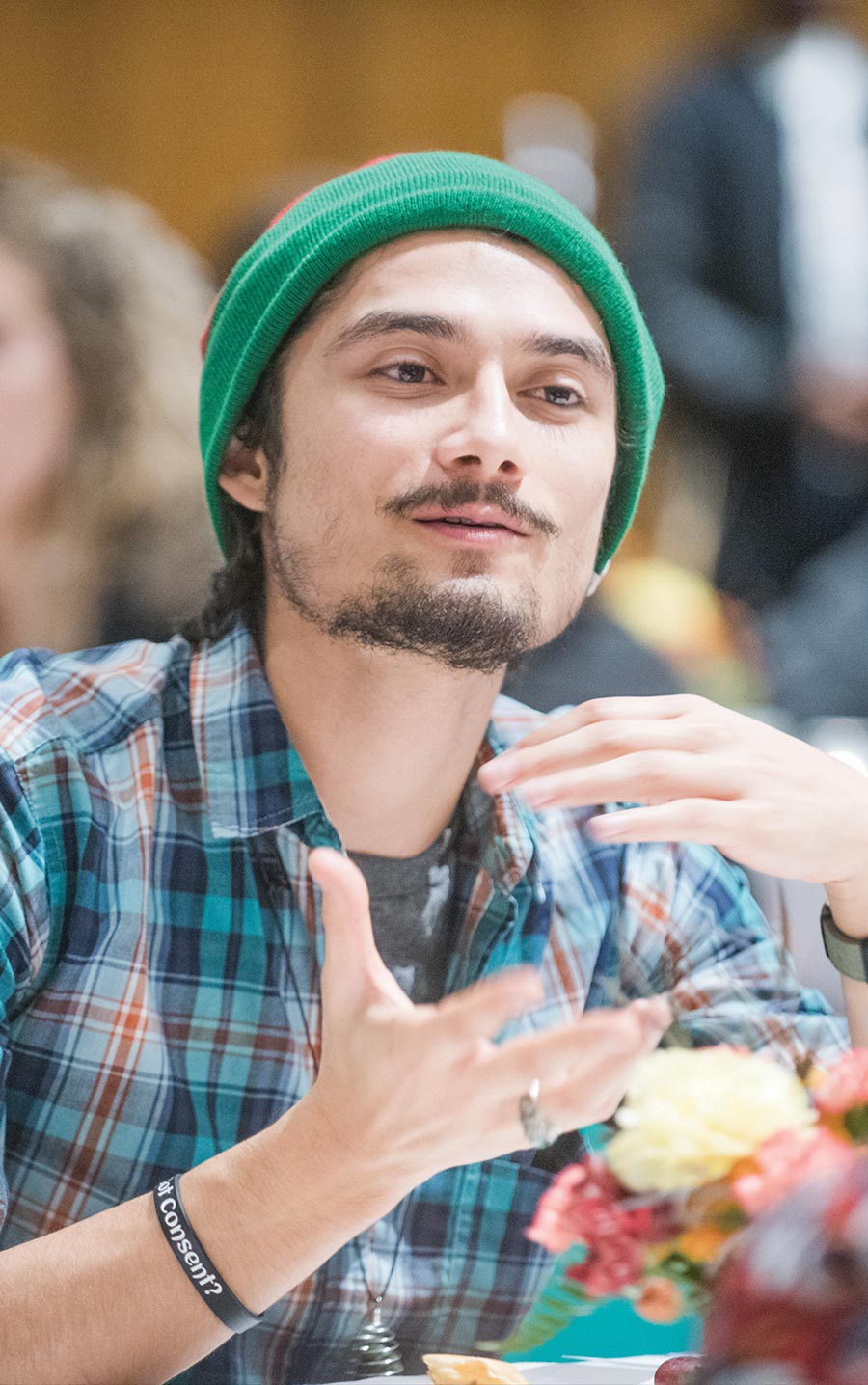
Karl Rabe
He said he had intended to major in theater or biology, his two passions in high school, when he enrolled at Vassar, but his plans changed abruptly when he took an introductory anthropology course with Professor Candice Lowe Swift “just to fill out my schedule” for his first semester. “That course changed my entire academic trajectory,” he said. “For the first time, I had a vocabulary to understand poverty, inequality, and racial and cultural differences.”
Najarro-Izquierdo got his first hands-on exposure to Asian culture when he accompanied Professor of Anthropology Martha Kaplan on a research trip to Singapore in the summer of 2016. “It was then that I realized that when you’re an anthropologist, the world is kind of your oyster,” he said. “You can study anything and go anywhere.”
Najarro-Izquierdo said he had thoroughly enjoyed his first semester in Beijing. “You can’t really understand China until you’ve been here. Books or videos or other secondary sources aren’t good enough,” he said. “I am learning about a culture with a long history that is globally powerful, and the experience will guide me in the decisions I make about my career and my future.”

How to Dance on Broadway!
How a documentary about the social lives of young adults with autism by Alexandra Shiva ’95 became a Broadway musical
In her 2015 Peabody Award–winning documentary, How to Dance in Ohio, Alexandra Shiva ’95 introduced viewers to a group of teens participating in this ritual for the first time through the lens of an added challenge: a diagnosis of autism. Critically acclaimed for its sensitive treatment of her subjects and their interactions with Ohio-based psychologist Dr. Emilio Amigo, the documentary focused on a three-month period leading up to the dance in which the young people practiced social skills, including how to accept rejection.
Shiva recalls her excitement when famed director and producer Hal Prince approached her with the idea of transforming the material to a new medium: a musical. At the end of 2023, almost nine years after the film premiered, How to Dance in Ohio, the stage production, opened on Broadway for a limited run in December. With all of the autistic characters being played by actors with autism, the show is breaking new ground.
Among the ensemble cast of talented young actors—all of whom sing and dance—was Vassar alum Imani Russell ’18, who identifies as a Black+Boricua, queer, and disabled. Their character, Mel, based on a young person named Melissa, now Monte, offered audience members insight into the difficulty people with autism can encounter in the workplace.
“As a musical, the story is more fun,” Shiva said, “and more family-friendly. It speaks to a lot of the confusion kids have about growing up and fumbling through, and the mistakes you make as you get there.” The Broadway team’s commitment to making How to Dance in Ohio accessible for all audiences, including those with autism, was in evidence at every performance. There were special cooldown areas in the theater, as well as aids such as headsets, available to anyone who might have found the show overstimulating. Nevertheless, the show didn’t hold back, and the performances were as big, colorful, and energetic as any musical fan could hope for.
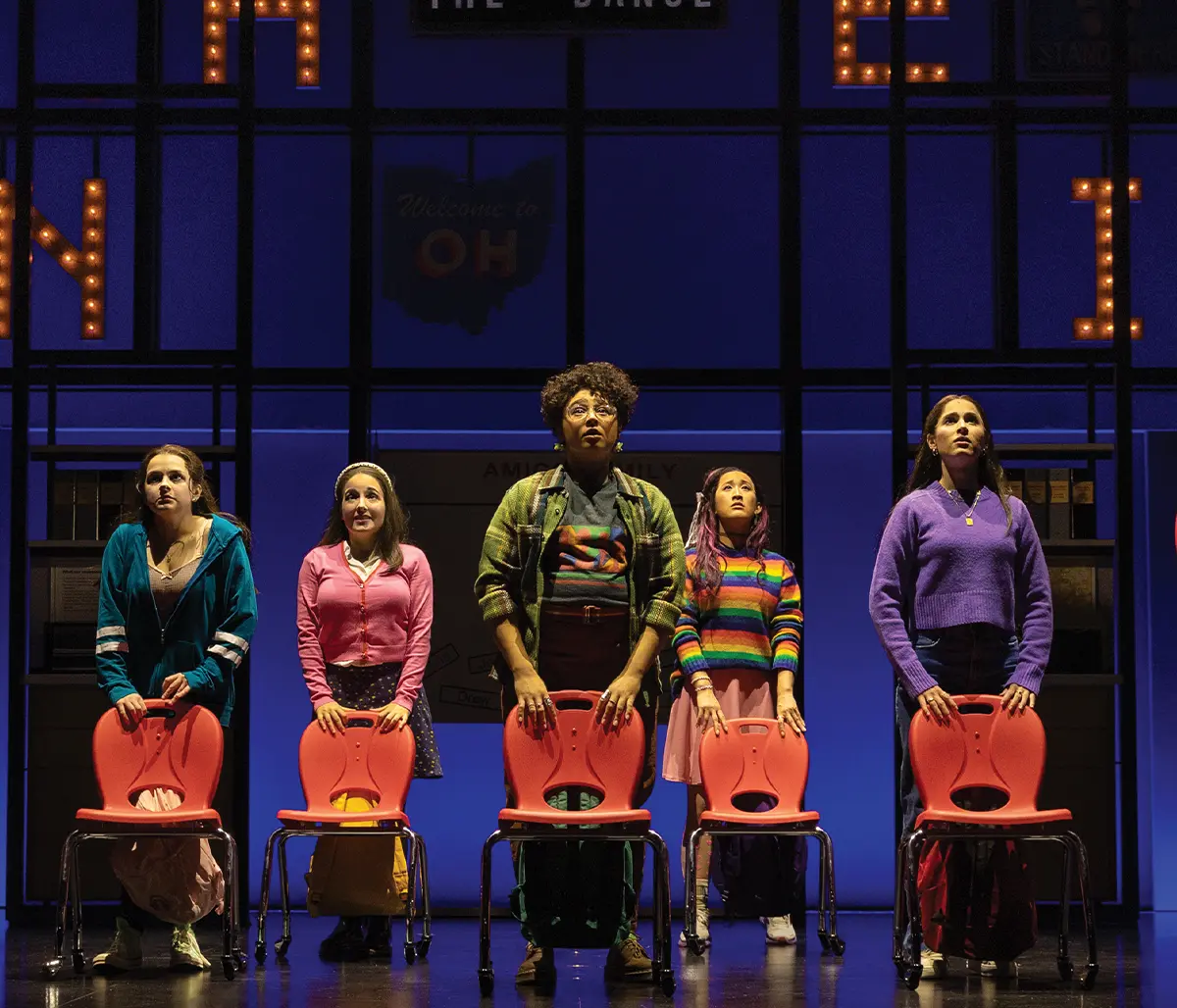
Samuel Stuart Photography / © Curtis Brown
While Prince did not see the musical come to fruition—he passed away in 2019—the creative team behind the show continued to consult with Shiva, who provided unused film footage that helped inform a number of scenes. Shiva also arranged an essential meeting with the clients at the Amigo Family Counseling Center; elements of that meeting and the conversations that followed are now a part of the show as well.
As with the making of the documentary, the young people whose stories serve as the basis for the production had questions—could they audition for a role in the show and how much of the material would be made up?—as well as a few concerns about representation. For example, would the characters have a stereotypical “autism voice,” one lacking in inflection, that some storytellers have used to signal autism?
Concerns also extended to the language. When Shiva began working on her film, her subjects preferred a person-first descriptor, i.e., “a young adult with autism.” The actors in the musical preferred identity-first language, i.e., “an autistic young adult.”
“It depends on who you’re talking to,” Shiva notes.
Those in the cast were also eager to see the stories of more of the group’s members included. The show’s focus subsequently expanded to include seven characters versus the three young women who were followed in the film. Partly fictional depictions of the emotional lives of family members and clinic staff are also added in the musical.
“Documentaries are their own art form with limitations that you just don’t have when you’re creating a narrative structure that allows you to expand and make changes,” Shiva said. “I think the [Broadway team] did an incredible job working with the source material, but also broadening the story.”
Shiva’s interest in creating her film was originally sparked by a close friendship with the parents of a teenager with autism and her curiosity about what services are available to families. “Understandably, there’s a lot of attention on young children with autism,” she explained, “but what happens when they get older? What kind of integration is out there? Is the world ready for them? And are they ready for the world?” A chance meeting with a client at the Center led her to Dr. Amigo, whom Shiva describes as “a great storyteller” and “a big personality” with a love of dance. When she learned he was planning a spring formal with his clients, Shiva immediately knew she had found her subject.
While the run on Broadway has ended, How to Dance in Ohio, the documentary, continues to reach viewers on HBO Max.
Shiva has gone on to complete a number of other projects since making the film, including This Is Home (2018), her documentary about Syrian refugees newly arrived in the U.S., and Each and Every Day (2021), which focuses on teenagers who have attempted suicide or have suicidal ideation. The latter project, which aired on MTV (and is available on demand), was filmed during the pandemic-related shutdown and much of the footage was completed remotely. While these constraints were not optimal, Shiva noted that “it works for the subject matter,” given the underlying theme of isolation experienced by the subjects.
She is currently completing another film for HBO that is scheduled to air this spring. In all of her work, Shiva says, “the throughline is to show the surprising connections, to show the shared humanity, instead of what makes us different.”
Good Jeans
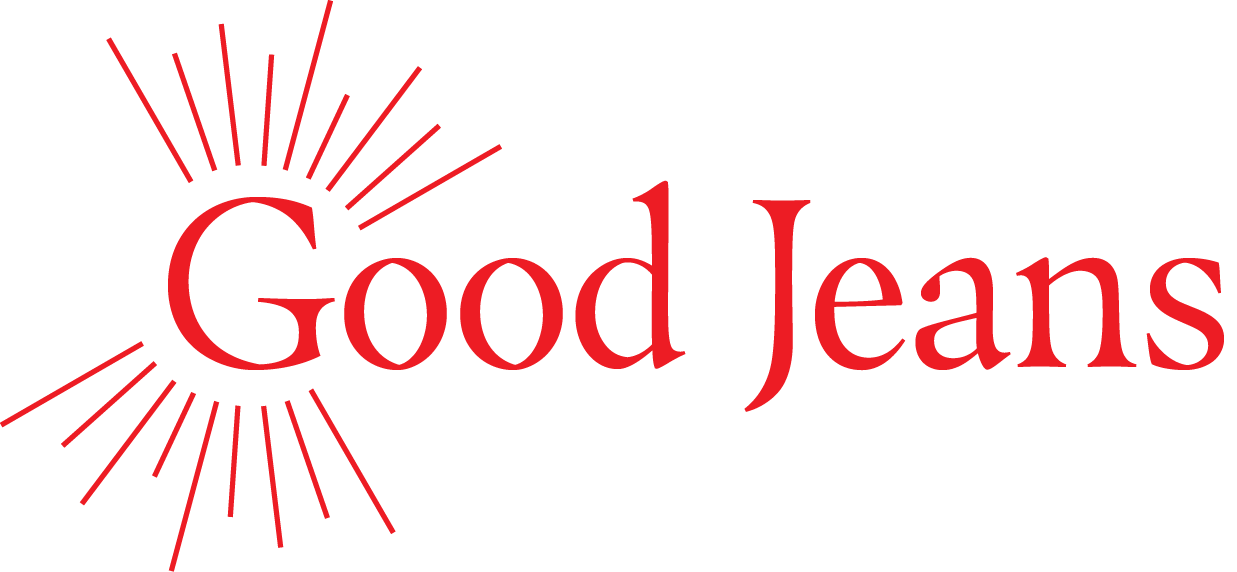
The rise of @edgyalbert has continued in the past several months. Already this year, Muzquiz announced he is a Levi’s “ambassador.” In the fall, he had content deals with Ralph Lauren and Mr Porter and collaborated with belt maker Maximum Henry. A Timex paid partnership video he posted in September got more than 16 million views, his most-watched clip ever. Last summer, GQ called him a “social media sensation,” and in October, the fashion and beauty publication Glossy described him as “something of a guru.” Glossy quoted an industry observer as saying, “Muzquiz’s influence not only on how young guys dress these days but how menswear influencers present themselves can’t be overstated.”
In real life, Muzquiz is just as cool but not quite as “edgy” as his social media persona. “Part of it is genuine, for sure,” he says, but part is playing a character. It makes sense that he’s good at it, having gone to a performing arts high school and then done sketch comedy and improv at Vassar. College is also where his interest in men’s clothing grew. As a history major, he wrote his thesis on Levi’s and masculinity. Other papers in the department “were about the firebombing of Dresden or something, and I had this very silly write-about-jeans one,” he says.
After college, Muzquiz did some fashion writing and worked as a sales associate at one company that sells denim and other clothing and as a buyer at another. But it was during the pandemic that he became more interested in learning about vintage clothing and sharing his knowledge on social media. He felt like existing content creators who offered style tips didn’t focus enough on the history, character, and ethics of pieces. “It was people talking about, ‘You need green pants,’” he says. He wanted to do something different, and his approach quickly worked. One of his first TikTok videos got more than a million views. Another early one, in which he jokingly offered to “cyberbully your boyfriend until he starts to dress better,” got three million.
“He wears many hats,” says Caitlan Moore ’16, who lived with Muzquiz and last year directed him in LBJ: The Play, a comedy about Lyndon B. Johnson. “He can be the authoritative fashion historian, but he can also then shed all of that and be a really solid actor who just brings what the role requires to it.”
Sunny Zimmerman ’16, who wrote and directed the play, which will be part of the “Netflix Is A Joke Fest” in May, says Muzquiz’s social media rise makes sense. “It’s always been a part of his personality and his character,” says Zimmerman, who did improv with Muzquiz at Vassar. “Seeing him be able to use all of his expertise and knowledge for something in a way that combines his ability to act and play a role … It’s been both wild and inevitable just to watch this happen.”
Hundreds of videos later, all that work has amounted to not just a thriving social media career but also an extremely impressive personal clothing collection. Moore says Muzquiz’s closet had “the most tweed and corduroy and wool that you’ve ever seen.” He even had a locker for denim. “I also love jeans, but they’re just shoved in a drawer that sometimes doesn’t close,” Moore says. “But you open this locker and there are just stacks of beautiful different shades of indigo, and everything is folded nicely.”
Muzquiz’s number-one style tip for men? Start with a good pair of high-waisted trousers. “Someone changing their pants,” he says with a laugh, “can really change their life.”
Follow Muzquiz on Instagram and TikTok @edgyalbert.
Sonia Broman
An Intimacy Coordinator Explains
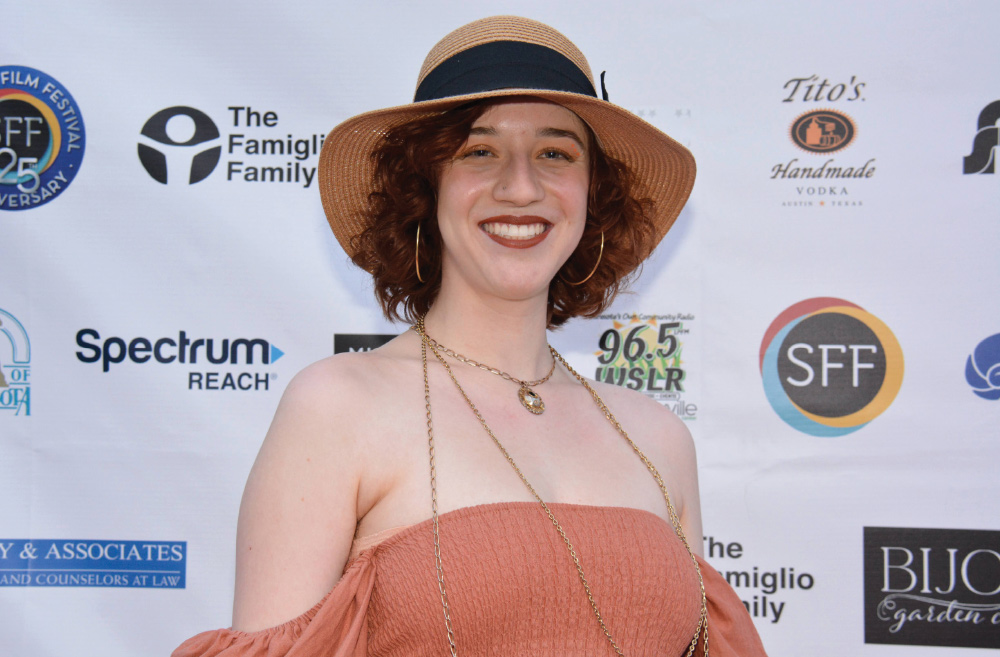
Courtesy of Phaedra To Black, LLC
hen Acacia DëQueer (née Willis) started at Vassar as a film major, intimacy coordination in film—today their passion and vocation—did not exist. By the time DëQueer graduated, the #MeToo movement had sparked a demand to protect actors portraying intimate scenes in movies, and DëQueer had found their calling in the field. Now, five years later, intimacy coordinators are a common presence on movie sets. DëQueer, meanwhile, is an extensively trained intimacy professional with a stack of film credits who has been published in the field’s academic publication, The Journal of Consent-Based Performance. In other words, both DëQueer and their profession have come a long way in a very short time.
When DëQueer (a self-described nonbinary “manic pixie dream girl” who uses they/them/their and the neopronouns fae/fem/faer interchangeably) first got to Vassar, they wanted to double-major in drama and film. Their advisor urged them take advantage of Vassar’s liberal arts offerings and diversify. “I’m so glad I did,” they said. “My time at Vassar was spent learning about the issues that I wanted to show in film. It set the foundation for all my work.”
At first, the goal was to direct. “I’m not saying I don’t ever want to direct,” DëQueer said. “But the reason I wanted to direct was because I wanted to tell stories about gender and sexuality. And suddenly, here was this position [where] that’s all I had to do. No one expected me to do anything else or be anything other than I was. It was perfect from the moment I found it.”
After graduation in 2019, DëQueer was able to acquire some training in the field before COVID drove instruction online, giving them access to organizations all over the world. This industry training, along with what they had learned from courses on women and queer studies and from choreographing for Vassar’s burlesque club (they were Vice President), helped DëQueer quickly launch a career in this nascent field.
While the work of intimacy coordinators has become more well known in recent years, the profession involves more than you might assume. “People perceive us as the sex police,” said DëQueer. In reality, their skills are essential to both the work of the cast and crew on set and the story that ultimately appears on screen. DëQueer is involved in any scene that involves close contact between actors—affection between an adult and child, for example; medical intimacy, such as a character giving birth or having a miscarriage; death scenes—“dying in someone’s arms is intimacy,” they said, “and also hard on your emotions.” Part of their responsibility is the psychological safety of everyone on set—foremost the actors, whom DëQueer helps to negotiate and respect one another’s physical boundaries—but also the crew, as anyone witnessing the portrayal of a traumatic scene could become triggered. DëQueer, armed with mental health first aid training, can offer support.
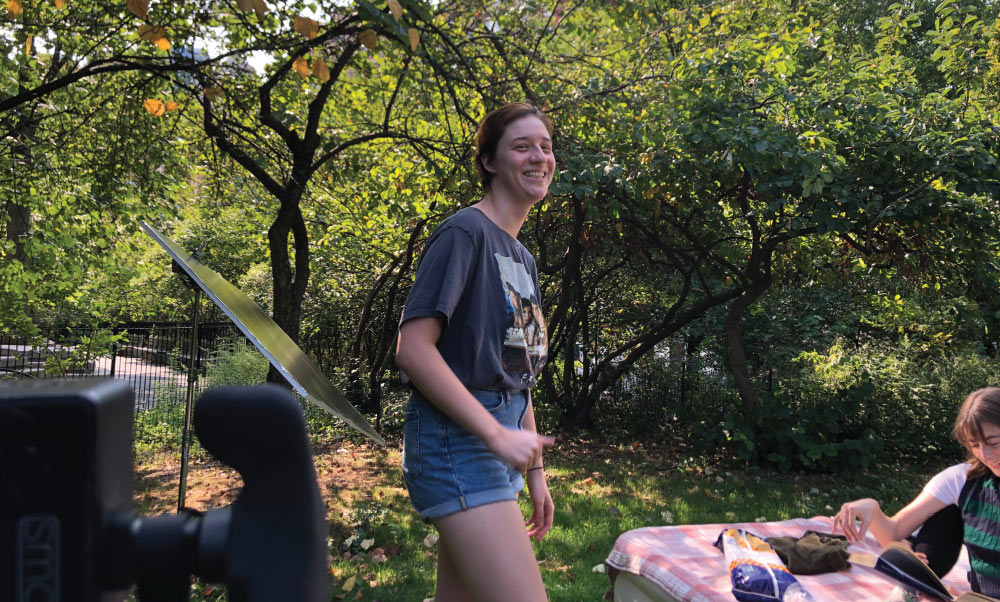
Courtesy of the subject
DëQueer asserts that their career was made possible by their Vassar education. “The film and television theories and history I learned is information I draw on daily,” they said. They got their first job in intimacy coordination thanks to a short film they made in one of Professor Shane Omar Slattery-Quintanilla’s courses. They created their professional website as part of that class; Matthew Mueller, Certified Rehabilitation Counselor, then DëQueer’s advisor in the Office of Accessibility and Educational Opportunity, gifted them their domain name (acacia.gay) for graduation. “[Vassar] supported me and what I do now as an artist, as a social justice advocate, as a person,” they said.
In fact, Vassar was the first place DëQueer learned about consent, from a presentation by a group called Speak About It during first-year Orientation. “It was a light-bulb moment,” they said, and a sort of antidote to the experience they’d had the previous summer, when they experienced their first kiss. When they reported back to their high school friends, “They were, like, ‘Ew, gross, they asked if they could kiss you?’” DëQueer relayed. “[Before I got to Vassar] I had no language to distinguish a consensual encounter from a nonconsensual one. It was the first time I learned that consent was something desirable, or an aspect of intimacy at all.”
In a full-circle moment, DëQueer returned to campus last year to perform with Speak About It during Orientation, providing that same light-bulb moment to students at the start of their college careers.
What else would they like to share with today’s students? “Focus on what your passion is,” they said. “There is a career out there for you that absolutely supports that. I didn’t know mine—mine literally didn’t exist when I started at Vassar, but here I am, living my dream that I didn’t know to dream.”
Happy Camper
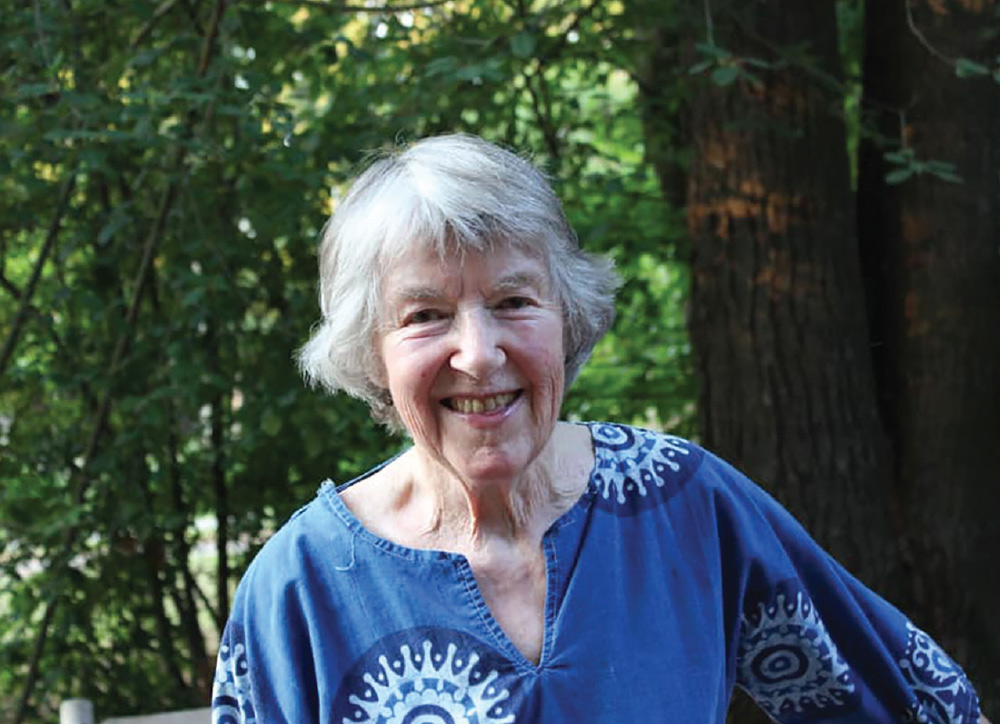
Farrington jokes that this coming year will be her “99th” summer at Camp Whippoorwill. Until last summer, she was a rowing teacher for the camp—Augur Lake, which borders the property, is one of her favorite places. Before specializing in rowing as a retiree, she taught riflery, then horseback riding for many years, followed by waterfront activities and trip leadership.
“I have never missed a summer,” Farrington said. “Baby, pre-camper, day camper, camper, aide, counselor, section leader, activity leader, and the director for 20 years.”
Nowadays, she’s a consultant and “all-around helper” at the camp. She’s a Cabin Visitor, leaving helpful notes on cleanliness and rewarding those with 10 “excellents” with candy bars. She’s also a mail manager, a general housekeeper, a storekeeper, and general support person. As the camp storyteller, she regales campers with tales of the property’s history around the weekly campfire.
According to Farrington, her major at Vassar—an interdepartmental combination of psychology, sociology, and child study—was put to great use while working with children at the camp.
“It was a happy time despite the war, and we focused on studying, making friends, barely dating, swimming, playing squash, bicycling around the campus and area,” she said. “I worked in the library at Blodgett, and we all had mandatory chores in the dorms cleaning bathrooms, kitchen, dining room, etc.”
Due to the war, Vassar gave students the option to graduate in three years instead of four. Farrington chose to do so in three, graduating the year after World War II officially ended.
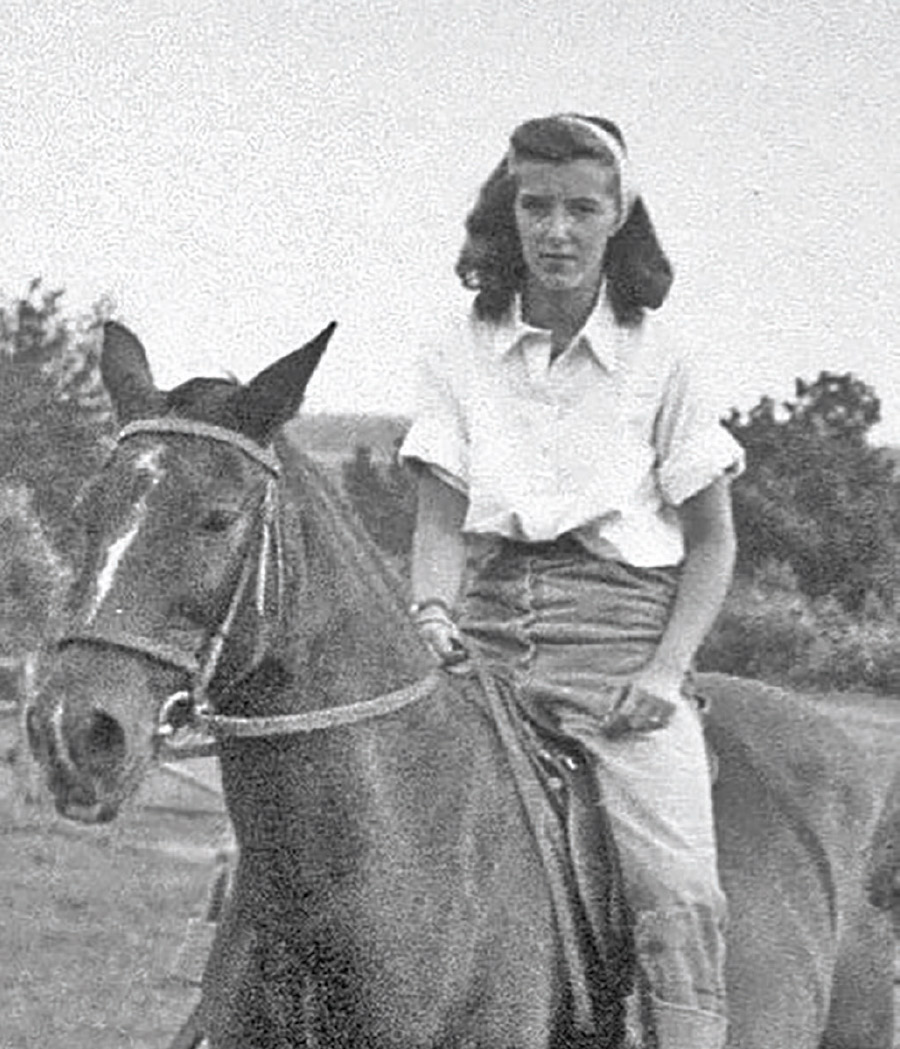
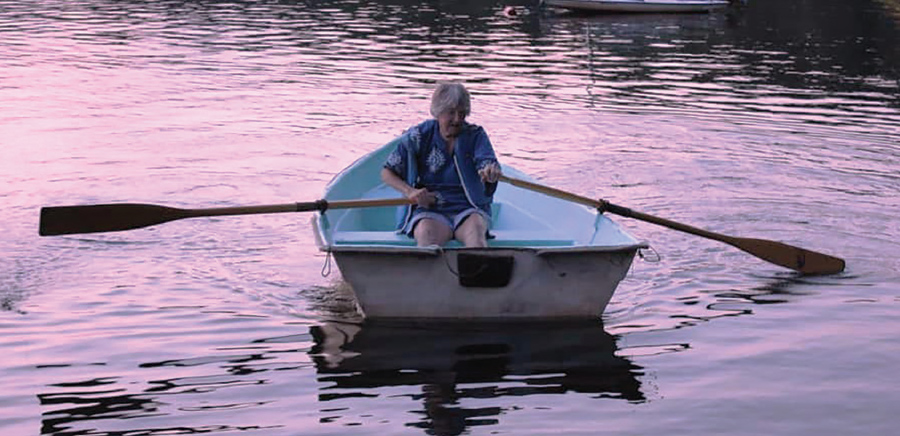
Courtesy of the Subject
The couple embarked on what she calls “the adventure of a lifetime,” a six-month tour of England and Europe. “We bought bikes in Cambridge, pedaled to Scotland and down to Oxford staying in youth hostels, sold the bikes, and sailed to Norway,” Farrington said. “We met new friends in Denmark and traveled with them down through Germany, Switzerland, and Italy. From there, we skied in the Alps and in Austria, then on to the Riviera, a tour through Spain, back to Paris, and a trip home on the Queen Mary.”
Upon their return, the Farringtons purchased the home where Jan still resides. They also bought a sailboat, which was leased back to a Caribbean charter service, and took four weeks out of the year to free sail during school vacations.
These days, when not at the camp, Farrington spends her free time volunteering at her church, reading, solving crossword puzzles, and watching Hallmark movies—her guilty pleasure. Before COVID, she volunteered at her local food bank for 25 years.
“Throughout my life, I have been very conscious of the privilege of being a Vassar grad,” she said. “I am grateful for the opportunity to have shared my knowledge and experience and to be able to make a small contribution to the world around me confidently.”
Celebrate Vassar
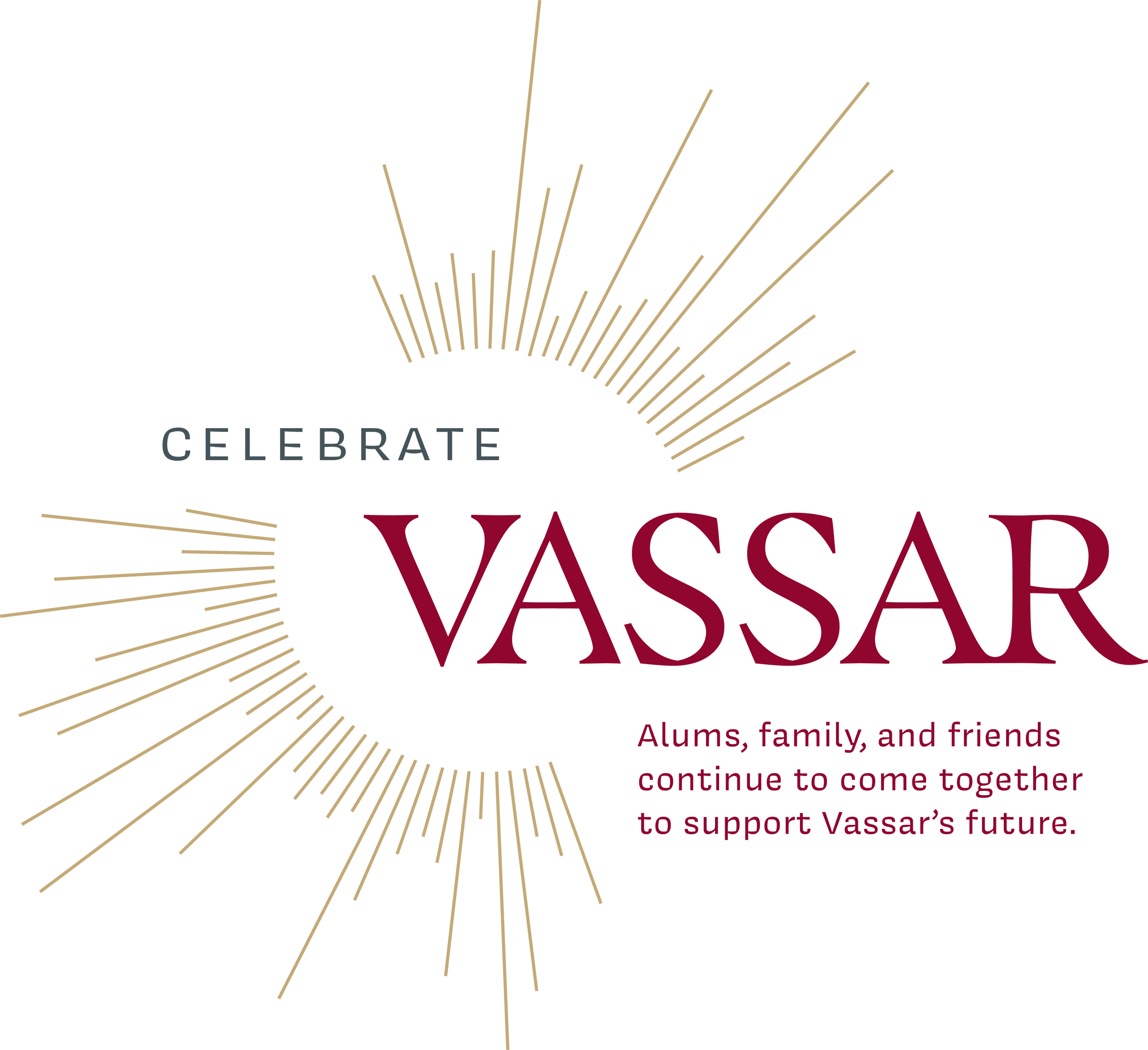
The fall 2023 events—many at capacity—drew a huge young alum presence and Vassar Club leadership, with Board of Trustees member Carol Ostrow ’77, P’09,’15 attending all but one. Here are some highlights from the celebrations held during the fall 2023 and spring 2024 semesters.
Philadelphia, Barnes Foundation
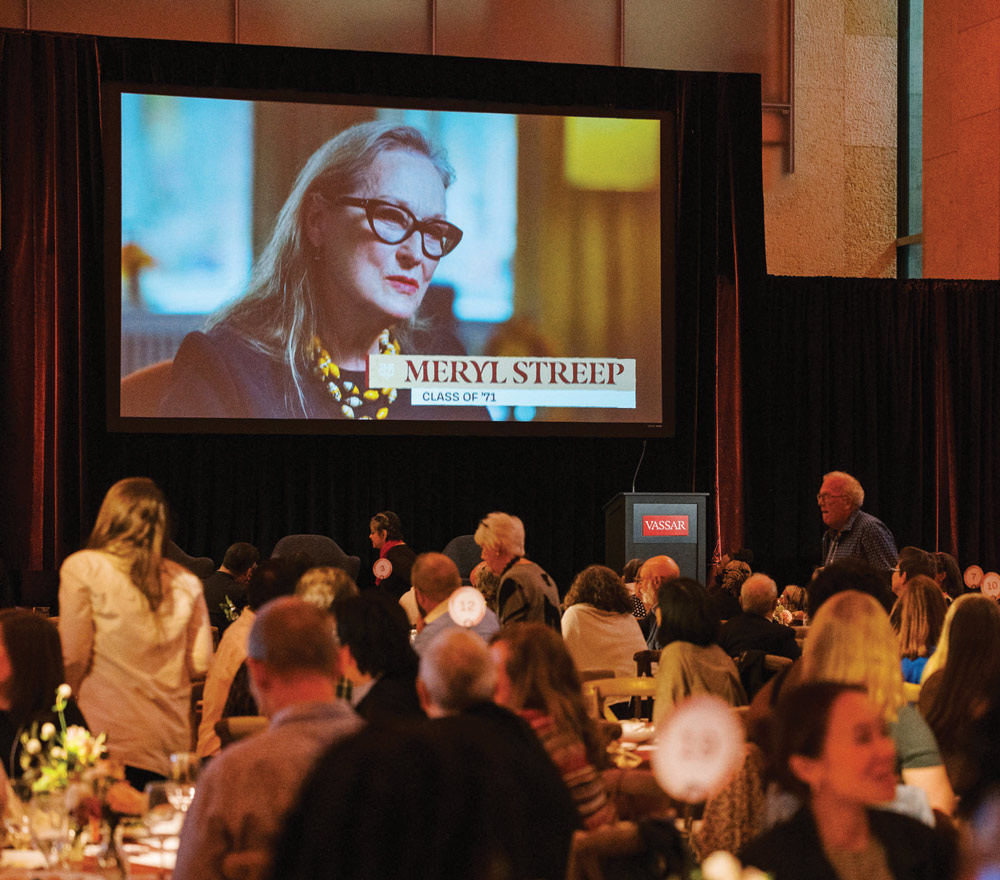
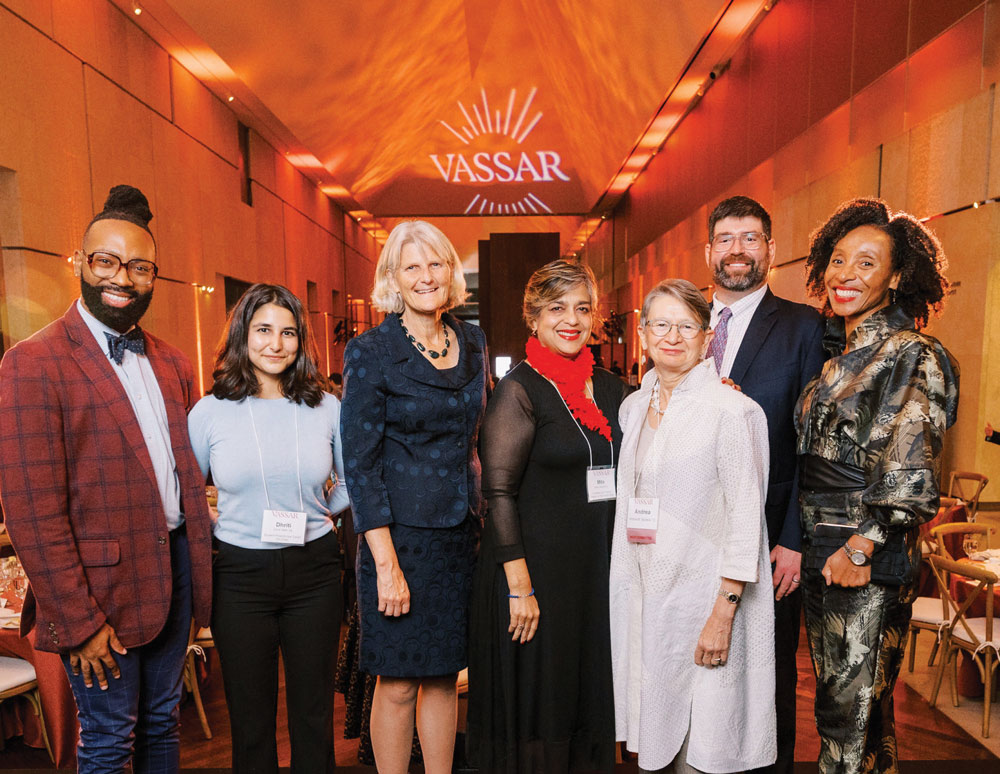
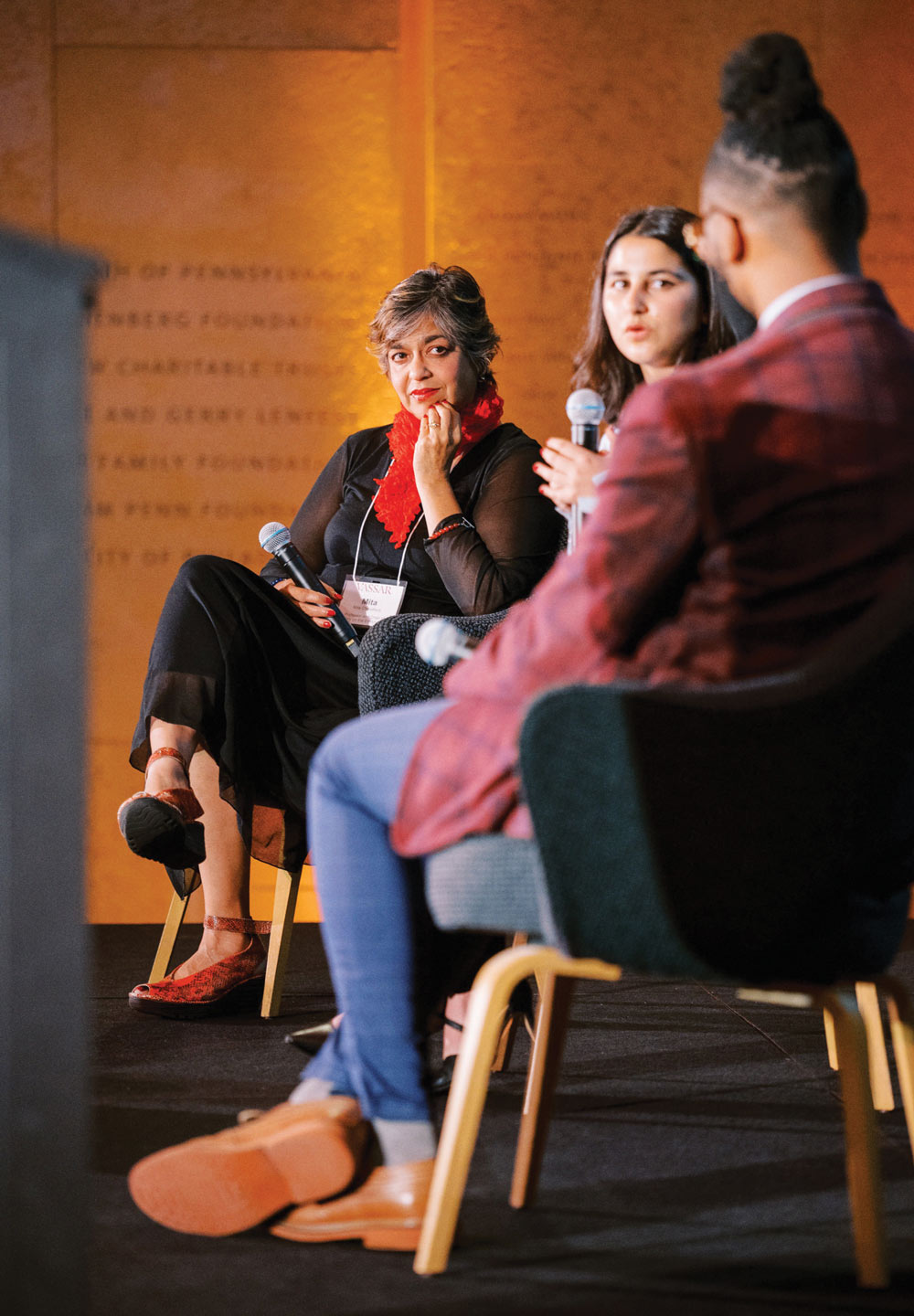
Alex Schon Photography
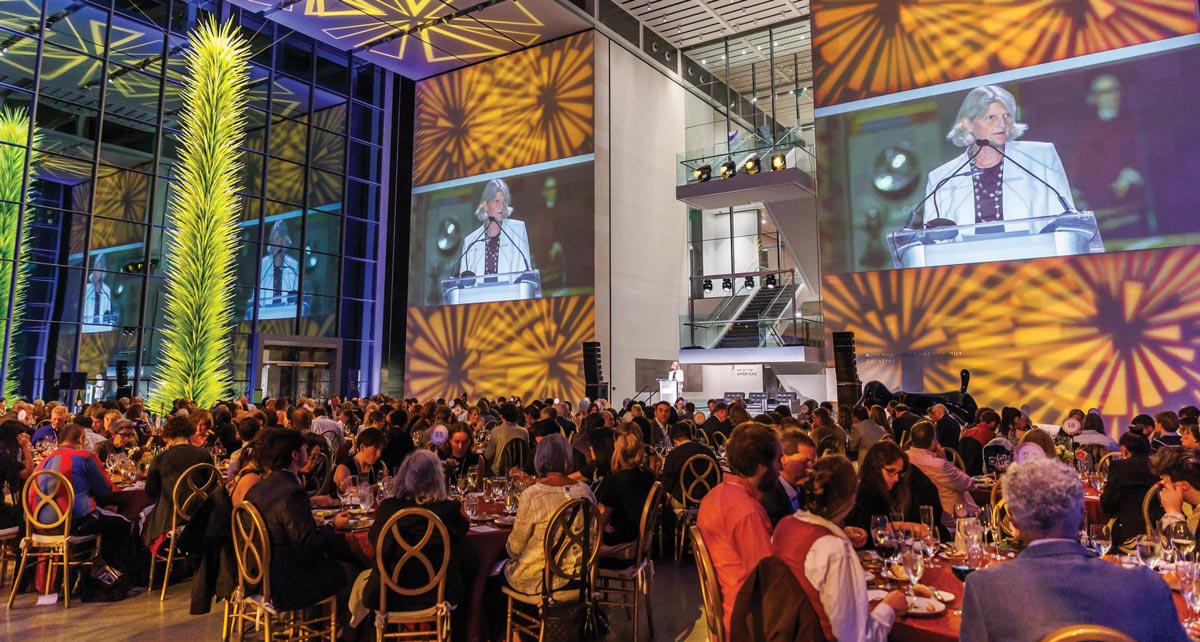
Boston, Museum of Fine Arts
Paige Brown Photography
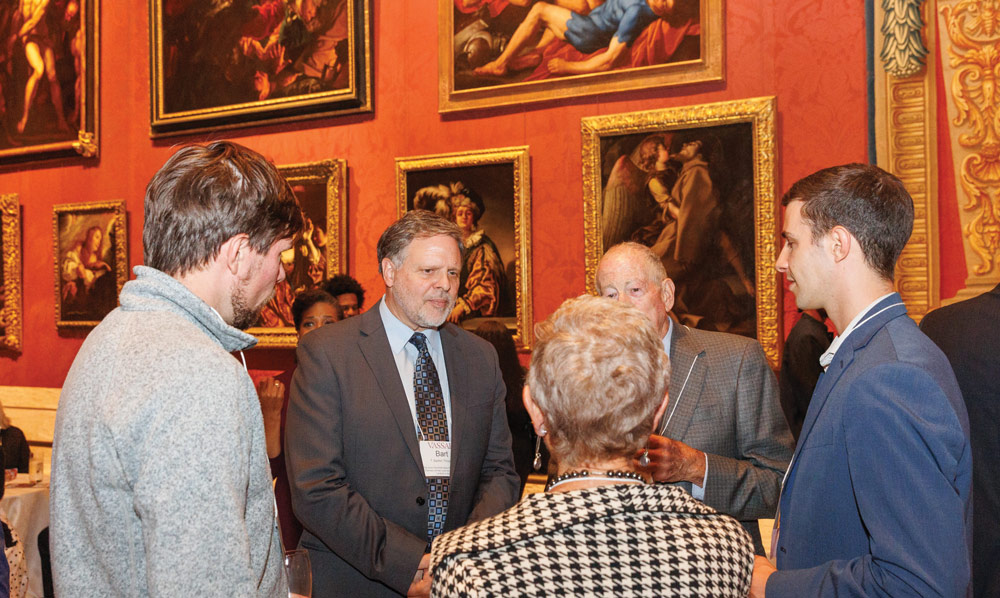
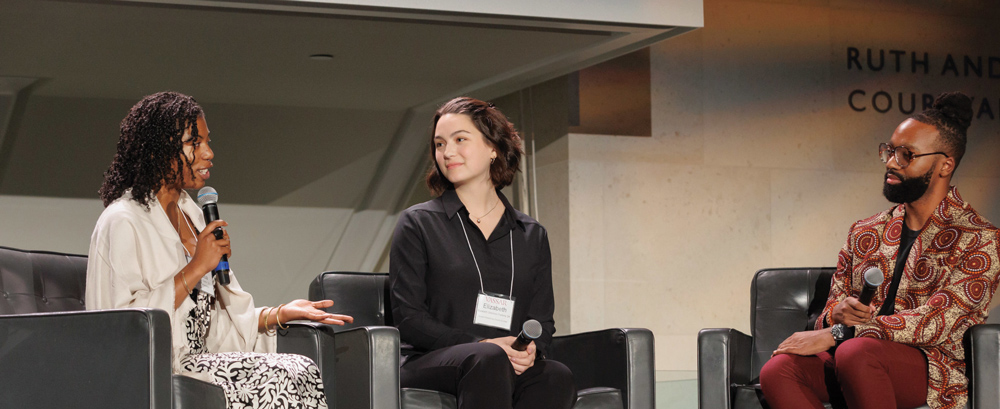
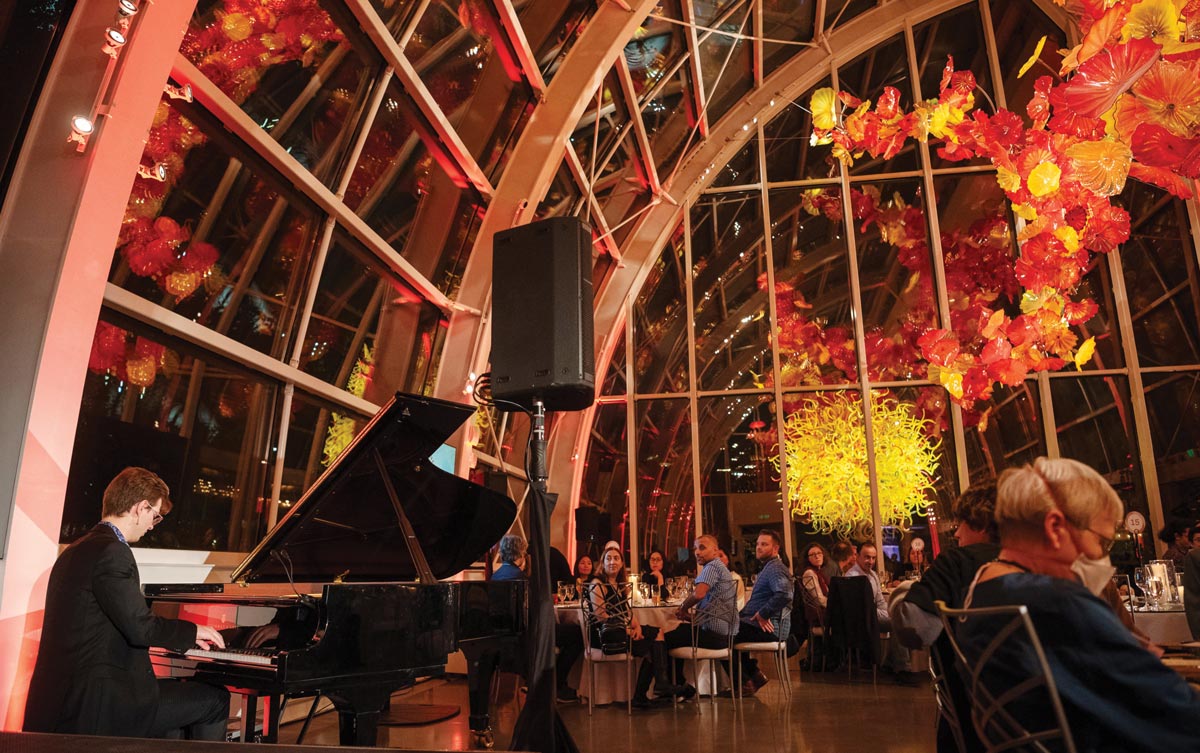
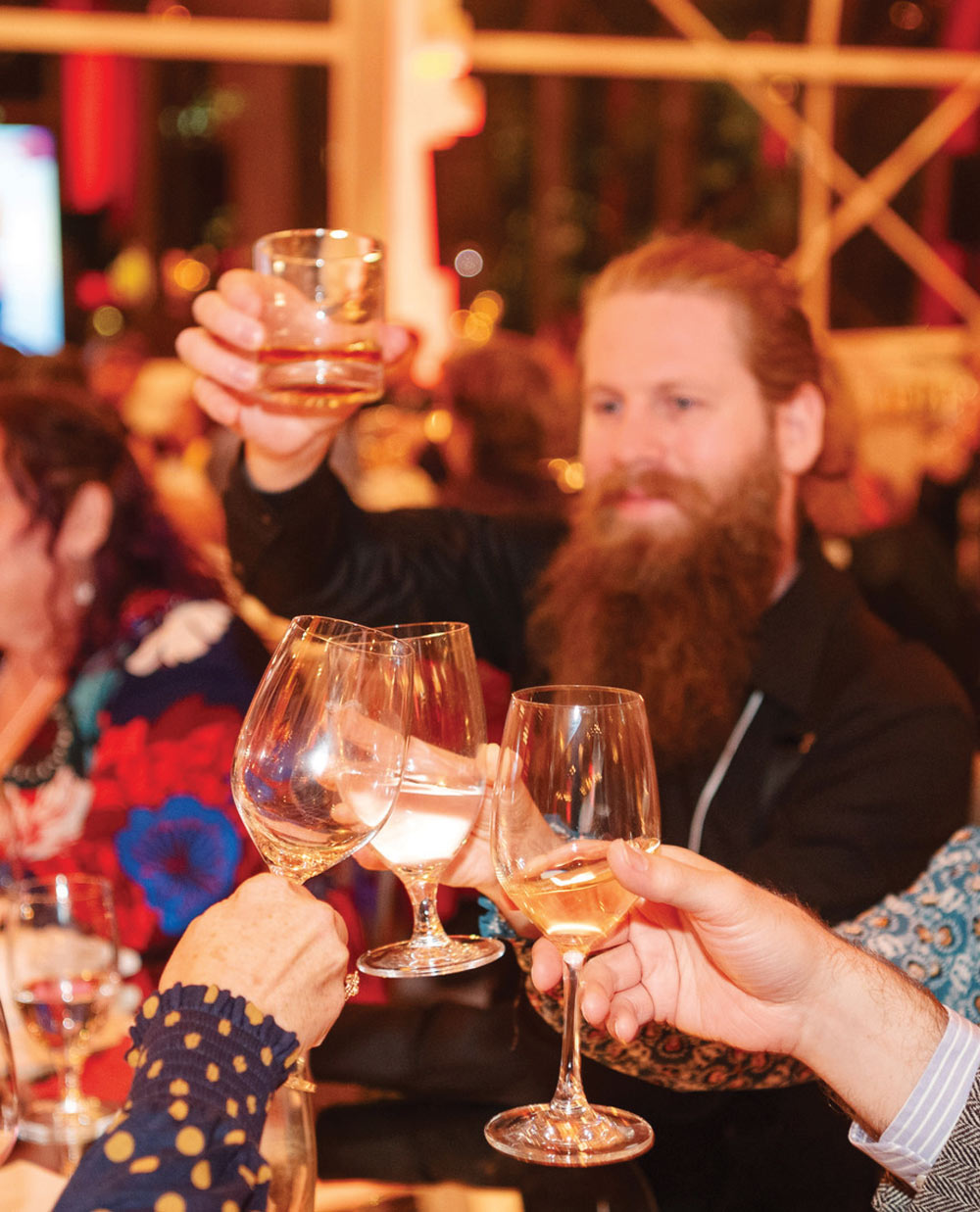
Barbie Hull Photography
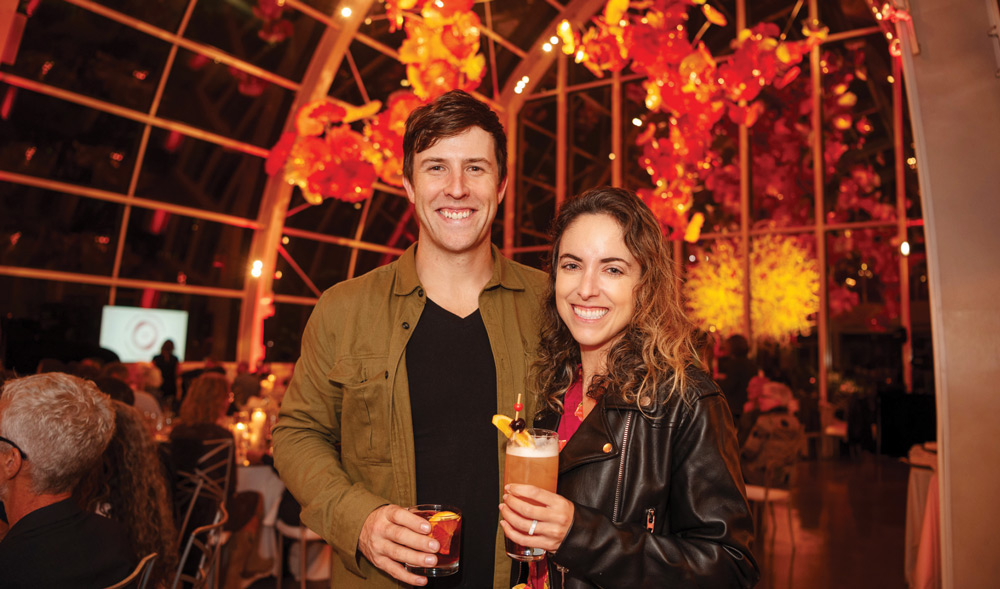
Seattle, Chihuly Garden and Glass

West Palm Beach, the Norton Museum of Art
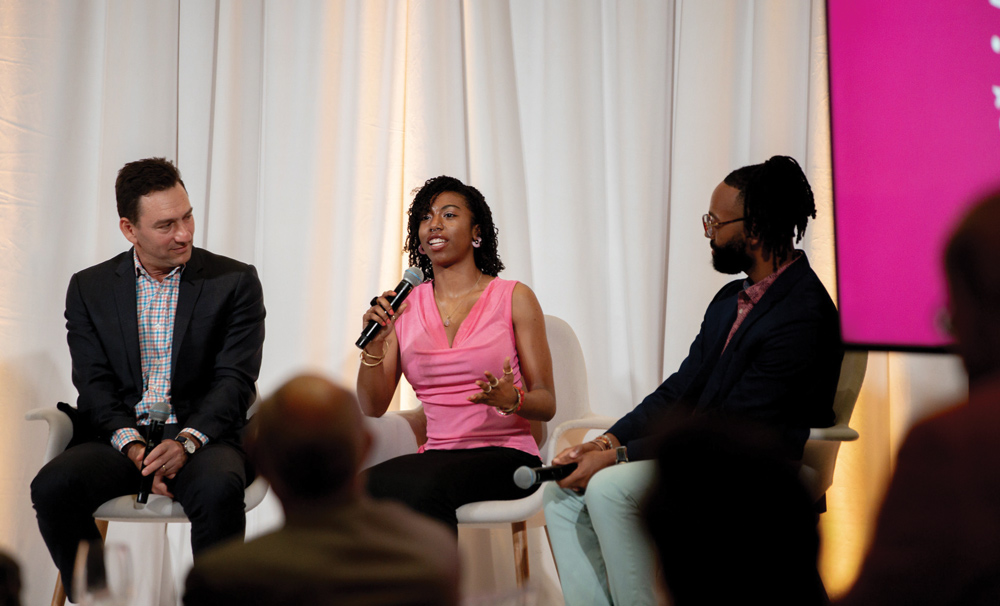
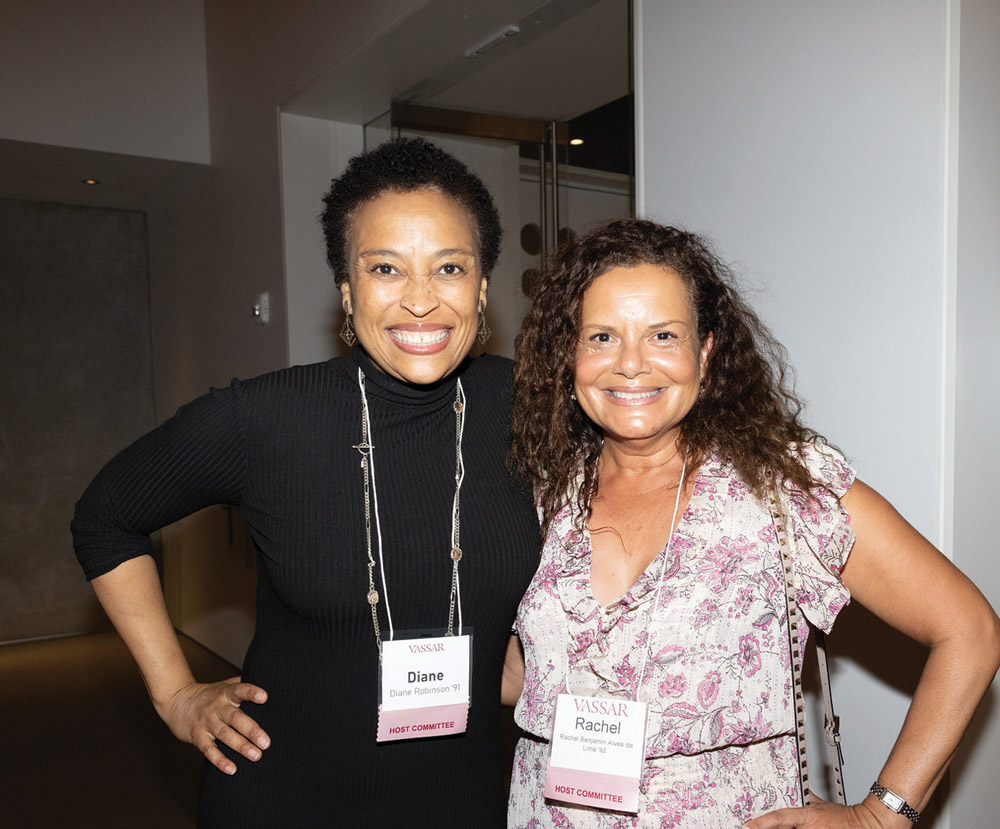
Melanie Morfa


Melanie Morfa
Chicago, Art Institute of Chicago
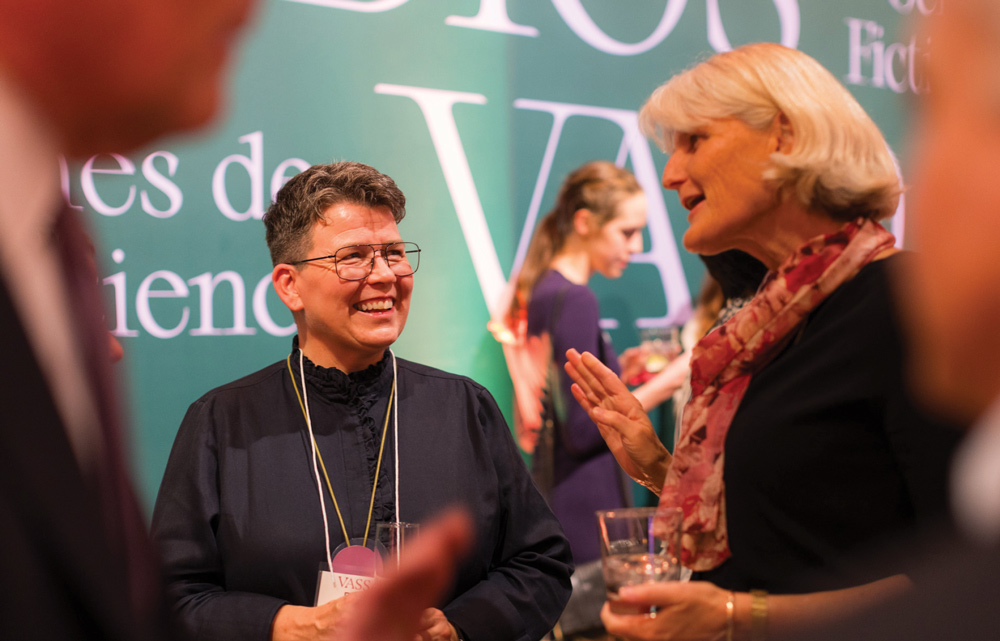
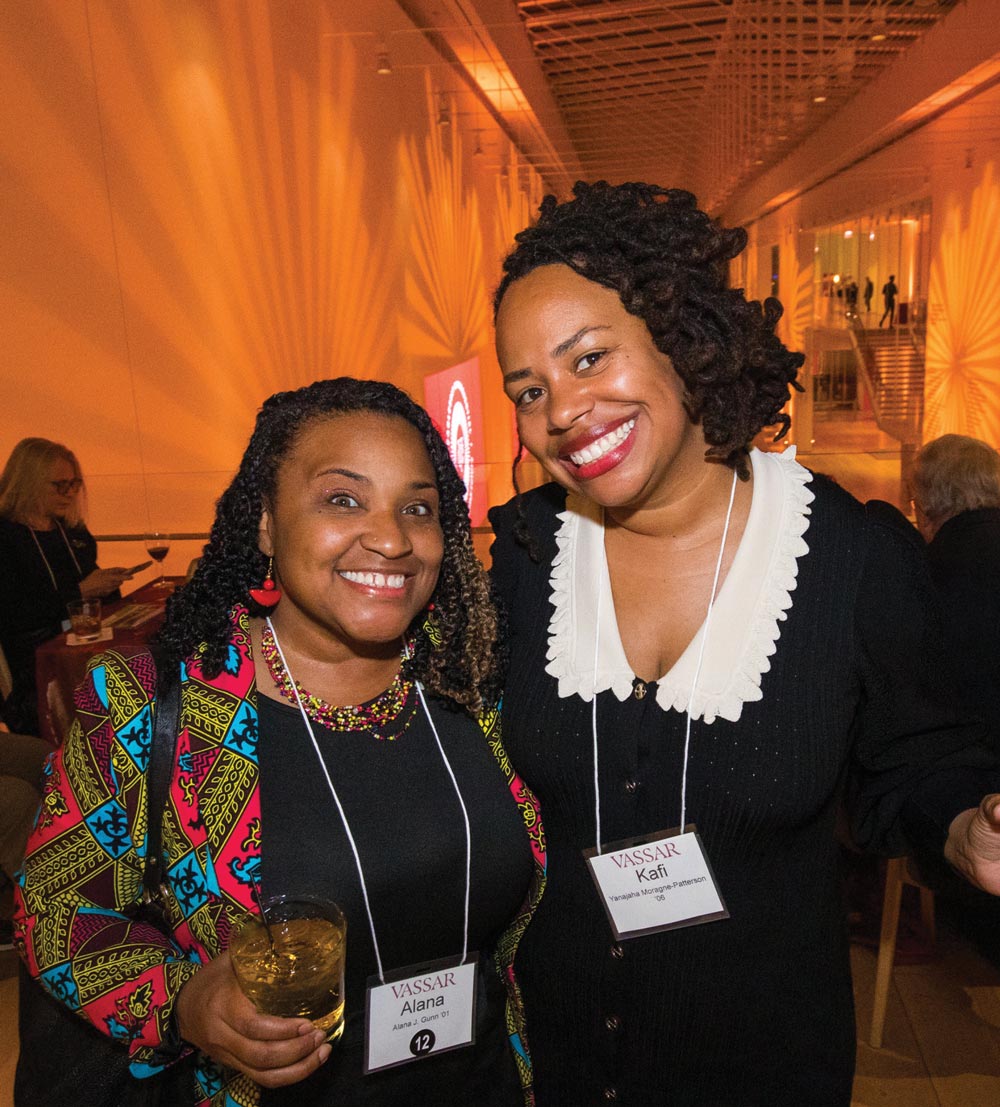
Sheri Witko Photography
Sheri Witko Photography
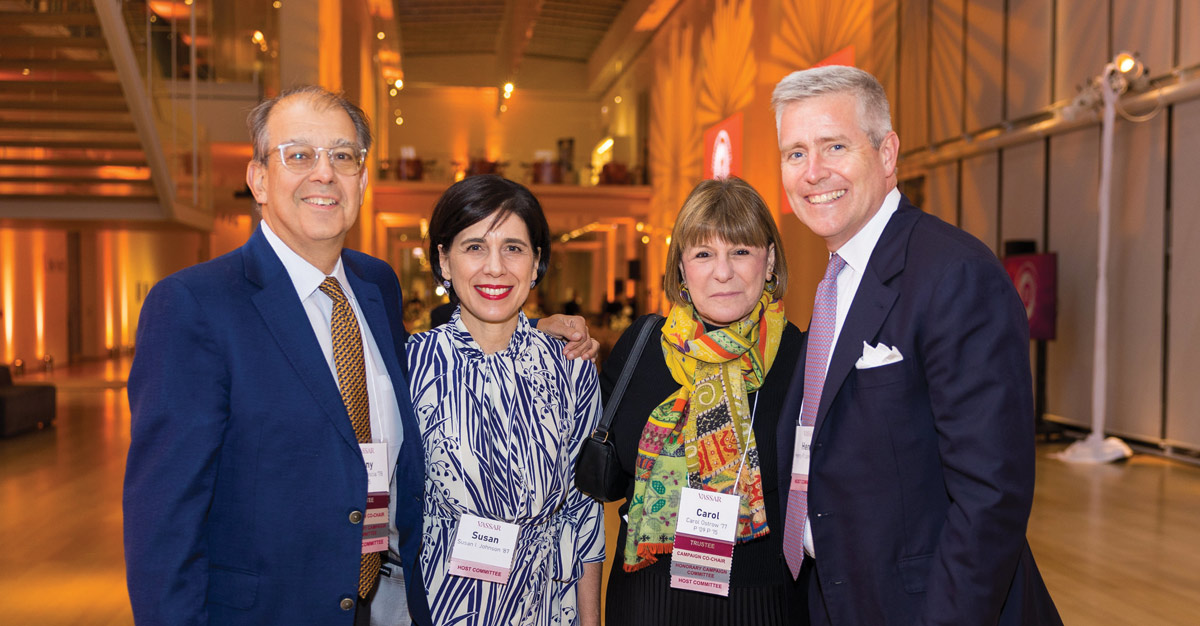
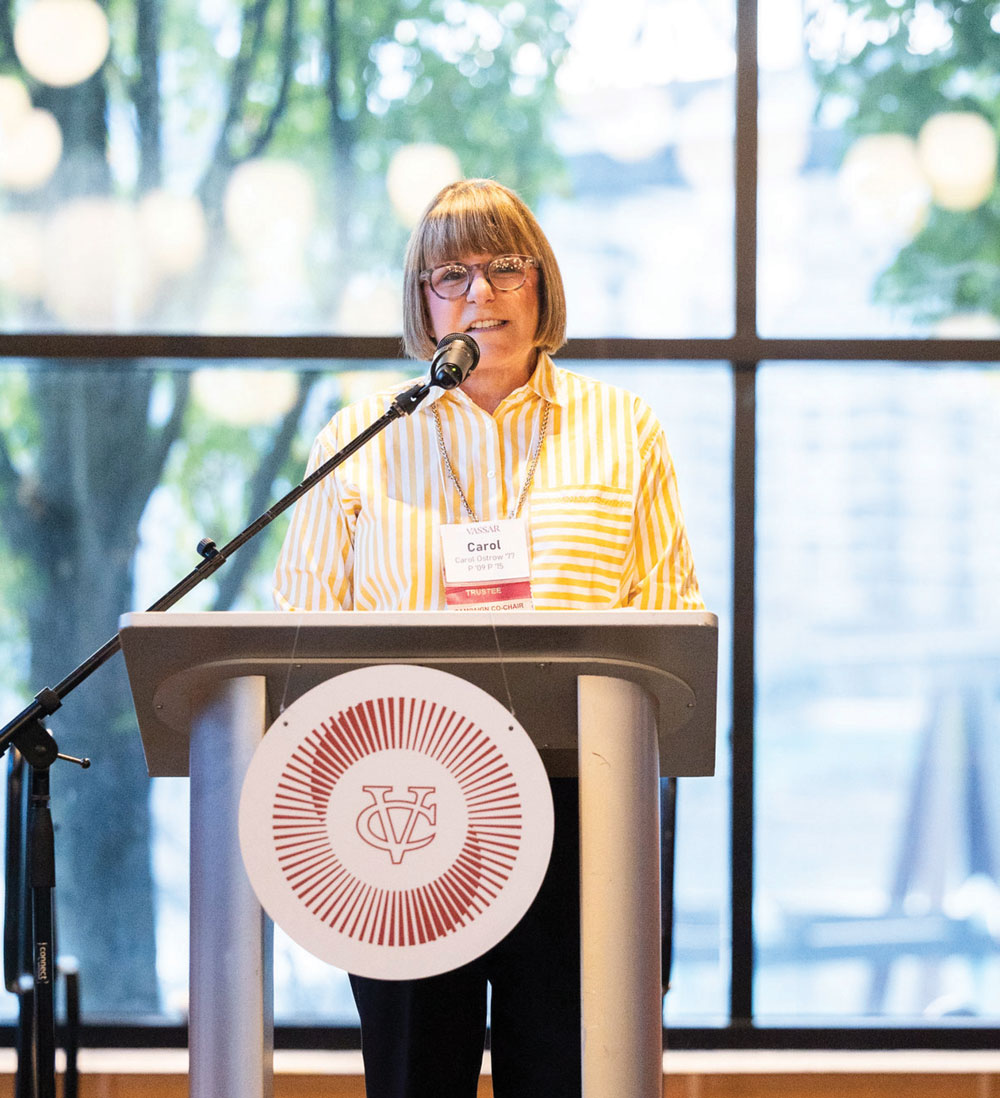
Tom Cook
Portland, Oregon Museum of Science and Industry
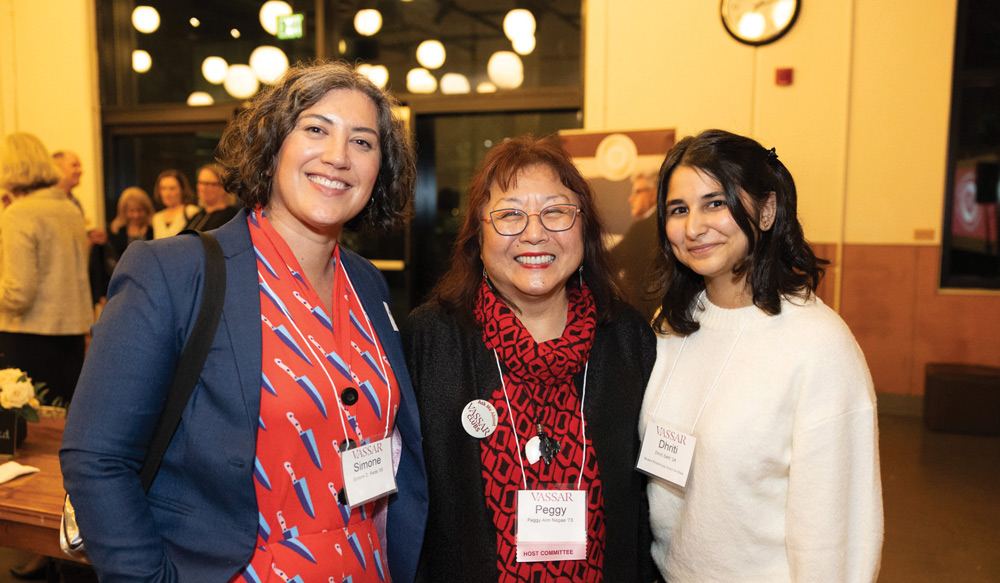
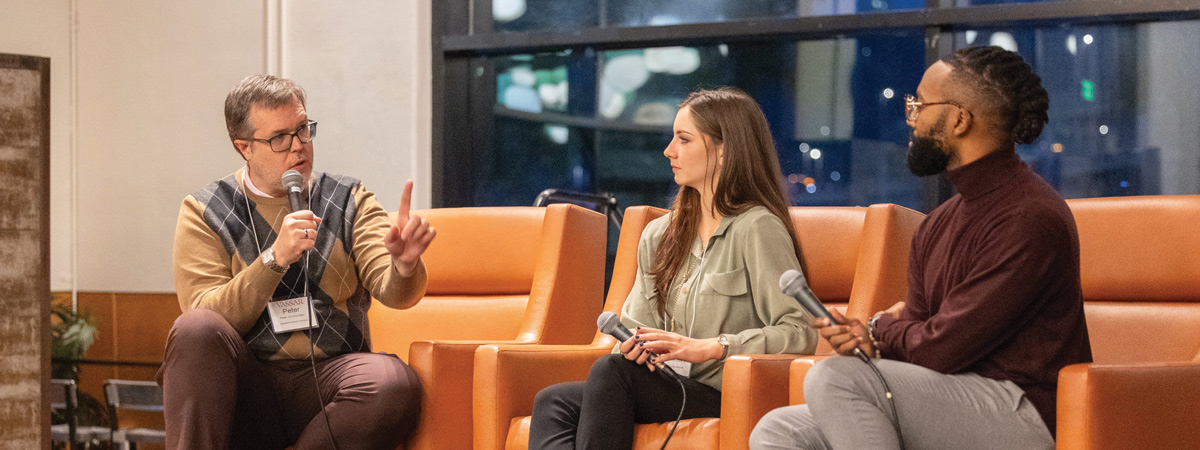
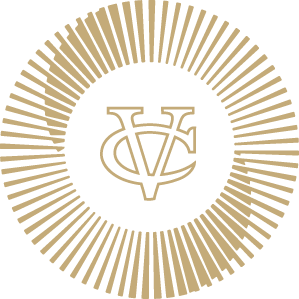
Learn more about the Fearlessly Consequential campaign by visiting campaign.vassar.edu.
-
FICTION
My Beloved Life
by Amitava Kumar, faculty
Knopf, 2024 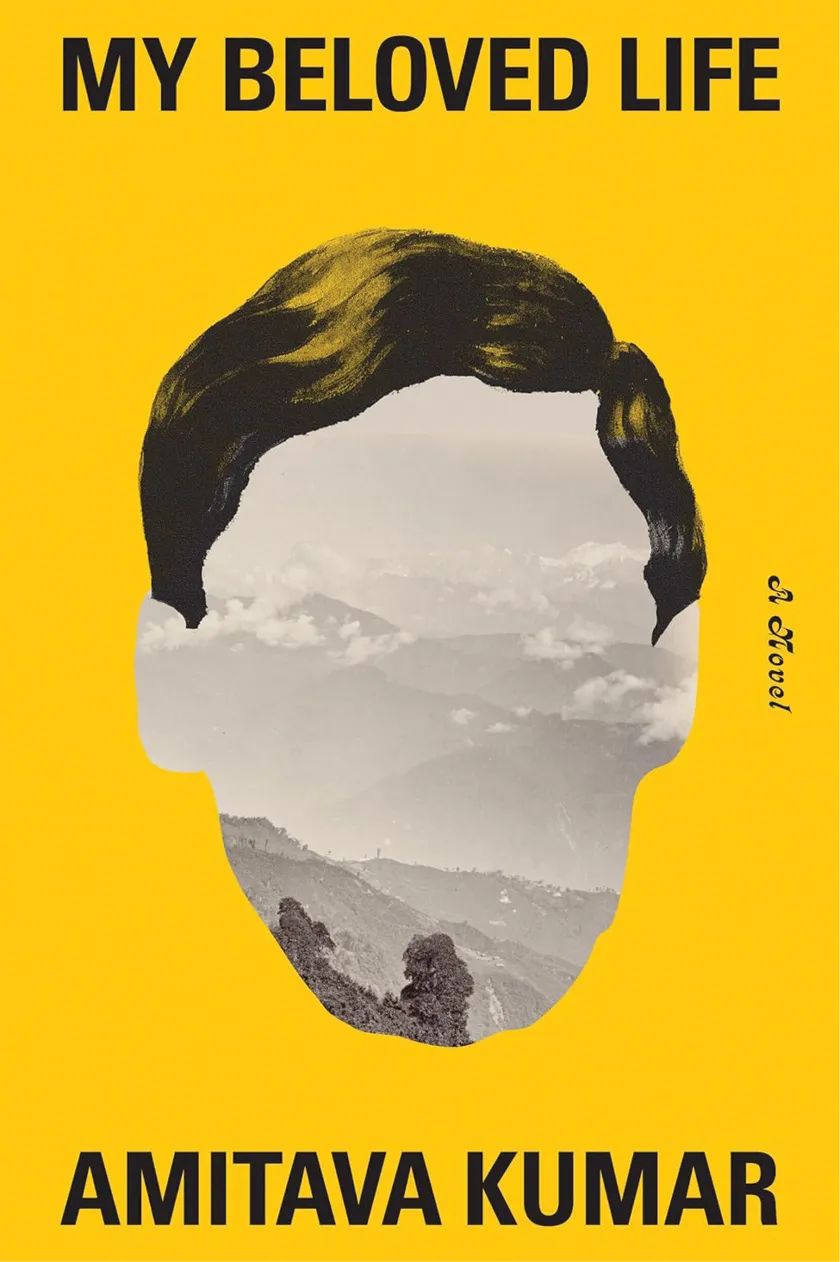
- In The Garden Behind the Moon
by Alexandra Chan ’96
Flashpoint, 2024 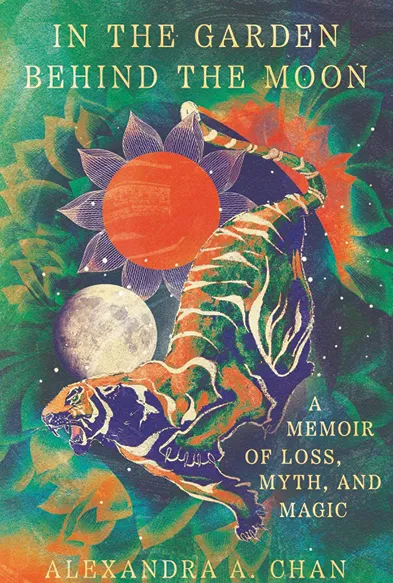
- Trembling
by Karen Petersen ’76
Kelsay Books, 2024 - The Turnbull Murders
by R. J. Koreto ’84
Level Best Books, 2023 - Choose This Now
by Nicole Haroutunian ’03
Noemi Press, 2024 - Perfection and Other Stories
by Cecelia Burokas ’67
WOW! Press, 2024 - Working in the Dark
by Cecilia Burokas ’67
WOW! Press, 2024 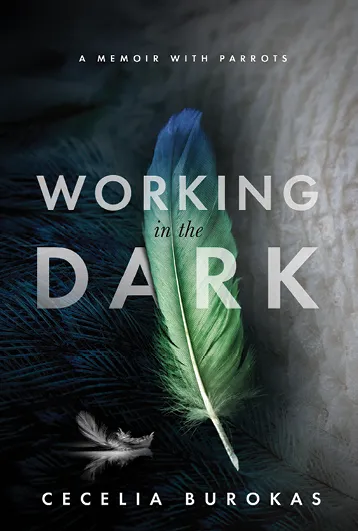
- The Nansen Factor
by Alexandra Grabbe ’69
Academic Studies Press, 2024 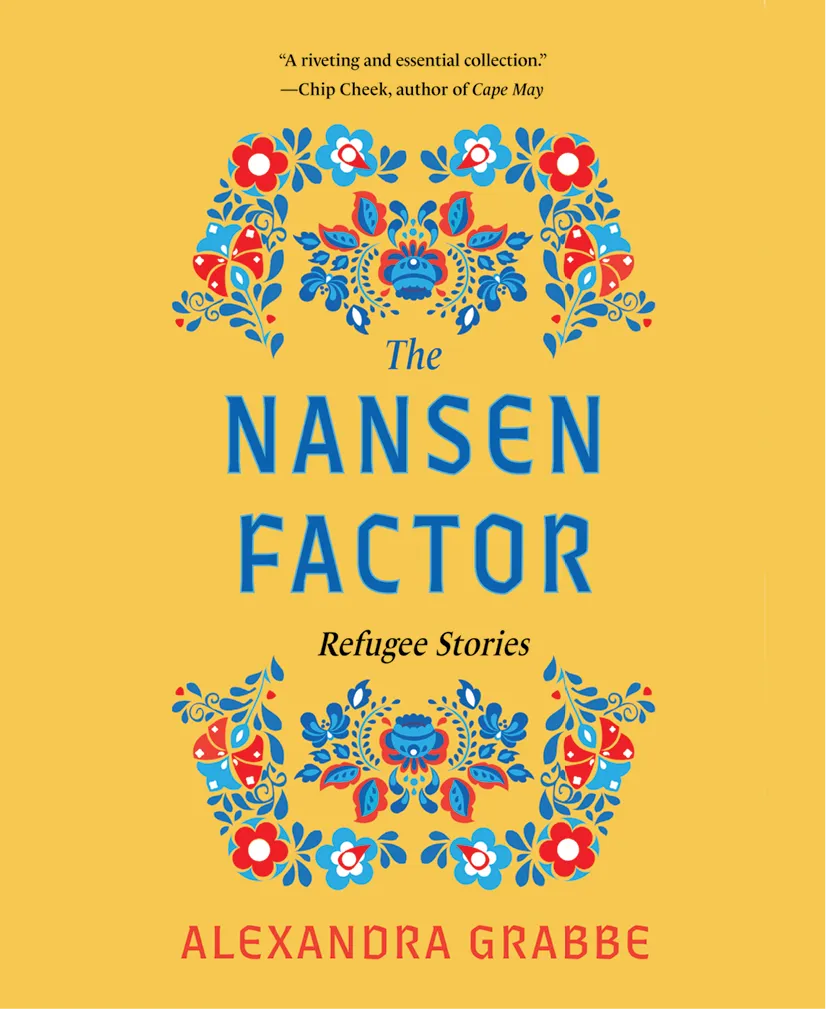
-
NONFICTION
Migrant Aesthetics
by Glenda R. Carpio ’91
Columbia University Press, 2023 - Easy in Press: A Productive Approach to Hiring a Good Manager
by Alan J. Cohen ’72
Atmosphere Press, 2023 - Academic Belonging in Higher Education
by Erendira Rueda & Candice Lowe Swift, faculty
Routledge, Taylor & Francis Group, 2024 - Say, Listen: Writing as Care
by Kimberly Williams Brown, faculty
Small Press Distribution, 2023 - Belief and Politics in Enlightenment France
by Mita Choudhury, faculty & Daniel Watkins
Liverpool University Press, 2019 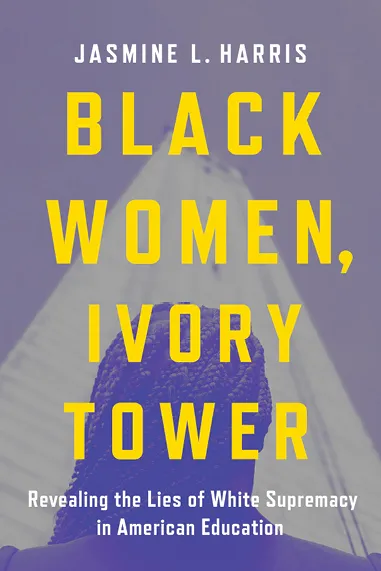
- Black Women, Ivory Tower
by Jasmine L. Harris ’05
Broadleaf Books, 2024 - Waiting for the Cool Moon
by Wendy Matsumara ’99
Duke University Press, 2024 - GETTING IN: NYC Club Flyers from the Gay 1990s
by David Kennerly ’82
Daken Press, 2023 - Patriots, Priests, and Rebels
by Randy Ruffin ’66
Xenon Books, 2023 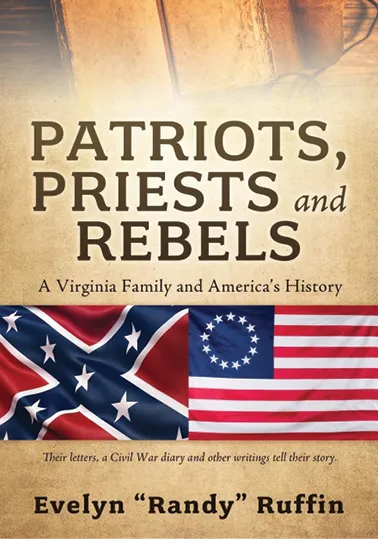
- The Breakthrough Years
by Ellen Galinsky ’64
Flatiron Books, 2024 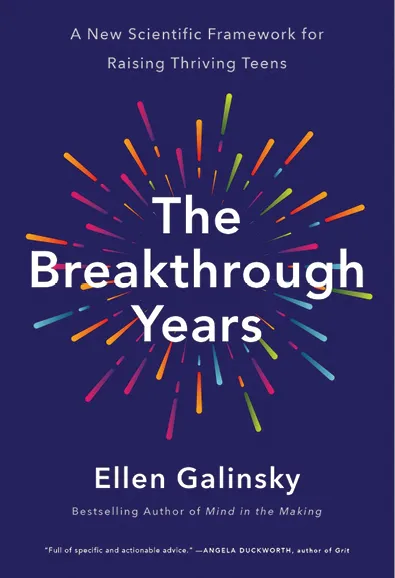
- Spaces on the Spectrum: How Autism Movements Resist Experts and Create Knowledge
by Catherine Tan, faculty
Columbia University Press, 2024 -
POETRY
One Step at a Time
by Alice Kavounas ’66
Shearsman Books, 2023
Letter from the President of the AAVC
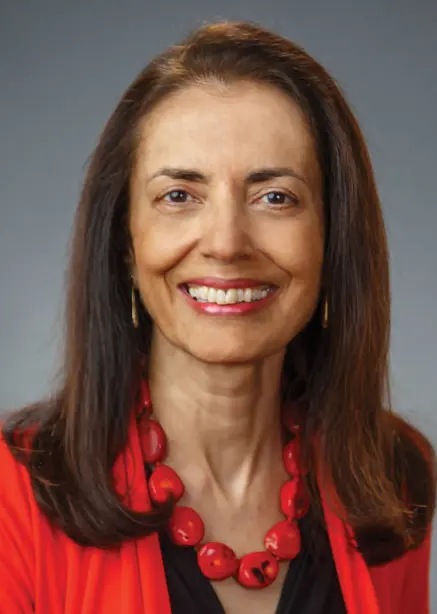
Having just returned from trustee and AAVC board meetings, I am really excited about and invigorated by the many brilliant facets of Vassar—the campus, the students, the faculty, the administration, and the leadership—that make it so very special. And the breadth and diversity of programs is breathtaking.
While we were there, the Inclusive History Commission presented an extraordinary program with student research on Reverend Howard Thurman and his legacy at Vassar. Former AAVC President Billie Gaines ’58 introduced the program with her reminiscences of the Chapel and the striking presence of Reverend Thurman, and I hope you might find time to watch it on the Vassar website.
In January, we celebrated the 10th Anniversary of the signature Sophomore Career Connections program. We are grateful to Carol Ostrow ’77, P’09,’15 and her family for their continuing partnership and funding for this amazing program. The Center for Career Education along with Advancement staff organized another stellar gathering for mentorship and networking that has become a cornerstone of the College’s efforts in this arena. This year, we had record attendance with 270 students and 103 alums and parents participating.
Sophomore Career Connections is important not just because it provides a remarkable opportunity for students to meet and engage with alums to learn and build connections, but it also reengages alums with Vassar and our incredible students. We often hear how SCC is what reconnected alums with the College, and how much they value their experience as mentors. So many of you are also involved in other career-related programs throughout the year, and your participation is invaluable and so deeply appreciated.
I must confess to some envy as I learn of the many opportunities our Career Education team offers our students for internships, summer jobs, fellowships, and post-graduation opportunities. They do a superb job of supporting our students in finding next steps throughout their college journey. AND, I would like all of you to know that they also support alums in career changes and searches—and would encourage you to reach out if you would like some advice.
The Bartlett Center for Admission and Career Education will be such a dazzling and significant addition to our campus and a wonderful home for these activities, but nothing is impeding the fabulous activities and opportunities being offered on campus. This is far beyond the Vassar I knew, and the one many of you knew, and I am so very proud of the extraordinary progress we have made and the future that awaits our students.
My very best wishes,

aavcpresident@vassar.edu

- Monica Vachher ’77, Illinois
President and AAVC Trustee - Brian Farkas ’10, New York
Vice President and AAVC Trustee - Tyrone Forman ’92, Illinois
Vice President and AAVC Trustee - Anne Green ’93, New Jersey
Nominating and Governance Committee Chair - Katrine “Cage” Ames ’69, New York
- Gail Becker ’64, New Jersey
- Maybelle Taylor Bennett ’70, Washington, DC
- Alexandria Dempsey ’09, California
Class Engagement Committee Chair - Patrick DeYoung ’18, California
AAVC Trustee - AC Dumlao ’13, New York
- James Estrada ’13, Michigan
Alumnae House Committee Chair - Justin Hergianto ’04, New York
Communications Advisory Committee Chair - Delia Cheung Hom ’00, Massachusetts
AAVC Trustee
Diversity, Equity, and Inclusion
Ad Hoc Committee Chair - Peggy Ann Nagae ’73, Oregon
- Katherine “Kat” Mills Polys ’93, Virginia
Vassar Fund Committee Chair - Amy Pullman ’71, Virginia
Alumnae/i Recognition Committee Chair - Chip Reid ’77, Washington, DC
- Sheryl Smikle ’81, Georgia
- Andrew Solum ’89, United Kingdom
Clubs Committee Chair - Keith St. John ’81, New York
- Alisa Swire ’84, New York
- Carlos Hernandez Tellez ’14, Brazil
Career Networking Committee Chair - Ellie Winter ’18, Rhode Island
Student and Young Alumnae/i Engagement
Ad Hoc Committee Chair - Lisa Tessler
Associate Vice President and
Executive Director of the AAVC - Patricia Lamark
Program Associate, Alumnae/i Engagement
Vassar Remembers
June Jackson Christmas ’45-4
une Jackson Christmas ’45-4, a groundbreaking psychiatrist and ardent supporter of the Vassar community, died on New Year’s Eve at age 99. Her contributions to the field of mental health and to the Vassar community were vast and deep.
Throughout her career, Dr. Christmas made a significant impact on improving mental health services for vulnerable people. She founded the Harlem Rehabilitation Center, a nationally recognized program; served as principal investigator on research projects for the National Institute of Mental Health; led New York City’s mental health agency under three mayors; and led the transition of the U.S. Department of Health, Education, and Welfare for Jimmy Carter.
Eric Wilson ’76, who co-chairs African American Alumnae/i of Vassar College (AAAVC) with Gwen Salley ’81, recalled that despite these accomplishments, “Dr. Christmas was as regular as they came. Humble, personable, so totally lacking in pretension as to be considered old-school cool, and beyond brilliant.”
Dr. Christmas was one of the first students who openly identified as Black admitted to Vassar in the late 1930s and early 1940s. (She had heard that Vassar was accepting Black students through the Episcopal church she attended in Cambridge, MA.) After graduating from Vassar with a degree in zoology, she went on to earn her medical degree from Boston University School of Medicine. She was one of only seven women in her Boston University class.
“We outright revered her,” said Richard Roberts ’74. “It was not just out of the African-inspired custom of elder reverence. It was more than that. She demonstrated Black excellence navigating the entrails of a nation born in bigotry, all the while maintaining charity for all and holding a head high. What a marvelous example for all who followed.”
Dr. Christmas taught as Clinical Professor of Psychiatry at the Columbia University College of Physicians and Surgeons, was Professor of Behavioral Science at the City University of New York School of Medicine, and served as Resident Professor of Mental Health Policy at the Florence G. Heller Graduate School for Advanced Studies in Social Welfare of Brandeis University. In addition, she was a founder of the Urban Issues Group, a research institute, and co-founder of the American Psychiatric Association Committee on Black Psychiatrists. Dr. Christmas was also the first Black woman to serve as President of the American Public Health Association.
During a conversation focused on activism with author Joshunda Sanders ’00, part of the AAAVC Triennial in 2015, Dr. Christmas talked about how her experiences with discrimination had stoked her activism. In one instance, she was forced to ask a White student to book accommodations for a visitor after being denied a room. In another, she and fellow students staged a protest after being denied entry to a roller-skating rink. She wrote about such differential treatment as a writer for the Misc.
Dr. Christmas noted that she was pleased to work alongside a mixed group of students to protest injustice. “I realized that to believe in change, you don’t have to be brown or black or tan—it’s what’s in your mind. So we did a lot of educating people, going to meetings in New York City, going to meetings up here, and going down to the Catharine Street Center in the Black neighborhood trying to change minds.”
At Vassar, Dr. Christmas served as a three-time trustee and as a President’s Distinguished Visitor. She received an Alumnae/i Association of Vassar College (AAVC) Distinguished Achievement Award in 2003. Additionally, Vassar’s Africana Studies Program created the June Jackson Christmas Prize for Academic Excellence in Africana Studies, which it has awarded annually since 1995.
“Dr. Christmas made an immeasurable, positive impact on the world and on Vassar,” said President Elizabeth H. Bradley. “She was an intrepid pioneer, brilliant leader, and fierce health advocate. She was also a caring and beloved member of our community. She will be greatly missed.”
Karen Clopton ’80, who spearheaded the project Buildings and Belonging: Mapping the African American Experience at Vassar College Since 1861, which presents the history and contributions of Blacks on campus, said Dr. Christmas was “an integral contributor” to the project, and “an amazing fount of knowledge.”
Often called the “Queen Mother” of Vassar’s African American community, Dr. Christmas was deeply involved with and supportive of AAAVC and formed lasting bonds with many of its members. Patricia James Jordan ’72 said, “I thank God for the valuable, countless ways that June Jackson Christmas significantly influenced and generously supported student populations, her beloved AAAVC, and the entire Vassar community.” Jordan noted that Dr. Christmas encouraged and guided her to a doctoral program in clinical psychology—almost 20 years after Jordan graduated from Vassar.
“She influenced many of us who came to know her, including some seven decades of students and alums,” Pat Neely ’75 said. “Dr. Christmas’s presence could alter the energy in a room. She was grounded and had an exceptional ability to share her knowledge and wisdom with all of us.”
Dr. Christmas is survived by her daughter, Rachel, and her son, Gordon, as well as several grandchildren. Her husband Walter and son Vincent preceded her in death.
-
1937
Marie Louise Goebel Saunders
April 7, 2012 -
1937
Leslie Wilson Sherman
February 10, 2001 -
1941
Charlotte Feldman Schoenberg
April 29, 2024 -
1942
Judith Lieberman Pestronk
April 15, 2024 -
1943
Mary-Elizabeth Schlosser Jacques
April 26, 2024 -
1944
Mary Elinore Turner Davies
January 25, 2024 -
1944
Laura Ecker Ludwig
March 23, 2024 -
1944
Carolyn Murray
November 13, 2006 -
1945-4
Margaret Schiff Enderlein
April 23, 2018 -
1945
Fanny Davis Diehl
February 7, 2024 -
1945
Margaret Gresham Livingston
May 20, 2024 -
1946
Donald Knauss
April 10, 2008 -
1946
Mary Love Lehmann
March 8, 2024 -
1946
Jeannette Terrell Nichols
March 28, 2024 -
1946
Nancy Gravem Phillips
April 1, 2024 -
1946
Marion Knauss Poynter
April 3, 2024 -
1946
Susan Hawkes Spencer
April 2, 2023 -
1947
Grace Ward Boulton
February 23, 2024 -
1947
Marian Morton Brown
April 29, 2024 -
1947
Mary Anna Culleton Colwell
May 13, 2024 -
1947
Joan Stanley French
March 26, 2021 -
1948
Deborah Donnelly Goltz
April 2, 2024 -
1948
Joan Allen Kastner
August 10, 2021 -
1948
Nancy Collins Rubino
April 4, 2024 -
1948
Priscilla Vance Schantz
January 1, 2024 -
1948
Bruna Norsa Taranta
November 10, 2023 -
1949
Lilla Blumenthal Cooper
March 15, 2024 -
1950
Elizabeth Bachmann Maxon
March 19, 2024 -
1950
Patricia Osborne Smith
March 6, 2024 -
1950
Martha Patt Thompson
March 24, 2023 -
1950
Mary Izant White
March 12, 2024 -
1951
Nancy Tasman Brower
March 25, 2024 -
1951
Clifford Henderson Porter
April 10, 2024 -
1951
Nancy Purdy
January 31, 2024 -
1952
Mary Bush Clement Estabrook
April 15, 2024 -
1952
Norma Milchin Warner
January 21, 2023 -
1953
Frances Adams Becker
October 5, 2023 -
1953
Alice Fenton Kuhns
April 11, 2024 -
1953
Phyllis Larkin
December 9, 2023 -
1953
Elizabeth Noble Turner
January 26, 2024 -
1953
Peggy Neumark Weil
March 11, 2023 -
1954
Clare Sewall Ames
February 26, 2024 -
1954
Sylvia Snoke Evans
February 18, 2024 -
1954
Oldriska Penizek Hutcheson
October 17, 2023 -
1955
Nancy Crapo Alger
February 20, 2024 -
1955
Adrienne Cohen Bromberg
April 27, 2020 -
1955
Heath Dillard
May 8, 2024 -
1955
Eva Jones
December 27, 2002 -
1955
Lorilee Burkhardt McDowell
May 8, 2024 -
1956
Eileen Eichel Berkon
April 21, 2023 -
1956
Hildegard Rose Flinchbaugh
March 13, 2024 -
1956
Ann Lynch Heuer
December 11, 2021 -
1956
Faith Wisner
June 1, 2021 -
1957
Aurelia Garland Bolton
April 26, 2024 -
1957
Elizabeth Ann Jones-Glaeser
May 22, 2024 -
1957
Mary Cope Naylor
January 27, 2024 -
1957
Judith Easton Opsahl
February 22, 2024 -
1958
Katharine Ayers
January 1, 2021 -
1958
Agnes Vessey Whitley
April 7, 2024 -
1958
Janice Wood
March 18, 2022 -
1958
Judith Atwood Wright
January 5, 2021 -
1959
Jean Squire Hilliard
April 29, 2024 -
1959
Linda Offenbach Polsby
January 30, 2024 -
1960
Kathryn Wilson DeFord
May 18, 2024 -
1960
Joanne Redmond Denworth
March 1, 2024 -
1960
Nancy Gannett Hurlbut
March 6, 2024 -
1960
MaryRuth Hewitt Sole
March 19, 2024 -
1960
Margo Kaufman Zitin
April 4, 2024 -
1961
Marion Fay Monsen
May 13, 2024 -
1962
Karen Belsheim Olney
March 10, 2024 -
1963
Janet Harrison Hinch
March 6, 2024 -
1963
Marguerite Burton Humphrey
May 29, 2024 -
1963
Sudye Neff Kirkpatrick
March 2, 2024 -
1964
Claire Sheahan
March 3, 2024 -
1965
Deborah Harrah Murdock
March 10, 2024 -
1965
Lynn Gayner Zoll
February 29, 2024 -
1967
Mary Burke Partridge
March 28, 2024 -
1969
Florence Summergrad
February 23, 2024 -
1969
Cynthia Ware
March 28, 2024 -
1970
Paula Lamson Brown
April 24, 2024 -
1970
Christine Thurber Knupp
April 24, 2024 -
1972
Lisa Barbera
July 18, 2022 -
1972
Constance Wells
April 11, 2024 -
1973
Georgia Powell Buchanan
February 9, 2024 -
1974
David Elchanan Gladstone
April 12, 2024 -
1975
Melissa Fanning
April 7, 2024 -
1975
Susan Emily Rollins
July 23, 2019 -
1976
John F. Lumb
May 18, 2024 -
1977
Eli J. Allen
November 16, 2019 -
1977
Yvonne Jones
April 20, 2024 -
1980
Diana Abizaid Cleland
January 27, 2024 -
1980
Neil Samuels
November 10, 2023 -
1980
Valarie Rochester Young
February 13, 2024 -
1981
David R. Smith III
October 19, 2023 -
1983
Cynthia Addeo
April 8, 2024 -
1984
Brian W. Dickson
May 25, 2023 -
1985
Ann M. Chrisman
May 19, 2024 -
1985
Charles V. Walker
March 6, 2024 -
1986
Susan Jenkins
March 5, 2024 -
1987
Jonathan H. Dick
November 14, 2023 -
1987
Laralyn McWilliams
February 5, 2024 -
1989
Philip Merryman
December 1, 2023 -
1994
Pierandrea Bianco
April 5, 2024 -
1995
Shamus O. Smith
April 21, 2024 -
1997
Michael A. Chavez
January 9, 2024 -
1999
Roberto C. Ramos
August 28, 2023 -
2005
Cameron G. Estrich
February 13, 2024 -
2011
Bernadette D. Salem
September 26, 2023 -
2012
Caitlin B. Bull
March 12, 2024 -
Faculty/Staff
Elaine Lipschutz
Founding Member, Education Department
June 2, 2024Carollynn Costella
Research Librarian
July 5, 2024
-
Summer Apartment Rental—Le Marais, Paris
Enjoy the quintessential Parisian lifestyle from our beloved corner of the Marais district. Countless see-and-be-seen terraces, boutiques, gourmet shops, museums, pre-revolutionary mansions, and monuments are a stone’s throw. Facile connections via bike and public transportation. Architect-designed 3rd-floor studio apartment has double-height windows overlooking a quiet courtyard. Sleeps four in two queen beds (loft and pullout sofa), washer/dryer, Internet, microwave, induction, ample closet space, hardwood floors. Available 15 June – 25 August or for the Olympic Games.
Kassandra Frua De Angeli ‘10
kassandra.fruadeangeli@sciencespo.fr -
Condo Rental, French Quarter
Situated on a quiet and central block in New Orleans’s Vieux Carre, this cozy historic Creole cottage is perfect for a single or a couple looking to explore all the music, food, art, and culture New Orleans has to offer. Start your morning enjoying your chicory coffee in the interior courtyard and end your night sipping a Sazerac under a gas lamp on the front patio. Channel your inner Anne Rice or Tennessee Williams in this excellent writer’s retreat. Slide the 12-foot-tall wood pocket doors closed and curl up in a queen bed after a long day of jazz, gumbo, and cemetery tours. Walking distance to various streetcar lines and buses. Washer/dryer, internet, gas stove, utilities included.
Eddie Gamarra ‘94
eddiegamarra@gmail.com -
Historic House in Greenport on Long Island’s North Fork
Charming, historic home in a maritime village on Long Island’s North Fork. A 5-minute walk to town with all amenities; transportation (LIRR, Hampton Jitney, LIE). 3 br/sleeps 5 (2 queen, 1 full), 2 full ba, outdoor shower, cook’s kitchen, gracious dining room, library/study, 2 working fireplaces. Sunroom leads to deck with pergola and water views of Sterling Harbor, large private yard. Internet/cable TV, all utilities incl. Two-week or monthly rental: June $12k, July $16k, August–Labor Day $18k, September $15k. Other times, please inquire. For more information and photos, see vrbo.com (#188841).
-
Fisher Island Club, FL, Rental
Exquisite beachfront condo for rent. 10 minutes to South Beach. 3br/3.5ba, fully equipped with golf cart. Available Apr-Dec.
wpluxuryrealestate.com - –and–
-
Berkshires Vacation Home
Beautiful home in Berkshires near NY/MA border. Gorgeous views 2 hours and 15 mins from Manhattan. Quick access to five ski areas. 4br/3.5ba, heated
pool, jacuzzi, sauna, pond, ping pong, bikes, gym equipment. 7 acres close to Hudson, Lenox, Great Barrington, and Stockbridge. Available Dec-May.
fourseasonluxuryatsummerhill.com -
French Provinces: Rent Our Lovely Rustic Farmhouse in Southwestern France
Midway between Dordogne and Lot rivers. Quiet picturesque farming village near Figeac and St. Céré; 45 minutes to Sarlat, capital of the Dordogne Valley; 70km to Cahors and its vineyards. Well located for those interested in pre-history, medieval history, gastronomy, hiking and canoeing. For information, contact
Professor Geoffrey Jehle
845.437.5210, or visit the web page at http://nadal2.objectis.net -
Vassar College Wedgwood Plates
For sale: Wedgwood 1929 Vassar College plates, 15 in perfect condition, two with some age spots on the back. The center of the plate is white, the outer edge a classic Wedgwood pattern in green, and the center is a campus building or scene. The back of each plate includes the Wedgwood stamp, the date, and the name of the building. These were owned by my great grandmother, Mary Belknap Gray, Vassar 1903. Best offer accepted, will ship.
Zoe Finch Totten
978-809-0310For Sale in Catskill MountainsPrime mountaintop land situated in the beautiful Catskill Mountains, minutes from several towns and Ski Windham. May be used for private estate, home development, forestry, hunting, agriculture. Easy access. 139 acres with underground springs, pond, and flowing creek. Call, text, or email.
Premed Advising ServicesJudy Levine, Vassar alum and former medical-school Director of Admissions provides private, personal premed advising. If you or someone you love is headed to medical school or is thinking about it, professional counseling may be just what’s needed to make it happen. It can be a one-time credential check or full support through the long application process.
Coaching: Academic AccountabilityVassar alum with a master’s in psychology from Hunter College, CUNY, offers Academic Accountability Coaching (AAC) for undergraduates. AAC provides a weekly one-to-one check-in. The focus is on study skills and time management. Behavioral strategies for conquering procrastination, test anxiety, and anxiety relief are part of the coaching if the need arises. Most importantly, I seek to help each student find a balance between school and all the other things that undergraduates love to do. I’ve taught psychology for eight years and I know that school can be overwhelming. AAC offers an important support for achieving academic, career, and personal success.
Leila Gastil
lwgastil@gmail.comCareer and Job-Search CounselingVassar alum and experienced career counselor will guide you to a satisfying career path and successful job search. Can meet with you in person in Westchester or NYC, and/or by phone and email. No situation is too difficult!
Expanding the Appeal of Alumnae House
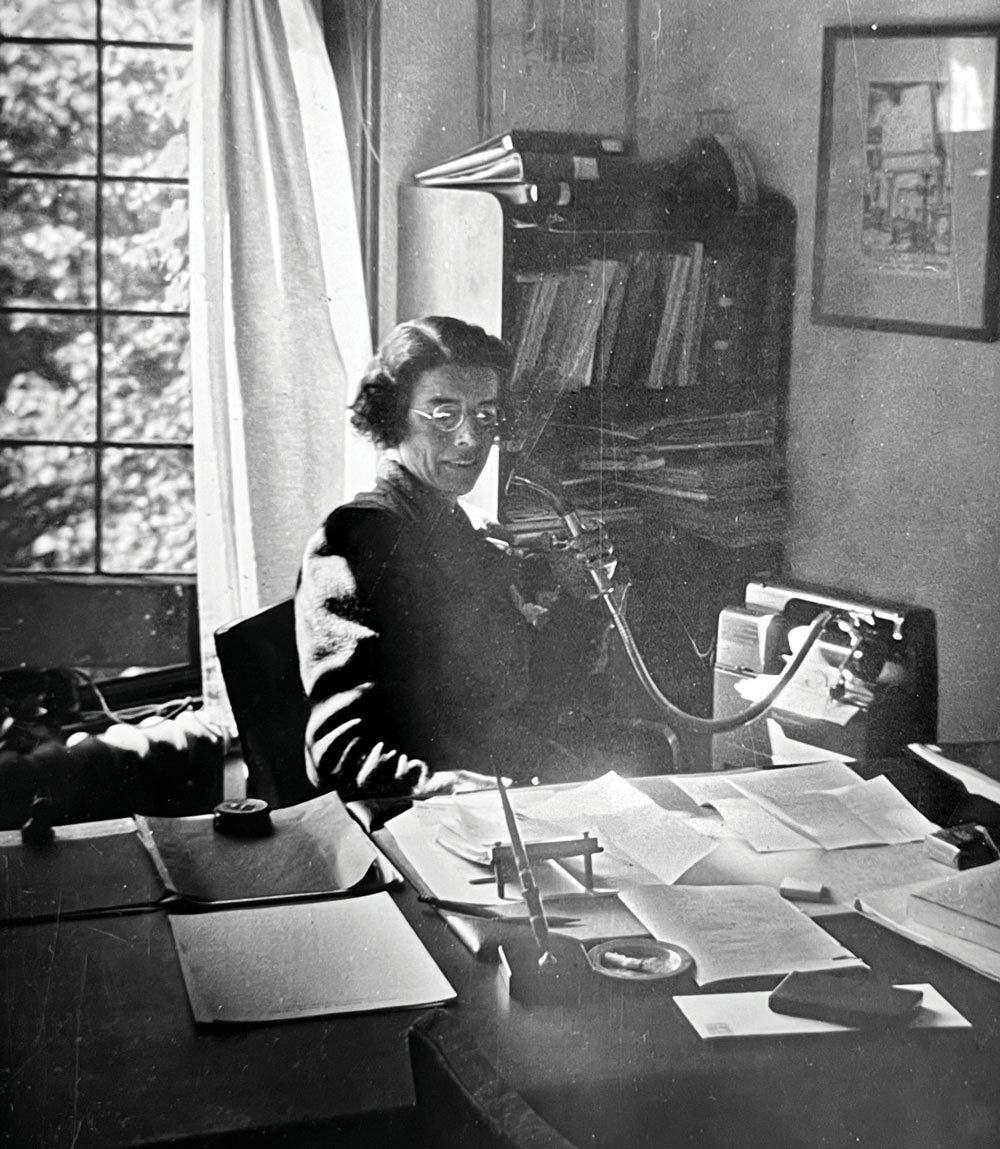
Her joyful extroversion served her well as the Executive Secretary of the AAVC from 1936–1969. During that time, she lived at Alumnae House in what came to be known as “Club 15.” Room 15 was a gathering place. Indeed, wherever Gert went became a gathering place. In a tribute published in the March 1990 issue of the Vassar Quarterly after her death, Susan Getman Abernethy ’63, who had served as Executive Director from 1972–1975, noted that “Gert’s room on the second-floor corner, above the Pub, was where President Sarah Gibson Blanding and her assistant Florence Wislocki ’26 came to relax over Bridge. Issues were aired, information exchanged, lives caught up on, and laughter shared.”
To the many alumnae who came though the College during her time as Executive Secretary, Gert was Alumnae House. As Susan recalled, Gert’s table in the Alumnae House dining room was the center of the action. “Gert sat with her back to the back-terrace window in order to see everyone who entered the room,” she said. “She waved to or got up and hugged alumnae and their spouses and children as soon as she saw them. Everyone across the generations was made to feel welcomed home to Vassar.”
Gert had been hell-bent on changing the perception of Alumnae House from a stodgy place for old ladies to a space where everyone, including current students, would feel welcome. As part of that same tribute in the Vassar Quarterly, Franny Prindle Taft ’42, former AAVC President, noted that, “Going to Alumnae House as undergraduates was one of Gert’s innovations. Before her arrival, it was exclusively for alumnae or for students accompanied by their parents.”
To make the House more attractive to students, Gert urged the College to create a path up from Joss so students could more easily traverse the hill. She even got a beer license that allowed students to enjoy refreshments up at the House—the first step toward creating the Pub. As Franny said, “Gertrude knew full well that if the Alumnae Association seemed like a ‘swell’ place to be, she would be cultivating enthusiastic future supporters. It was insight and instincts like these that Gert brought to the job. Everyone had a wonderful time, building friendships and loyalties.”
Gert’s welcoming presence was especially needed during WWII, when the College, having over-admitted the entering class, asked her to house the overflow at Alumnae House. Constance Dimock Ellis ’38, a Vassar English professor (and later, trustee), recalled that “Gert’s interest in the students and success of their life at the Alumnae House was instant and genuine. She got to know many of them well, and some remained her good friends for years. The student body as a whole, constrained by gas rationing and the unavoidable absence of many young men of their age, soon discovered that Alumnae House was a delightful place to relax, eat, drink, and entertain each other and [as many] of their friends as could manage to get to Poughkeepsie. They crowded the Pub, the terraces, and the living room. Being welcome at the House made a real difference in the quality of undergraduate life at Vassar during the war, and it was Gert’s sympathy and imagination that made it possible.”
According to the Vassar Encyclopedia, the Alumnae Association membership grew from 5,600 to 22,000, and the Alumnae Fund mushroomed from about $10,000 to over $1,000,000 during her tenure. Yet her legacy reflects much more than a growth in alum participation or fund-raising dollars. It was the nature of her warmth, wisdom, and vision that made the Alumnae House a hub for visiting alumnae and their families—and especially a gathering place for students.
